
Empowering, Insightful, Engaging



THE DAWN OF SOLAR+STORAGE TRANSFORMING INDIA'S ENERGY LANDSCAPE




MUST READ





WHAT’S NEW















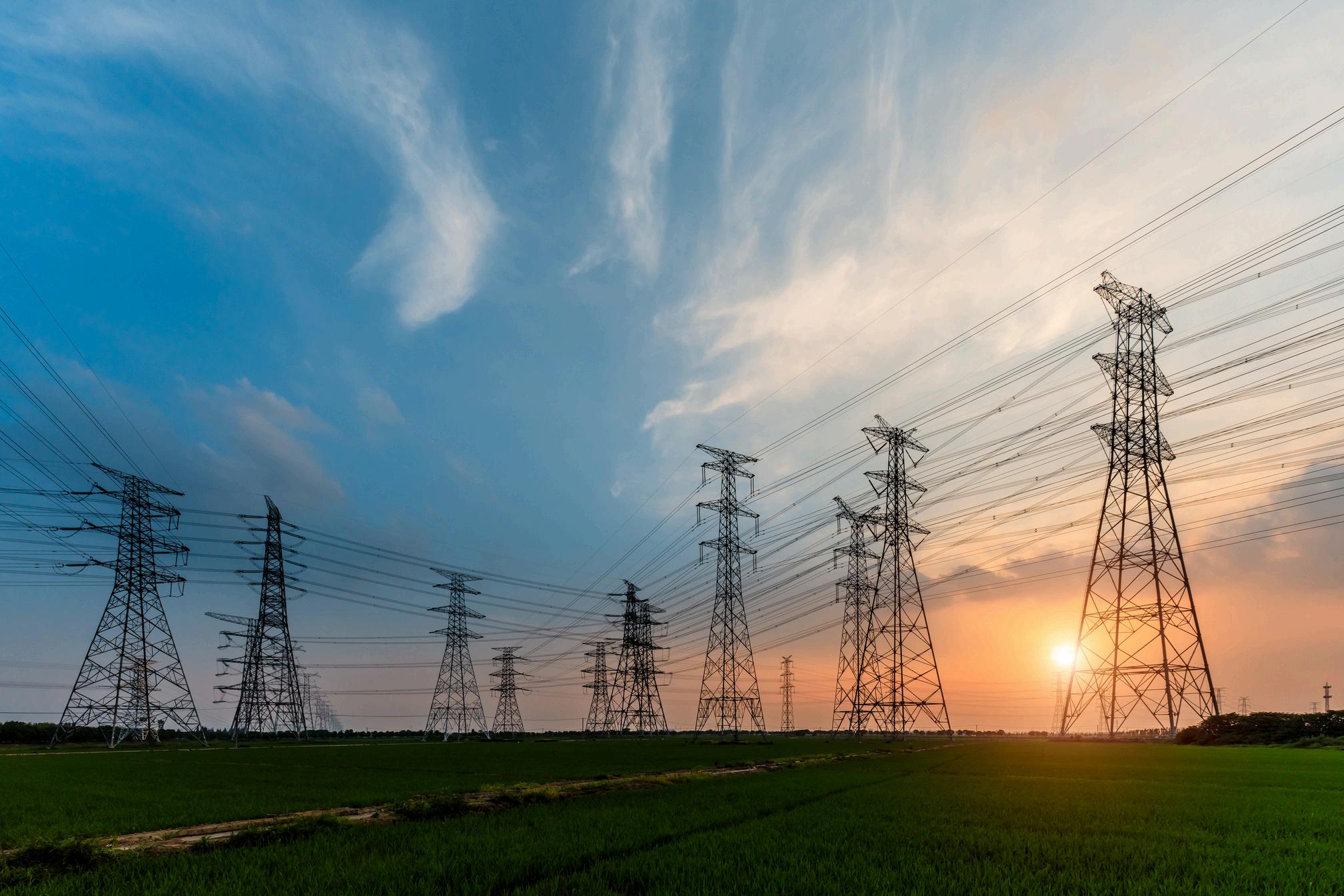


Empowering, Insightful, Engaging







MUST READ





WHAT’S NEW
















In the sprawling landscape of India, where the sun's rays blaze down with relentless intensity, a quiet revolution is underway It's a revolution powered by the fusion of two transformative technologies: solar energy and energy storage Together, these technologies are reshaping India's energy landscape, offering a glimpse into a future where clean, reliable power is within reach for all

The dawn of solar+storage heralds a new era of energy independence, resilience, and sustainability Gone are the days of relying solely on traditional fossil fuels and centralized power plants Instead, communities across India are embracing decentralized solar energy systems paired with advanced storage solutions, empowering themselves to generate, store, and utilize clean energy on their own terms.
One of the most striking aspects of this transformation is its impact on rural communities Historically underserved and often overlooked, these off-grid villages are now becoming hubs of energy innovation With the installation of solar microgrids equipped with battery storage, rural households are gaining access to electricity for the first time, unlocking a world of opportunities for education, healthcare, and economic empowerment
Take, for example, the village of Dharnai in Bihar, where a pioneering solar microgrid project has transformed the lives of its residents Prior to the installation of the microgrid, Dharnai relied on expensive and unreliable diesel generators for power, leaving its inhabitants in darkness for hours on end. Today, thanks to the solar+storage system, Dharnai enjoys round-theclock electricity, empowering its residents to pursue education, start businesses, and improve their overall quality of life
But the impact of solar+storage extends far beyond rural communities In urban centers across India, homeowners, businesses, and industries are embracing rooftop solar installations paired with battery storage to reduce their dependence on the grid and lower their energy costs With advancements in battery technology and declining costs, solar+storage systems are becoming increasingly accessible and affordable, driving widespread adoption among both residential and commercial consumers
At the heart of India's solar+storage revolution lies a confluence of factors driving its rapid growth Government policies and incentives, such as subsidies, tax benefits, and net metering schemes, have played a pivotal role in incentivizing solar energy deployment and encouraging investment in energy storage infrastructure Additionally, technological advancements and economies of scale have led to significant reductions in the cost of solar panels and batteries, making solar+storage solutions more costeffective than ever before
Looking ahead, the future of India's energy landscape is bright with promise As the nation continues its march towards achieving its ambitious renewable energy targets, solar+storage is poised to play a central role in powering this transition. With advancements in smart grid technologies, demand-side management, and grid integration, solar+storage systems have the potential to enhance grid stability, mitigate power outages, and support the widespread adoption of electric vehicles
In conclusion, the dawn of solar+storage is transforming India's energy landscape in profound and unprecedented ways From remote villages to bustling cities, the promise of clean, reliable power is becoming a reality for millions of Indians As we harness the power of the sun and unlock the potential of energy storage, we are not just lighting up homes and powering industries – we are paving the way towards a brighter, more sustainable future for generations to come



Avaada Energy’s ₹50 Billion Investment To Power Maharashtra’s Agriculture With 1,138 MW Solar Capacity
Avaada Energy secures a ‘Letter of Award’ from MSAPL to develop and operate 1,138 MW of decentralized agricultural solar PV projects across Maharashtra by 2025 This initiative, part of MSKVY 2 0, aims to solarize 30% of agricultural feeders by 2025, endorsed by Maharashtra’s Deputy Chief Minister, Shri Devendra Fadnavis The project promises reliable daytime power for irrigation, creating 2,500 jobs and contributing to rural prosperity and sustainable energy solutions
A recent study conducted by Climate Risk Horizons (CRH) reveals that West Bengal could save up to ₹62,000 crore over the next decade by shifting from coal-based thermal power to renewable energy sources This move could significantly contribute to India’s ambition to achieve net-zero emissions. Analyst Vishnu Teja highlighted that West Bengal is currently missing out on a lucrative opportunity by not prioritizing renewable energy, which could bring substantial economic benefits to the state and its electricity consumers.
ReNew Energy’s Possible Divestiture Of 350 MW Solar Projects To Sembcorp
ReNew Energy Global Plc is reportedly in discussions with Singapore’s Sembcorp Industries Ltd for the sale of its solar energy projects, which have a total capacity of 350 MW. The deal is estimated to be worth approximately $241 million at the enterprise level and $121 million in equity, according to sources familiar with the matter
Alpex Solar Wins Orders Worth ₹43.70 Crore For 1,434 Solar Water Pumps In Haryana Under PMKUSUM Scheme
Alpex Solar Limited has secured significant orders from the Department of New & Renewable Energy Haryana (HAREDA), under the Pradhan Mantri Kisan Urja Suraksha evam Utthaan Mahabhiyan (PM-KUSUM Scheme), for the provision of 1,434 solar water pumping systems These systems, aimed at bolstering sustainable agricultural practices, will be installed across Haryana. The company, based in Noida, received two major orders The first, valued at ₹26 49 crore, involves the installation of 845 solar water pumps. The second order entails setting up 589 pumps with a contract value of ₹17.21 crore. These initiatives fall under the PM Kusum scheme’s Component-B, focusing on replacing traditional diesel pumps to enhance the efficiency of irrigation in off-grid areas.
Serentica Renewables Clinches ₹3500 Crore External Commercial Borrowing For 530 MW Round-the-Clock Renewable Energy Project In India
Serentica Renewables, a prominent developer of renewable energy for the commercial and industrial (C&I) sector in India, has marked a significant milestone by securing its first international commercial bank foreign currency loan valued at INR 3500 crores (approximately US$425 million). This financing will support the company’s pioneering Round-The-Clock renewable energy project within India, representing a historic collaboration between a trio of global banks Rabobank, MUFG Bank, and Société Générale and three Indian financial institutions YES Bank, Export-Import Bank of India, and India Infrastructure Finance Company
Avaada Energy’s ₹50 Billion Investment To Power Maharashtra’s Agriculture With 1,138 MW Solar Capacity
Tata Power Solar Systems Limited (TPSSL), a prominent solar company in India and a wholly-owned subsidiary of Tata Power Renewable Energy Limited (TPREL), has announced the renewal and expansion of its partnership with Union Bank of India (UBI). under the renewed scheme, loan limits have been extended up to ₹15 lakh for residential and ₹16 crore for C&I customers, with financing options up to 80% and 85% respectively Notably, both categories will benefit from collateral-free financing options, easing the transition to solar energy The loan tenure has also been extended up to 10 years, providing households and businesses with ample time for repayment
REC Limited, a Maharatna Central Public Sector Enterprise under the Ministry of Power, has entered into a MoU with the Government of Rajasthan. This strategic partnership, announced on March 10, 2024, in Jaipur, positions REC Limited to finance a broad array of projects in both power and non-power sectors, pledging loans up to Rs 20,000 crores annually over the next six years The collaboration targets a wide spectrum of infrastructure projects including power generation transportation networks &
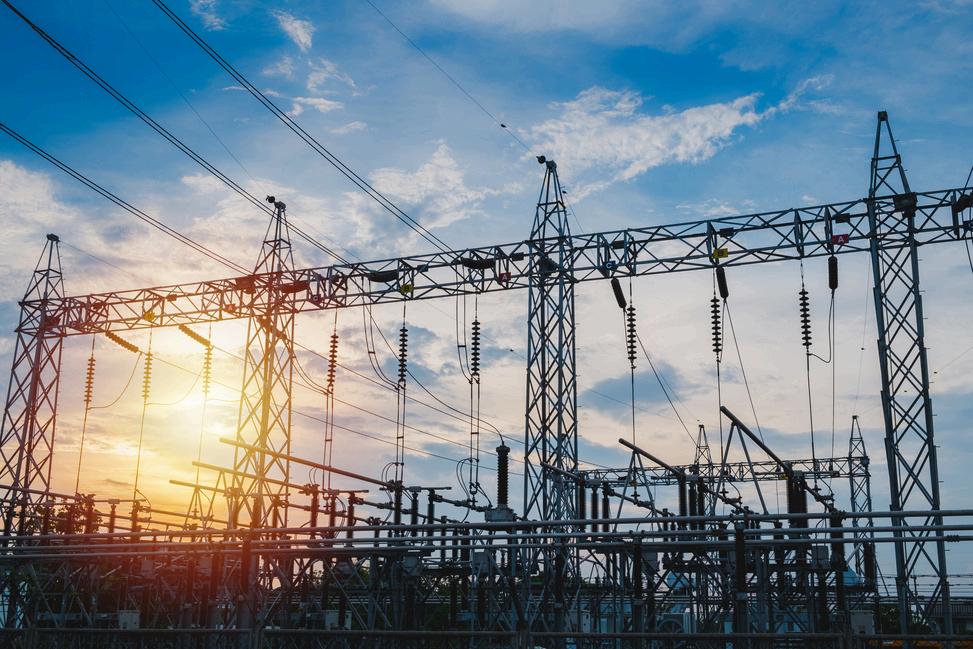
$120 Million Sustainability Project
The Small Industries Development Bank of India (SIDBI) announced that it has received the Green Climate Fund’s (GCF) approval for the Avaana Sustainability Fund (ASF), a project with a total value of $120 million This significant step forward was disclosed during the GCF’s 38th board meeting held in Kigali, Rwanda, on March 5. SIDBI, as an accredited entity of the GCF, will see the fund invest $24 5 million into the ASF, marking a notable advancement in India’s climate finance and sustainability efforts

Mahindra Susten Private Limited has clinched the title of the lowest bidder for a substantial 300 MW solar project in the NTPC 1,500 MW Solar Tender bid. The achievement follows a rigorous competitive bidding process culminating in an e-reverse auction conducted by the National Thermal Power Corporation (NTPC) on March 18. Mahindra Susten secured a project capacity of 300 MW at a quoted tariff of 2.59, with NTPC Limited as the off-taker.
NHPC To Develop 200 MW Solar Power Project In Gujarat’s RE Park, Aiming For Green Energy Boost
NHPC Limited has successfully secured a contract to establish a 200 MW solar power facility This significant project will be part of the expansive 1,125 MW Renewable Energy Park owned by Gujarat State Electricity Corporation Ltd. (GSECL), located in the Khavda area of Gujarat’s Kachchh district. The initiative is anticipated to produce approximately 473 million units of electricity during its initial year post-commissioning
SJVN Secures LOI For 200 MW Solar Endeavor In Kachchh’s Khavda From Gujarat Urja Vikas Nigam
SJVN Green Energy Limited (SGEL), a subsidiary of the renowned SJVN focused on renewable energy, has marked a significant milestone by securing a Letter of Intent (LOI) from Gujarat Urja Vikas Nigam Limited (GUVNL) to develop a 200 MW solar power project REC Power Development and Consultancy Limited (RECPDCL), a wholly owned subsidiary of REC Limited, has entered into a MoU with Bharat Heavy Electrical Limited (BHEL) for the joint development of utility-scale renewable energy projects across the nation The SPV, benefiting from BHEL’s core engineering expertise and REC Limited’s prowess in infrastructure investment, is set to initially focus on the commercial and industrial (C&I) segment, targeting an initial capacity of 1 GW with plans for future expansion
RECPDCL And BHEL Forge Partnership For UtilityScale Renewable Energy Development
NHPC Announces 1,200 MW Solar Power Project In Uttar Pradesh With Rs 796.96 Crore Investment, Aiming For Completion In Two Years
The National Hydroelectric Power Corporation (NHPC) disclosed ambitious plans for a large-scale solar power venture in Uttar Pradesh, signaling a significant step towards renewable energy expansion. It was revealed that Prime Minister Narendra Modi ceremonially initiated the commencement of the 1,200 MW Jalaun Ultra Renewable Energy Power Park via a virtual platform Located in Orai, within the Jalaun district, this substantial project represents a strategic move by NHPC to diversify its portfolio, traditionally focused on hydropower

In a significant move towards bolsterin capabilities, Prime Minister Narend foundation stone for the Lalitpur So Pradesh on Monday This 600 MW p by TUSCO Ltd a joint venture betwe the UPNEDA marks a monumental s of sustainable energy
Singareni Collieries Sets Stag Initiative, Including 300 MW F Lower Manair Dam
Singareni Collieries Company Limited ambitious renewable energy project in move towards sustainable energy, S power plants with a combined capac Manair Dam and the Mallanna Sagar r from the state government
India's energy journey signifies a shift towards sustainability, balancing renewable resources with traditional ones like coal Energy Statistics India 2024 highlights this evolution, emphasizing renewable potential and increased installed capacity. With a focus on efficiency and reliability, India's energy sector aims for security and environmental sustainability This strategic approach reflects dynamic transformation and foresight, shaping a prosperous future. Energy Statistics India 2024 serves as a roadmap for stakeholders, guiding India towards a sustainable energy landscape
India's electricity sector has seen rapid growth, fueled by economic development and government policies promoting renewable energy integration While coal has historically dominated, India is shifting towards renewables like solar and wind, supported by ambitious targets and policies. Hydropower and nuclear energy contribute to diversification. Despite challenges, investments in grid infrastructure and market reforms are underway India's commitment to cleaner energy aligns with economic and environmental goals. With increasing electricity demand, renewables are expected to meet a significant portion, alongside coal Grid and market reforms support decarbonization efforts, reflecting India's leadership in sustainable energy transition amidst growing energy needs.



Sterling Generators Private Ltd, a subsidiary of Sterling and Wilson Private Limited has announced a significant partnership with Tecnicas Reunidas, S A , a global leader in engineering and construction in the energy sector. The agreement aims to jointly develop a 1 MWe hydrogen electrolyzer, scheduled to be commissioned by the last quarter of 2024, with plans for scaling up to 10 MW thereafter The signing ceremony took place at the
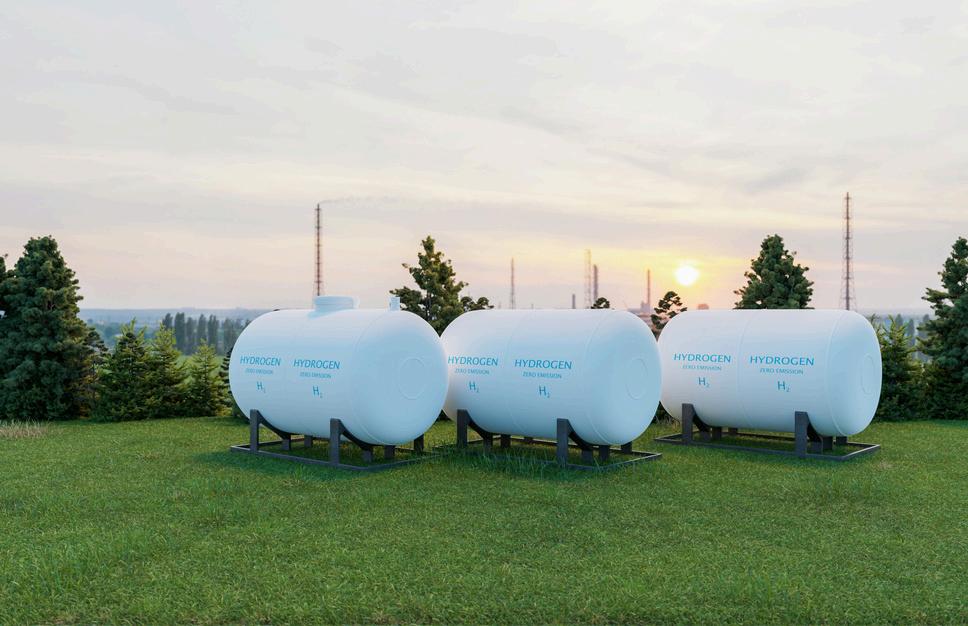
Minister Plenipotentiary Yahya Elwathik Bellah A Nabih, Head of the Egyptian Commercial Service (ECS), recently engaged in a constructive meeting with representatives from Rana Group, a prominent Indian conglomerate excelling in diverse sectors such as electric vehicles (EV) manufacturing, agricultural equipment, satellite technology, and sustainable energy, including green hydrogen The rendezvous stems from Rana Group’s strategic objective to broaden its global footprint, particularly in the African continent, with a keen interest in exploring investment prospects in Egypt. This initiative follows earlier discussions facilitated by the Egyptian Commercial Office in New Delhi, where the Indian conglomerate expressed a strong inclination towards collaborating with Egyptian enterprises across various domains
In a significant move towards advancing hydrogen fuel cell technologies, New Delhi, India, hosted the 41st Steering Committee Meeting of the International Partnership for Hydrogen and Fuel Cells in the Economy (IPHE) from March 18 to 22, 2024 The event commenced with a day dedicated to academic outreach at the Indian Institute of Technology (IIT) Delhi on March 18, drawing experts from various fields to discuss the future of hydrogen and fuel cell technologies
Greenzo Energy Unveils India’s First Indigenous 1 MW Alkaline
Greenzo Energy India Limited, a leader in the development of green hydrogen technologies, has unveiled a groundbreaking 1 MW Alkaline Electrolyser, marking a significant advancement in India’s clean energy sector. This innovation, launched at the Sanand Global Expo hosted by the Sanand Industries Association, stands as the country’s first indigenous electrolyser crafted entirely under the ‘Make in India’ campaign. The introduction of this electrolyser was presided over by Gujarat’s Industries Minister, Balvantsinh Rajput, who highlighted the project’s critical role in propelling Gujarat, and indeed India, towards becoming a green hydrogen hub.
Energy
India's electricity sector has seen rapid growth, fueled by economic development and government policies promoting renewable energy integration While coal has historically dominated, India is shifting towards renewables like solar and wind, supported by ambitious targets and policies. Hydropower and nuclear energy contribute to diversification Despite challenges, investments in grid infrastructure and market reforms are underway. India's commitment to cleaner energy aligns with economic and environmental goals With increasing electricity demand, renewables are expected to meet a significant portion, alongside coal Grid and market reforms support decarbonization efforts, reflecting India's leadership in sustainable energy transition amidst growing energy needs
Uttar Pradesh Government Sanctions Green Hydrogen Policy And Partners With NTPC On Rs 8,624 Crore Sustainable Energy Initiatives
The Uttar Pradesh government approved a pioneering green hydrogen policy, targeting one million metric tonnes of green hydrogen production annually by 2028 Energy Minister AK Sharma highlighted the initiative's ambitious goals and introduced incentives worth Rs 5,045 crore for businesses setting up green hydrogen industries Additionally, the cabinet sanctioned the construction of two 800 MW power units in Anpara, Sonbhadra district, in collaboration with NTPC, further reinforcing the state's commitment to sustainable energy solutions
Government Issues Delhi Solar Policy 2023 For A Sustainable Future In The Capital
The Delhi government unveils the Delhi Solar Energy Policy 2023 to accelerate solar adoption, targeting 4,500 MW of solar capacity by 2026-27 The policy introduces innovative models like group net metering and hybrid RESCO to address consumer challenges Generation Based Incentives and capital subsidies incentivize adoption, while operational guidelines ensure effective implementation Key stakeholders collaborate to realize the policy’s objectives, aiming to transform Delhi into a solar leader and foster a cleaner, more sustainable energy landscape for its residents.
India’s Leap into Green Future: MNRE Unveils Guidelines for Hydrogen Hubs under National Green Hydrogen Mission
The Ministry of New and Renewable Energy (MNRE) initiates the National Green Hydrogen Mission, aiming to establish two green hydrogen hubs by 2025-26. Each hub receives ₹100 crore for infrastructure development and targets annual hydrogen production of 100,000 metric tons Projects are selected based on production capacity, technology, and investment criteria MNRE endorses successful projects, providing funding in phases for core infrastructure development
India Reaffirms Strict Vigilance On Solar PV DCR Compliance Under MNRE Schemes
The Ministry of New and Renewable Energy (MNRE) enforces Domestic Content Requirement (DCR) policies to boost India’s solar industry and reduce import reliance MNRE’s Office Memorandum warns of strict actions, including criminal charges and blacklisting, for DCR violations in solar PV projects. Recent concerns prompt MNRE to reiterate DCR compliance importance, reinforcing stringent penalties for non-compliance This reaffirmation reflects the government’s commitment to supporting domestic solar manufacturers and advancing renewable energy goals.
Punjab State Electricity Regulatory Commission Amends Rooftop Solar Regulations In 2024
The Punjab State Electricity Regulatory Commission introduces amendments to the Grid-Interactive Rooftop Solar Photo Voltaic Systems Regulations, effective upon publication in the official Gazette Changes to Regulation 2(za) redefine the “Settlement Period,” while Regulation 3 3 adds two provisos extending application to existing and pending systems. These amendments, enacted under the Electricity Act, 2003, aim to streamline regulations for rooftop solar systems in Punjab, ensuring clarity and consistency in implementation
India Launches PM Surya Ghar: Muft Bijli Yojana With ₹75,021 Crore Outlay For Rooftop Solar Power Adoption
The Government of India has launched a significant initiative aimed at promoting the adoption of rooftop solar power systems in households across the nation Known as the PM Surya Ghar: Muft Bijli Yojana, this scheme has been approved by the President of India and boasts a substantial financial outlay of ₹75,021 crore. This ambitious project, launched on February 13, 2024, targets the installation of rooftop solar plants in approximately one crore households. It encompasses various components, including the incorporation of the previous Phase II of the grid-connected rooftop solar program, thereby consolidating financial resources and responsibilities under the new scheme
Himachal Pradesh Electricity Regulatory Commission Sets Tariff Courses For Solar PV Projects In FY 2024-25
The Himachal Pradesh Electricity Regulatory Commission sets new generic tariffs for Solar PV projects for 2024-25 after extensive consultations Acknowledging falling module costs and tech advancements, the Commission adjusts project component costs to mirror market conditions. It addresses concerns for smaller projects by allowing cost escalation, aiming to boost solar installations Tariffs are determined transparently, considering factors like O&M expenses and project scale, to promote competitive solar power generation in the region
Uttar Pradesh Government Sanctions Green Hydrogen Policy and Partners with NTPC on ₹8,624 Crore Sustainable Energy Initiatives
The Uttar Pradesh government recently approved a pioneering green hydrogen policy aimed at transitioning from conventional hydrogen production methods to more sustainable green hydrogen production To encourage the establishment of green hydrogen industries, the government has introduced a range of incentives and subsidies worth ₹5,045 crore for businesses setting up operations within the next five years These benefits include capital expenditure subsidies ranging from 10% to 40% for the first five industries, along with a 100% rebate on intrastate electricity charges and exemptions on transmission charges for interstate transactions In a related development, the cabinet also sanctioned the construction of two 800 MW power units in Anpara, Sonbhadra district, in collaboration with the National Thermal Power Corporation (NTPC), at an estimated cost of ₹8,624 crore
M/s Kisan Urja Hitkari Samiti, representing farmers who are Renewable Power Generators (RPGs), filed a petition seeking compensation for carrying costs in implementing Solar Power Projects under the PM KUSUM Scheme, Component-A, in Rajasthan Despite facing financial challenges due to the COVID19 pandemic, RPGs encountered hurdles in accessing financial assistance, prompting the Rajasthan Electricity Regulatory Commission (RERC) to advise individual RPGs to raise claims through supplementary bills.
Solar Inverters Unveiled: A Leap
The Bureau of Energy Efficiency (BEE) introduced a Standards and Labeling Program for Grid-Connected Solar Inverters, aiming to guide consumers in making energy-efficient choices. Union Minister Shri R K Singh launched the initiative in New Delhi, highlighting its potential to reduce carbon emissions and enhance product quality The program, voluntary until December 2025, focuses on BIS-certified inverters meeting safety standards. With the solar inverter market booming, the program is poised to drive energy savings and support India's transition to sustainable energy solutions.
Punjab State Electricity Regulatory Commission Amends Rooftop Solar Regulations In 2024
GRT Jewellers (India) Private Limited (GJIPL) filed a petition with the CERC regarding increased GST rates impacting its 150 MW Solar Power Project in Tamil Nadu CERC deemed the GST rate change a change in law event, directing SECI and distribution companies to compensate GJIPL. The commission approved a discount rate and annuity period for compensation, emphasizing restoration to GJIPL's pre-change financial position
Himachal Pradesh Electricity Regulatory Commission Sets Tariff Courses For Solar PV Projects In FY 2024-25
The Himachal Pradesh Electricity Regulatory Commission finalized generic levelized tariffs for Solar PV projects for fiscal year 2024-25 after stakeholder consultations Tariffs were adjusted to reflect declining module costs and technological advancements
Concerns for smaller projects were addressed by allowing cost escalation Tariff determination aimed for fairness and transparency, excluding projects under competitive bidding or net metering schemes
Maharashtra Regulatory Commission Addresses Renewable Energy Tariff Determination For FY 2024-25
ACME Heergarh Powertech Private Limited (AHPPL), a renewable energy company, successfully claimed compensation from Maharashtra State Electricity Distribution Company Limited (MSEDCL) due to a GST rate increase. AHPPL argued the tax hike impacted project costs for their 300 MW solar power project The commission validated AHPPL's claim, directing compensation for increased expenses and carrying costs Payment methodology was outlined to ensure fair compensation and project viability amidst regulatory changes The Punjab State Electricity Regulatory Commission has amended the Punjab State Electricity Regulatory Commission (Grid Interactive Rooftop Solar Photo Voltaic Systems) Regulations, 2021, under the Electricity Act, 2003 The amendments, effective upon publication, modify Regulation 2(za) and Regulation 3 Notable changes include redefining the settlement period and extending deadlines for certain industries These revisions aim to enhance the regulatory framework for Grid-Interactive Rooftop Solar Photo Voltaic Systems in Punjab.
The Indian government, via the MNRE, supports domestic solar PV manufacturing through the DCR policy, aimed at industry growth and import reduction To enforce DCR compliance, strict penalties, including criminal charges and blacklisting, are imposed on violators. Recent concerns about non-compliant module supplies prompted the MNRE to reiterate the need for adherence, emphasizing its commitment to supporting local manufacturers and renewable energy goals
The Ministry of Environment, Forest and Climate Change (MoEFCC) has introduced new guidelines for the Green Credit Scheme, aimed at incentivizing tree plantation and bolstering green cover nationwide. Embraced by diverse sectors, this initiative aligns with Prime Minister Narendra Modi's LiFE concept from COP26, advocating for a sustainable way of life By incentivizing sustainability and climate action, the scheme seeks to promote environmental stewardship and foster green development practices
Indian Oil Issues EPC Tender For 1 MW Solar Project In Andhra Pradesh
Bundelkhand University Invites Bids For 1 2 MW Rooftop Solar Project
Airports Authority Issues O&M Tender For 1 2 MW Solar Project In Varanasi
MSPGCL Floats Tender For 502 MW AC Of Ground-Mounted Crystalline Solar PV Systems
MMRC Opens Bids For 2.8 MW Rooftop Solar Installations On Mumbai Metro Line 3 Stations And Depots
MSPGCL Invites Bids For 569 MWAC Solar PV Projects Under MSKVY 2 0 For Agricultural Feeder Solarization
GUVNL Tenders For 250 MW/500 Mwh BESS Pilot Projects In Gujarat Under Phase-III Competitive Bidding
SECI Invites Bids For 1200 MW ISTS-Connected Solar PV Projects With 600 MW/1200 Mwh ESS Under Tariff-Based Competitive Bidding (SECI-ISTS-XV)
GUVNL Releases Tender For Supply Of 500 MW Solar Energy Power Projects Across India
MAHAGENCO Invites Bids For 750 Mwp Solar PV Modules For Mukhyamantri Saur Krushi Vahini Yojana Projects
NTPC Ltd Issue Tender For Supply Of 1000 MW Power From ISTS-Connected Wind-Solar Hybrid Power Projects Anywhere In India
MSEDCL Tenders For 1.6 GW Coal-Based Power Project And 5 GW Solar Project Via Tariff-Based Bidding Process
Maharashtra Invites Bids For Procurement Of 1,000 MW Energy Storage Capacity For 40 Years From ISTS/Insts Connected Pumped Hydro Storage Plants Through Competitive Bidding
MSEDCL Tenders For 500 MW Wind-Solar Hybrid Projects Interconnecting State Grids, With Green Shoe Option For Additional 500 MW Capacity
Indian Oil Corporation Ltd Invites Bids For 1 Mwp Solar Power Project At SRPL Chittoor
Maharashtra Requests Bids For Crystalline TechnologyPowered 40 MW Solar Projects
Bridge And Roof Company Invites Bids For 2 30 MW Rooftop Solar Project In West Bengal
MSEDCL Announces Rfs For 1000 MW Solar PV Power Procurement Via Competitive Bidding And Reverse EAuction
GAIL Releases Tender For Supply Of Solar Energy Plants On Rooftops And Land At Multiple Locations
NTPC Limited Floats Tender For Solar Power Inverter Supply For 5 MW Solar PV Plant At Dadri
NTPC Renewable Floats Tender For Land And Evacuation Infrastructure For 150 MW Solar Project In Rajasthan
GEDA Invites Bids For 30 MW Rooftop Solar PV Project On Government Buildings In Goa
CMPDI Issue Tender For Supply Of Grid Connected 13 MW (AC) Solar Power Plant In Jharkhand
SECI To Launch Tenders For 12 MW Solar Project In Ladakh And 5 MW Agro-Solar Plant In Jammu & Kashmir
WEBEL Technology Limited Invites Bids For Supply Of 1 5 MW Rooftop Solar Systems On Court Buildings In West Bengal
SECI Invites Bids For 300 MW Solar PV Project In Ramagiri, Andhra Pradesh
HREDA Releases Tender For Supply Of 8 4 MW Rooftop Solar Projects Across Multiple Locations In Haryana
Call For Bids: 1.5MW Rooftop Solar Power Plant Project At Maharshi Dayanand University, Rohtak Under RESCO Model
JREDA Invites Bids For Supply Of 14 MW (AC) Grid Connected Ground Mounted Solar Power Plant At Palamu And East Singhbhum Districts
NFSU Invites Expression Of Interest For 1 MW GridConnected Solar Power Plant Using Bifacial Crystalline Technology At Gandhinagar
REC Power Development And Consultancy Limited Releases Tender For Supply Of 250 MW ISTS-Connected Solar Photovoltaic (PV) Power Projects
CREDA Releases Tender For Supply Of 10,000 Off-Grid Solar Photovoltaic Water Pumping Systems As Part Of KUSUM Initiative

Solis Inverter is a global leader in PV inverters, offering comprehensive solar solutions for residential, commercial, and industrial sectors
Solis demonstrates commitment to growth and innovation through global recognition as a Tier 1 PV inverter manufacturer, driven by substantial R&D investment
Can you provide an overview of Solis Inverter, highlighting its prominence in the photovoltaic (PV) inverter industry?
Ginlong Technologies, trading under the name Solis and listed on the stock exchange with the code 300763.SZ since 2005, ranks as the thirdlargest manufacturer of PV inverters globally Our company offers a comprehensive array of solar and energy storage solutions for a variety of market segments, including residential, commercial, and industrial sectors. Under the Solis brand, we utilize advanced string inverter technology to produce products known for their reliability, a claim supported by numerous international certifications
Our approach combines a worldwide supply chain with leading-edge research and development, plus manufacturing capabilities, allowing us to customize our Solis inverters for specific regional needs Local teams across the globe provide unparalleled service and support, ensuring our products meet the highest standards Financial institutions recognize our bankability, ensuring our customers enjoy secure, profitable investments. By working closely with all our partners, Solis is dedicated to accelerating the global transition to sustainable energy sources


Solis provides diverse solar solutions, from residential to utility-scale, supported by personalized services and a commitment to sustainability, shaping the future of renewable energy

Highlight the key developments at Solis that demonstrate a commitment to long-term growth and innovation.
Over its 19-year journey, Solis has firmly established itself as a frontrunner in the production of PV and energy storage inverters, now boasting a global workforce of approximately 4,500 A significant portion of this team, 20%, is devoted to research and development (R&D), which has enabled us to distribute more than 26 4GW worth of our products globally in 2022 alone In 2023, Wood Mackenzie has recognized Solis as the world's third-largest PV inverter manufacturer, reflecting our unwavering dedication to pioneering new technologies, maintaining high-quality standards, and embracing sustainable practices Additionally, our inclusion in BloombergNEF's Tier 1 PV Inverter Manufacturers list for the fourth quarter of 2023 further validates our prominent standing on the global stage and our ongoing commitment to achieving excellence in all areas of our operations
These accolades not only highlight our current achievements but also reflect our strategic focus on nurturing innovation and ensuring sustainability. Our substantial investment in R&D underscores our belief in the importance of continuous improvement and adaptation in a rapidly evolving industry By prioritizing advancements in solar and energy storage technology, Solis is not just preparing for the future; we're actively shaping it, ensuring that we remain at the forefront of the renewable energy sector for the long haul Our vision extends beyond immediate gains, focusing on the development of solutions that contribute to a more sustainable and energy-efficient world, demonstrating our commitment to making a lasting impact on the industry and the planet
Solis stands at the forefront of the PV inverter industry, offering reliability and innovation that power the global transition to sustainable energy sources.
Could you provide insights into Solis's range of products, including the single-phase, threephase, and utility-scale inverters?
Ginlong (Solis), a pivotal figure in the renewable energy sector, is recognized for its intensive focus on the development, production, and provision of string inverters, which are essential to photovoltaic (PV) power generation systems Solis inverters have iterated from the first-generation to the sixthgeneration inverter technology platform. Solis's product portfolio is extensive, catering to a wide array of energy requirements This includes single-phase inverters designed for residential settings, three-phase inverters suitable for commercial use, and utility-scale inverters developed for major energy projects, ensuring a match for specific power needs
Our single-phase inverter selection covers a power range from 0 6kW to 10kW These inverters are built for simplicity in installation and flexibility, offering grid-tied, hybrid, and offgrid options to accommodate various residential PV setups on single-phase electrical systems The S6-GR1P(2 5-6)K-S is a singlephase model that will soon be available in the Indian market, and notably, it has an MPPT paralleling function, which will be of excellent economic benefit in Indian households.
For commercial endeavors, our three-phase inverters, which are all string inverters, range from 5kW to 320kW Among these, the 20kW models are often utilized in sizable residential PV installations, while the S6-GC(100-125)K versions are typically chosen for Indian commercial PV systems
On the utility-scale front, Solis provides 255kW and 320kW inverters that operate on 1500VDC and 800VAC, aimed at boosting system efficiency and minimizing operating expenses Additionally, we offer a selection of C&I storage hybrid inverters and PCS products, including the S6-EH3P(29 9-50)K-H and S6-PCS100K-M, tailored for energy storage applications With a strategic focus on the utility market, Solis was uniquely positioned to address the burgeoning energy demands of India's utilities sector with the star product S6 GU350K Inverter The company's dedication to delivering high-performance solutions tailored for utility-scale projects was evident through its continued successes and expanding presence in the market.
Beyond the realm of inverters, Solis's product lineup extends to include data loggers, communication devices, energy export power
managers, and SolisCloud. These tools and platforms are designed to aid our customers in the effective development, management, and utilization of clean energy solutions
What solutions and products does Solis offer for residential, commercial, and industrial energy needs, including storage?
Solis is deeply committed to addressing the diverse energy demands across residential, commercial, and industrial sectors, including the realm of energy storage This commitment is reflected in our broad spectrum of renewable energy generation and management solutions, designed with versatility and reliability at their core
For residential purposes, Solis presents an extensive lineup of inverters, spanning 16 series for both single-phase and three-phase power systems These inverters, ranging in power from 3kW to 23kW, are notable for their compact and lightweight design, making installation straightforward They are fully compatible with high-efficiency, high-power photovoltaic (PV) panels, supporting a maximum string current of 20A. Furthermore, they come equipped with numerous protective and intelligent monitoring features to enhance system safety and reliability
In the commercial and industrial sectors, Solis introduces over 12 inverter models designed for three-phase grid systems at four voltage levels (230VAC, 400VAC, 500VAC, and 540VAC), with capacities from 40kW to 150kW These models incorporate advanced multi-MPPT technology for improved safety and cost-efficiency. They are engineered to be compatible with highefficiency and bifacial modules, offering efficiencies up to 99% and IP66 protection against harsh environmental conditions
For utility-scale projects, Solis has developed two main series of inverters, designed to optimize operational costs and efficiency through features like 1500VDC and 800VAC levels, over 12 MPPTs for panel mismatch reduction, and integrated modular PID repair for sustained performance
Moreover, Solis's robust offering in energy storage includes over 15 models for residential applications and scalable solutions for commercial projects, ensuring sophisticated energy storage systems with easy integration and operational efficiency, catering to a comprehensive range of energy management and supply needs
What does Solis offer in terms of personalized services and support to ensure service excellence for their clients?
Solis prides itself on providing tailored customer services, supported by an expansive network of 35 service centers worldwide The company has set up specialized local teams dedicated to various aspects of customer engagement, including product design, marketing, sales, technical support, and aftersales services, ensuring high-quality localized service This structure allows Solis to offer prompt and effective assistance to clients, with immediate phone and online support available from local technicians. The company's approach to after-sales service is designed to be both straightforward and efficient, reflecting its deep commitment to delivering service excellence This comprehensive support system underlines Solis's dedication to meeting the needs of its clients through every stage of their journey, from initial inquiry to ongoing technical support and maintenance, ensuring customer satisfaction and trust in Solis's renewable energy solutions
What objectives and aspirations does Solis have looking forward to?
At Ginlong (Solis), our drive towards innovation never ceases, especially with a keen eye on enhancing the sustainability and efficiency of our solar inverters and energy solutions Our ultimate goal is to achieve significant environmental and economic advantages, crafting technologies that will enable the globe to harness clean energy for its power needs This vision not only guides our current endeavors but also shapes our future efforts to contribute positively to both the planet and its inhabitants through renewable energy
At Solis, personalized service excellence is not just a commitment; it's a guarantee. Our global network ensures prompt and effective support, from installation to after-sales service, fostering trust and satisfaction among our clients.
Established since 1997, Trina Solar is one of the leading solar PV manufacturers in the world. The company has a strong global presence with an extensive network of offices and manufacturing facilities globally across 160 countries and regions with 40,000 employees across the world. With regional headquarters in Zurich, USA Silicon Valley, Miami, Singapore, Dubai, as well as manufacturing bases in America, Thailand, Vietnam, Indonesia, and UAE, and international high-level management and R&D talents from more than sixty countries and regions, our international footprint has enabled us to service our valuable customers and establish a robust supply chain Trina Solar has been in India for around 14 years and is one of the top brands in the market
Trina Solar is committed to leading the way in smart solar energy solutions and facilitating the transformation of new power systems for a net-zero future Its unique position as a total solution provider for smart PV technology sets it apart in the industry Beyond offering modules, Trina Solar’s comprehensive solutions include trackers and storage solutions This positions the company not only as a product supplier but as an indispensable partner for most EPCs and developers Trina Solar’s expansion into these vertical industries broadens the company's reach, allowing us to diversify beyond traditional solar offerings, for example in the storage of green hydrogen, ammonia, and RTC power
TrinaStorage, established in 2015 and a leader in energy storage products and solutions, was ranked among the top 5 storage providers and integrators by BloombergNEF (BNEF). It was also included in the esteemed BNEF Energy Storage Tier 1 List for the first quarter of 2024 This recognition emphasizes TrinaStorage’s exceptional record in delivering smart energy solutions to diverse projects worldwide
One of its latest products is the Elementa 2 designed for utility-scale projects It features Trina’s own 306Ah lithium iron phosphate (LFP) cell which has an expected lifetime of 12,000 cycles, and a highly integrated design that reduces footprint, intelligent management of its liquid cooling system and rack-level battery management
Backed by a significant in-house battery cell manufacturing capacity, TrinaStorage provides independent power producers (IPPs) with containerized storage solutions, positioning it as an indispensable partner for EPCs and developers Elementa 2 packs up to 4 07MWh of storage capacity into a standard 20ft container This is a prime example of how advances in technology are enabling energy storage systems to be much more cost-effective and efficient
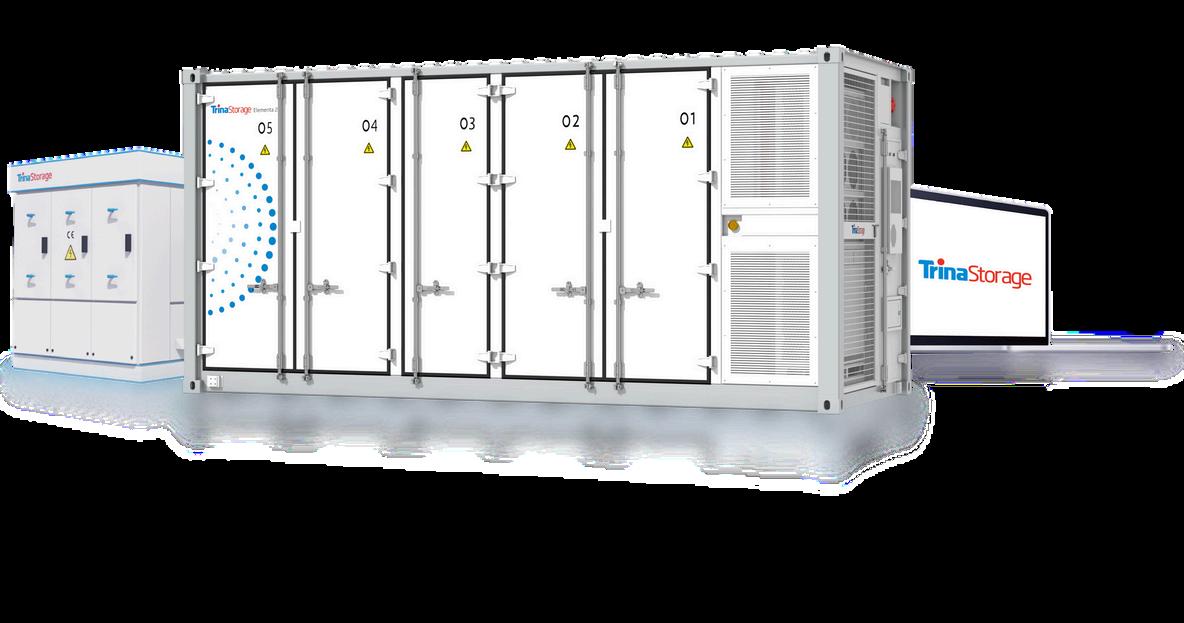
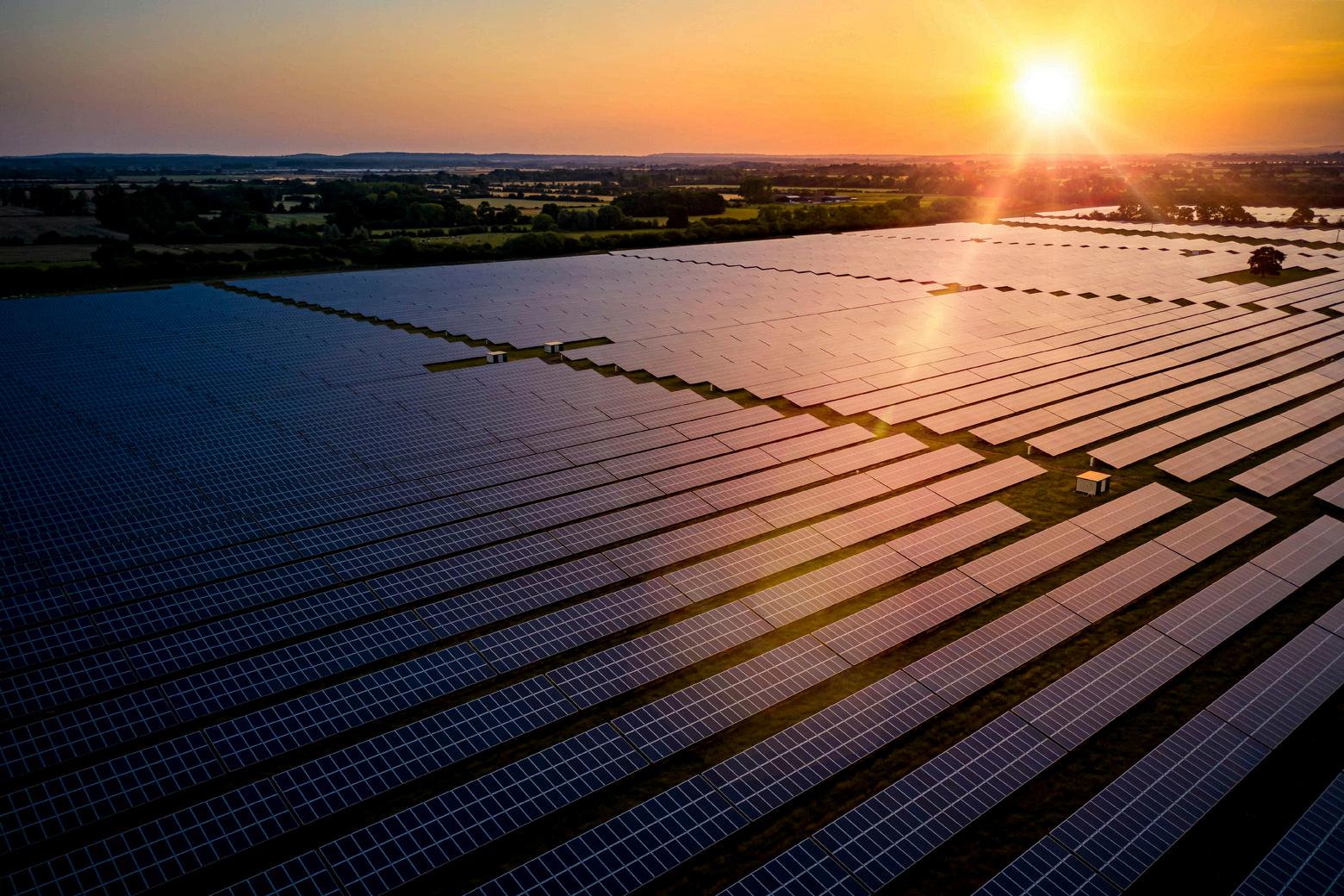
Upgraded Vanguard 1P: cutting-edge multi-motor system equipped with a slewing drive and a bi-damper system
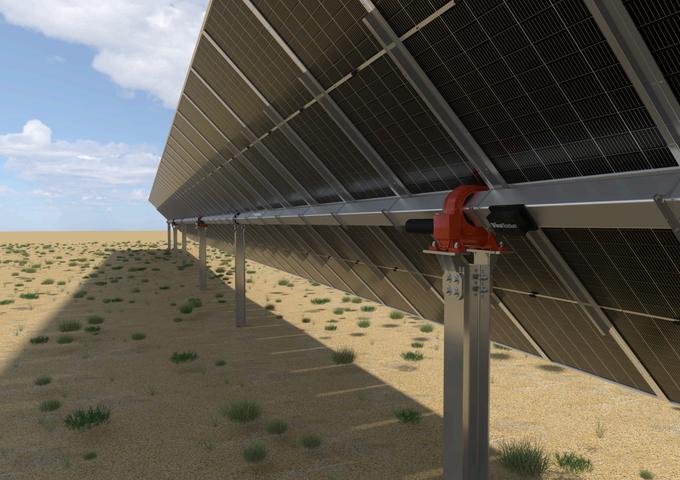
2023, TrinaTracker has delivered 20GW+ trackers globally, by more than 700 projects across 60+ countries
TrinaTracker has launched the enhanced version of its Vanguard 1P Smart Tracking Solution The improved Vanguard 1P model boasts a cutting-edge multi-motor system equipped with a slewing drive and a bi-damper system Its innovative design facilitates the construction of longer trackers, up to 140 meters, while minimizing oscillation time, averting instabilities, improving dynamic response and raising the critical wind speed threshold The multi-motor feature guarantees precise tracking
the most challenging conditions
Compared with the standard 1P Tracker system, the upgraded Vanguard 1P greatly increases installation efficiency The introduction of shrink tube technology has effectively halved the time needed for tube connections Furthermore, the integration of a patented spherical bearing greatly enhances terrain adaptability, making it much easier to assemble the tracker and reducing the extra forces caused by misalignment
Leading the industry into the 700W+ era
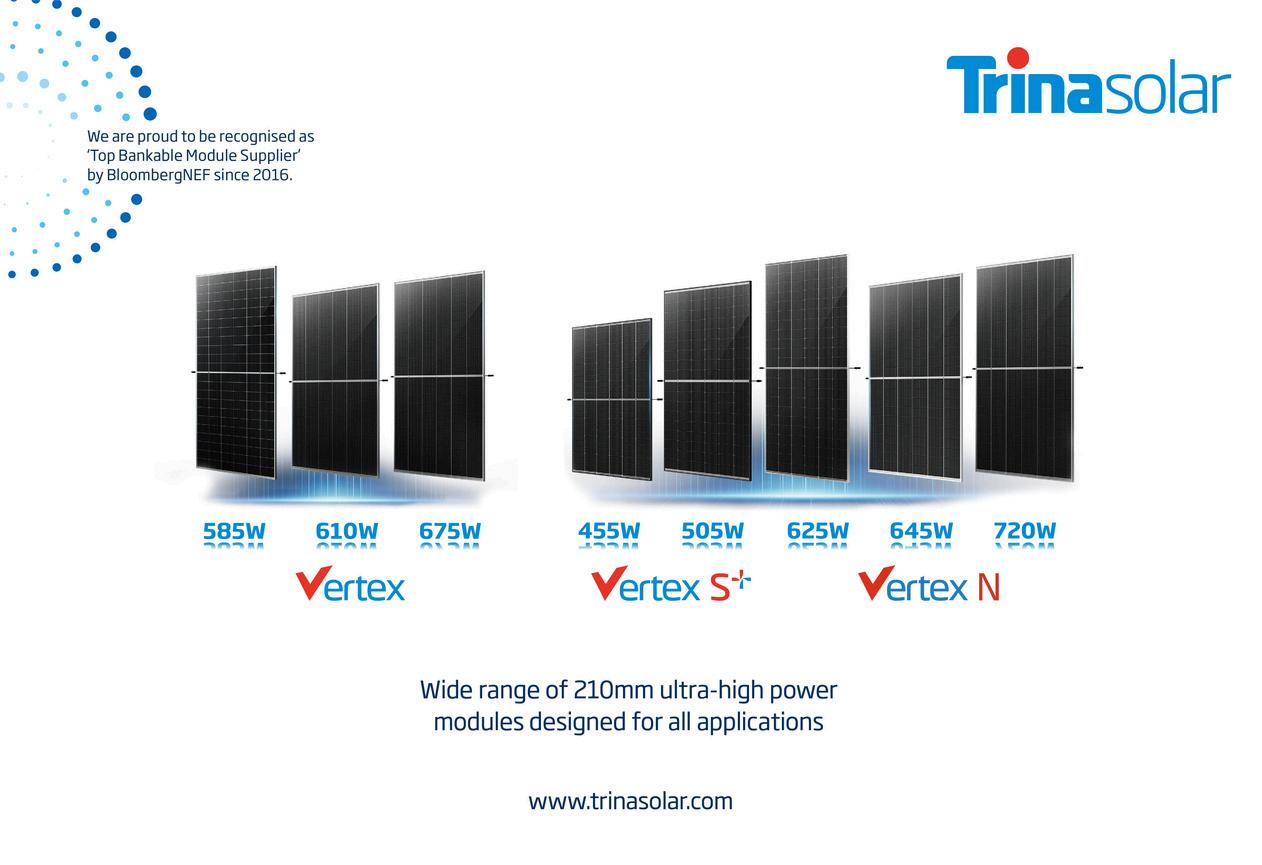
TrinaTracker's Vanguard 1P Smart Tracking Solution revolutionizes solar tracking with precision and efficiency. With over 20 years of expertise and a global presence, it leads the industry. The enhanced Vanguard 1P sets new standards, ensuring stability and optimal performance worldwide.
In terms of modules, Trina Solar has consistently been at the forefront of technology and innovation For example, the solar technologies that are incorporated into Trina Solar’s Vertex series are the most advanced in the market The Vertex N range’s higher power output is through the n-type iTOPCon Advanced cell technology includes the use of multi-busbar (MBB) for greater light absorption, high-density packing to maximise the surface area and ultra-smooth cell edges. Dual glass bi-facial modules, can generate more power, have increased toughness and dependability that provides extended power and greater durability These technologies have been developed and tested for different climate and geography Overall, this results in improved power output and efficiency within a low voltage design, resulting in lower balance of system (BOS) costs and lower LCOE Currently, the company’s most powerful module in the series (Vertex N NEG21C 20) generates 720W
Trina Solar was also one of the pioneers of 210 technology and championed the standardization of modules in the PV industry that use 210mm size solar cells. The size of the module is also optimized to greatly reduce BOS costs and LCOE By the end of 2023, more than 190GW of its 210mm modules were shipped, leading the industry in terms of shipments, power output and module dimensions standardization
Overall, Trina Solar is an established, leading global company that produces quality products as evidenced from its strong track records in India and worldwide Trina Solar aims to be a strong partner in achieving sustainability goals in line with its vision – ‘Solar Energy for All’

How does Sineng Electric(India) Ensure the reliability and efficiency of its solar inverters in the diverse climatic condition of south India?
Sineng Electric, a global frontrunner in the renewable energy sector, stands out by ensuring its PV inverters and energy storage systems for utility-scale, commercial, and residential applications, which are not just products but powerhouses of innovation, tailored to thrive in south India's diverse climatic conditions
At the heart of Sineng's strategy is an unwavering focus on quality and innovation By integrating cutting-edge technologies into products, Sineng’s solar inverters ensure high efficiency and reliability These inverters are designed to optimize energy conversion, reducing losses and maximizing output, even in the fluctuating weather conditions typical of south India Besides, Sineng’s solar inverters are equipped with adaptive technologies that allow us to perform efficiently across south India's climatic spectrum
In general, Sineng Electric (India) stands at the forefront of solar inverter technology, driving innovation and reliability in the face of south India's climatic challenges We’ll forge ahead on the road of promoting the energy storage business and bring higher value services to customers
Head of Sales, South India, Sineng Electric (India) Pvt. Ltd.
Sineng Electric employs advanced technology for efficient, reliable solar inverters adaptable to diverse climates
South India's Head of Sales drives strategic initiatives emphasizing tailored solutions, partnerships, and adaptability to boost Sineng Electric's market presence
Sineng Electric caters to south Indian customers with local service centers, region-specific products, and proven project expertise, ensuring satisfaction and reliability.
What strategies have you employed to Expand Sineng Electric Market Share as the head of Sales for south India ?
As the Head of Sales for south India at Sineng Electric, I've implemented several key strategies to expand our market share:
First, tailoring our solar inverter solutions to suit the unique climatic and operational demands of south India is paramount. Then, we prioritize cultivating strong partnerships with local distributors and service providers to expand our presence and elevate customer service standards Last but not least, by actively engaging in market research and heeding customer feedback, we adeptly adjust our offerings and strategies in response to evolving market dynamics
These strategies have been pivotal in enhancing our visibility, reliability, and adaptability in the competitive south Indian market
How does Sineng Electric address the specific needs of Customer in the south Indian Solar market and offer tailored solutions ?

To cater to the blooming Indian market, Sineng Electric invests time and resources to understand the specific requirements of the south Indian solar market.
By integrating the latest technologies in our products, such as high-efficiency inverters and smart grid solutions, Sineng ensures that our offerings are not only suitable for the current market but also future-proof,
Our strategic partnerships and local support network enable quick response times for installation and maintenance, ensuring customer satisfaction across South India
including capabilities for better grid integration, remote monitoring, and management features that cater to the techsavvy south Indian market
Recognizing the importance of local support, Sineng establishes service centers and offices across south India, which ensures quick response time for installation, maintenance, and repair services.
Can you highlight recent successful projects with Sineng Electric's inverters in south India?
We have achieved recent successes by providing our 3 3MW Central Inverter for significant projects like the 690MW Hydro Pump Project at Kurnool for Arcelor Mittal and the 150MW Cleanmax Jagluru project, addressing specific round-the-clock needs These projects in South India illustrate our ability to deliver successful outcomes and showcase our expertise in meeting diverse project requirements effectively
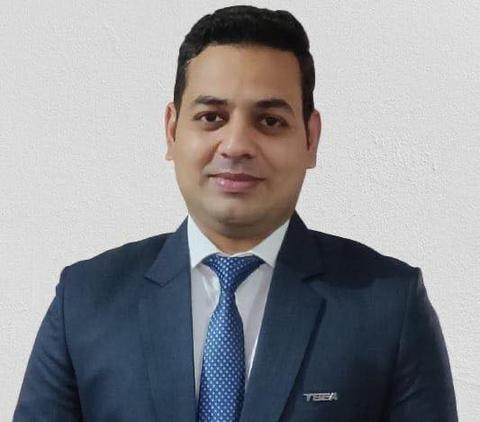
What are the unique features of the TS300KTL-HV-C1 String Solar PV Inverter, and how do they improve solar energy systems?
TS300KTL-HV-C1 is one of highest Inverter rating available in market, below are innovative features which will contribute to higher reliable operation & generation.
Smart DC disconnect switch which will protect from any DC fault like reverse connection, back feeding etc.
Optimized cooling , smart and partition cooling will improve the cooling efficiency and reduce aux losses
One of highest power density Inverter available in market which saves considerable BOS.
FAN tray optimization as FAN belt, ease in O&M.
Suitable for higher block sizes
Faster version of PLC communication
Fast Wi-Fi communication for long and easy O&M
Fuse less DC array can be connected even for multiple strings on one MPPT (>2)
How does TBEA ensure TS300KTLHV-C1 meets solar industry standards in India, Asia Pacific, and the Middle East?
TBEA TS300KTL-HV-C1 meet market demand for following regions as:-
Higher MPPT current 65A which is suitable for M10/M12 PV modules Looking at the market dynamics & module technology shifting to higher watt peak we are utilising 65A MPPT This product can be utilized for any module technology having an edge for suitability for different permutation & combination.
Peak Efficiency: With a peak efficiency of 99%, the TS300KTL-HV-C1 sets a new standard for power generation, reducing operational costs
Advanced Technology: TBEA's research ensures the TS300KTL-HV-C1 meets global demands, environmental conditions, and grid codes, ensuring stable operation and easy maintenance
Enhanced Performance: Adopting the TS300KTL-HV-C1 and TSVG promises improved energy generation, reduced losses, and simplified maintenance, enhancing overall project economics
This product is developed based on the intensive research on global market requirement & used latest technology which can meet the different environmental conditions, grid code, better safety features, stable & reliable operation, ease of O&M.
Latest version of utility scale string Inverter which is more protected.
Suitable for higher PV block size will help for LCOE.
What specific benefits can solar project developers and operators expect from adopting the TS300KTLHV-C1 and TSVG in their installations?
Higher efficiency – enhance energy generation
Higher generation
Lower mismatch losses.
Easy O&M
Compatible with different module technology
Designed to bring better LCOE
Single product can meet different grid code requirement Tested & proven technology using tier 1 components.
In terms of efficiency and performance, how does the TS300KTL-HV-C1 stand out from other solar PV inverters available in the market?
Since TS300KTL-HV-C1 is highest power rating Inverter available in market by using this Inverter developers have more power which leads for higher generation and LCOE can be achieved earlier and It is having peak efficiency
of 99% and euro efficiency is 98 7 % , this Inverter is designed with optimum cooling design So It is having higher thermal stability, we have extended the output temp range to 62 C which was 2 degree more than earlier 60C, Fan tray for cooling heat sink of IGBT is also in belt form so it requires less space, Inverter takes cold air from bottom and eject hot air from side so it is protecting PV modules from heating than other Inverter makes, so all these points make Inverter efficient and performer
How does TBEA address the challenges faced by solar projects, and how do the TS300KTL-HV-C1 and TSVG contribute to overcoming these challenges?
Adopting latest technology available in industry
Suitable for weak grids also where SCR is even less than 5
Increasing the power capacity of Inverter and SVG to match market demand
Updating of existing products and finetuning its features to mitigate the challenges faced in Grid due to high penetration of RE assets
Product design extended to surpass or meet CEA/grid code requirement
Proactive approach based on rich global experience of TBEA helps & supports Solar project developers to complete projects on time maintaining high standards of quality
Training facilities for site team and well diversified service network
Availability of complete range of products suitable to meet utility scale market
Continuous exchange of opinions with Grid agency/Government operator to meet grid requirements

PIXON Energy operates a cutting-edge manufacturing facility with a remarkable 1 GW capacity
Our solar PV modules feature advanced European technology, ensuring high efficiency rates Regulatory adaptation: Real-time monitoring, collaboration, and flexibility ensure compliance and sustainability in solar projects
In what ways does PIXON Energy aim to contribute to India's renewable energy goals through its solar PV module offerings
As the Director of PIXON, we are at the forefront of supporting India's ambitious renewable energy goals through our advanced solar PV module offerings Leveraging a state-of-the-art manufacturing facility with a substantial 1GW capacity and incorporating cutting-edge European technology, we specialize in the production of high-efficiency Monocrystalline and Polycrystalline Modules
Our products stand out in the market for their capability to offer power outputs of up to 600 Wp and achieve efficiency rates of up to 21 29% These high-performance modules are designed to cater to a wide range of energy needs, from residential to large-scale commercial installations, thereby significantly contributing to the reduction of carbon emissions and aiding India's transition towards a sustainable energy future At PIXON, we are committed to innovation, quality, and sustainability, making us a key player in driving India towards achieving its renewable energy objectives
does PIXON plan to ensure the quality and reliability of its solar PV modules in the Indian market?
Ensuring the quality and reliability of our solar PV modules in the Indian market is paramount
At PIXON, quality is not just a metric but a commitment to excellence and sustainability. Our principles stand as the bedrock upon which our enterprise is built, steering our conduct and molding our organizational environment The pillars that uphold our mission include unwavering honesty, ceaseless innovation, unmatched quality, enduring sustainability, and an unyielding focus on our customers
In our pursuit of excellence, we embrace lean manufacturing techniques to optimize our production processes, ensuring they are as efficient and effective as possible. Furthermore, we are committed to incorporating the latest
technological advancements into our manufacturing processes This commitment enables us to produce solar modules that offer superior performance, durability, and reliability, making them ideally suited for the diverse and challenging Indian climate and environmental conditions
Our adherence to top industry standards, coupled with our stringent quality control measures, ensures that our solar modules stand the test of time We are dedicated to delivering products that enable individuals and businesses in India to transition smoothly to sustainable energy solutions, supporting the country's ambitious renewable energy goals and contributing to a cleaner, greener future
What market trends or factors influenced the timing of PIXON Energy's product launch in India?
Our decision to launch our solar PV modules in India was influenced by a confluence of strategic market trends and factors, aligning our introduction with the nation's growing demand for renewable energy solutions
The Indian government's ambitious renewable energy targets, aiming to significantly increase the share of renewables in its energy mix, provided a clear signal of the market's potential growth This commitment from the government has been accompanied by favorable policies and incentives for solar energy production and adoption, making it an opportune time for companies like us to enter and thrive in the market
PIXON has expanded its manufacturing line to a staggering 1 GW capacity, featuring state-of-theart multi-busbar solar modules The new manufacturing line is capable of manufacturing M6, M10, and M12 modules, offering power output of up to 600 Wp and an efficiency rate of 21 29% This expansion is set to propel the company to new heights in the renewable energy market while making clean energy more accessible and efficient than ever before.
These market trends and factors have been instrumental in shaping our decision to launch
this particular time, positioning PIXON to contribute significantly to India's renewable energy journey and to meet the energy needs of its people and industries in a sustainable manner
What are PIXON Energy's long-term goals and vision for its presence in the Indian solar energy market?
Our vision and long-term goals in the Indian solar energy market are rooted in innovation, sustainability, and growth We are committed to becoming a key player in India's transition towards clean and renewable energy, and our strategies are designed to align with the nation's environmental objectives while meeting the increasing demand for solar energy
We aim to significantly expand our supply chain across India, enhancing our production capabilities and product offerings. Through the expansion of our Solar Modules and the introduction of EVA Films, we intend to diversify our portfolio to cater to a broader segment of the market This expansion is not just about scaling our operations but also about enhancing the efficiency and sustainability of solar energy solutions available in the market
With our in-house tracking system for the overall manufacturing unit generation, we plan to set new standards in production transparency and efficiency This system will allow us to monitor and optimize our manufacturing processes in real-time, ensuring the highest quality of products and minimizing our environmental footprint
By diversifying our backhand integration in the overall unit, we aim to create a more resilient and efficient supply chain. This approach will not only reduce our dependence on external suppliers but also allow us to maintain strict quality control over every aspect of our product development process, from raw materials to the final solar modules.
We are committed to driving forward the renewable energy industry with our innovative products, sustainable practices, and dedication to quality, aiming to make a significant impact on India's energy landscape

JinkoSolar, one of the largest and most innovative solar module manufacturers in the world, unveiled Neo Green panels recently. These N-type TOPCon Tiger Neo panels are produced in factories that were awarded the "Zero Carbon Factory" certification by TÜV Rheinland for their compliance with the criteria and requirements of such certification. JinkoSolar is also the first company in the industry to be awarded with the "Zero Carbon Factory" certification by TÜV Rheinland for Silicon Ingot Manufacturing, Silicon Wafer Cutting, Solar Cell Manufacturing, and Solar Module Manufacturing This milestone marked a major step in the company’s journey toward its goal to promote sustainability, innovation, and environmental responsibility
The initial 5GW capacity of Neo Green is the result of years of significant research and development work, as well as, maximizing the adoption of an environmentally conscious approach across its vertically integrated supply chain, including the use of solar, hydro and wind generated electricity in its wafer, cell and module factories in Leshan, Chuxiong and Shangrao As part of its broader environmental efforts, in addition to its objective of reaching 100% of electricity produced from renewable sources for manufacturing and production, JinkoSolar will continue to expand the use of recycled materials and increase the use of electric trucks and LNG-powered ships Additionally, JinkoSolar is also targeting to gradually reduce the use of plastic in its packaging
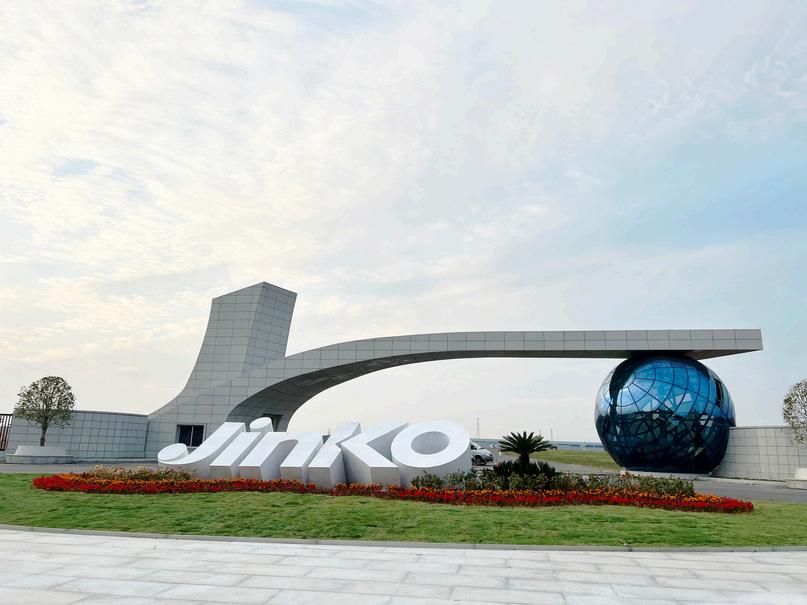
Ms Dany Qian, VP of JinkoSolar, commented, “We are extremely proud to have released our first Neo Green Panels produced in factories that use electricity from renewable sources, a strong expression of our efforts to fulfill our commitment to sustainability Our biggest impact on the environment will always come from providing customers with sustainable products and solutions that accelerate a greener future, reflecting the shared values of our customers, partners and investors.”


Cutting-edge HJT technology propels Huasun Energy as a global leader in solar innovation
Sustainable manufacturing practices underscore Huasun's commitment to environmental stewardship
Strategic foresight drives Huasun's ambition towards mainstream adoption of renewable energy solutions
Could you provide a summary of Huasun Energy and the range of products they offer?
Huasun stands at the vanguard of technological innovation, specializing in the research and development (R&D) and large-scale production of ultra-high efficiency N-type silicon heterojunction (HJT) solar wafers, cells and modules.
Recognized globally as a leading pioneer in HJT technology, Huasun has distributed more than 4GW of its HJT products to over 40 countries With a current production capacity of 20GW, it holds the title of the world's largest HJT manufacturer Huasun is on a strategic path to double its production capacity to 40GW by the end of 2025 The company is dedicated to pushing the boundaries of solar cell and module efficiency, as well as innovating cost-effective methods for mass production of HJT products Looking ahead, Huasun is committed to delivering cutting-edge solar products that offer enhanced performance and unparalleled quality, aiming to make a substantial contribution to the establishment of a zero-carbon world
Could you share insights on your product range and highlight the advantages of HJT technology compared to other solar technologies?
Heterojunction solar technology has seen a notable increase in popularity due to its potential to improve efficiency and performance significantly Huasun is dedicated to continuously enhancing the performance of its products and setting new standards regularly To underscore the benefits of HJT technology, it is important to mention four "Highs": high efficiency, high power output, high bifaciality and high reliability; and four "Lows": low temperature coefficient, low degradation rate, low carbon emissions and low temperature processing I am confident that, in the next few quarters, HJT will emerge as one of the leading n-type solar cell technologies
How does Huasun Energy innovate and lead with R&D?
The solar industry is among the most dynamic sectors today, where innovation and continuous improvement are crucial for staying competitive Huasun is acutely aware of this necessity and has always prioritized a philosophy of relentless enhancement It's important to highlight that the development of high-quality wafers, cells and modules is essential for ensuring the efficiency and durability of solar energy systems. Huasun has marked numerous achievements in research and development, successfully transitioning these advancements into mass production. Among its initiatives, Huasun has introduced its G12R (Rectangular) cell modules into mainstream production Additionally, the company is fervently working on reducing wafer thickness and advancing its research on copper plating methods for mass production to decrease the use of silver Other significant efforts include implementing zero busbar soldering technology, developing semi-transparent HJT modules for agrivoltaics and progressing in tandem cell technology among others
How does Huasun Energy customize its offerings for South Asia's renewable energy demands?
At Huasun Energy, our approach is fundamentally built on innovation, sustainability and customer focus We recognize the dynamic nature of the solar industry and have tailored our strategy to align with prevailing industry trends. While every market presents its own set of unique opportunities and challenges, it's evident that solar adoption is rapidly increasing across South Asia, particularly in India Specifically for the Indian market, beyond our core competencies, we are seeking partnerships with local manufacturers to encourage the adoption of HJT cells and module production and to comply with the ALMM regulations Additionally, we are engaging in discussions with distributors to establish a comprehensive distribution network across India
How do you envision the future for Huasun?
At Huasun, our mission extends beyond simply producing solar products; we are committed to forging a sustainable future through our highly efficient low-temperature production process, positioning us as one of the industry's lowest carbon emitters We are proud to highlight that Huasun boasts one of the lowest carbon footprints, at approximately 366g CO2 equivalent per watt and we are aiming to reduce this figure to below 300g CO2 eq/W
How do you envision the future for Huasun?
I am optimistic about the future, which I see as extremely promising with endless opportunities. Heterojunction technology (HJT) is poised to become a mainstream technology very shortly and is expected to be among the most in-demand technologies Thanks to rapid developments and innovations, HJT is becoming more affordable, accessible and attainable At Huasun, we have set an ambitious target to exceed sales of more than 2 GW this year in the South Asia region alone, with expectations for this figure to grow exponentially in the coming years. HJT offers excellent compatibility for integration with perovskites and other cell technologies, paving the way for the creation of high-efficiency tandem cells
Huasun is on a path to sequentially advance through the technical evolution of HJT solar cells from version 3 0 (double-sided μc-Si), to 4 0 (double-sided μc-Si with copper plating), to 5 0 (full back-contact) and eventually to heterojunction-perovskite tandem cells. We aim to achieve a mass production efficiency of 28% (for 800W modules) This increase in efficiency will contribute to a further reduction in the Levelized Cost of Electricity (LCOE) Coupled with the continuous decrease in the costs of silicon wafers, metallization, Transparent Conductive Oxides (TCO), equipment and production, HJT is set to become the new generation of mainstream solar cell technology
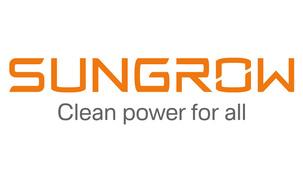
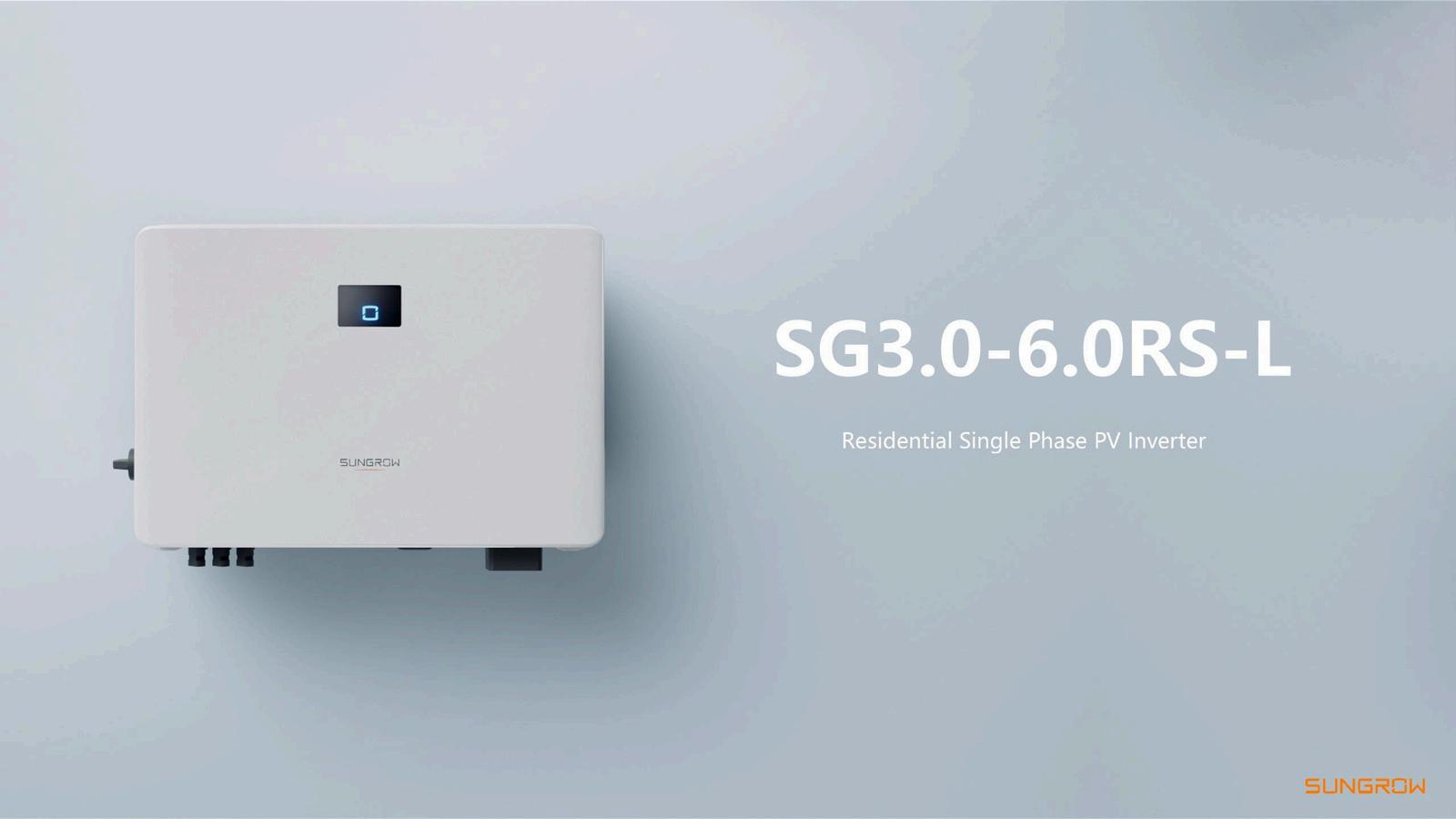
Sungrow, the global leading inverter and energy storage system supplier,released its new residential single phase PVinverter SG5.0RS-L in the year 2023 SG5 0RS-L delivers blazing-powerful performance in an ultra-light weight design At the same time, its redesigned light weight cover increases corrosion resistance and lightens the installation It also has innovative safety features that give you insight into everything you care about.
Firstly, Sungrow takes responsibility for its products' environmental footprint throughout their life cycle The new residential hybrid inverter SG5 0RS-L is built with the planet in mind, with a durable 100percent recycled high polymer resin material. The integrated design and comprehensive optimization of materials and structures bring higher power density This engineering-grade material has been successfully used for aerospace and military purposes
Secondly, the SG5.0RS-L has lots of energy in its compact design. In a compact design, the single string input current can reach 16A, which is compatible with high-power modules It is also equipped with PowerMax global MPPT scanning and PID Zero functions These functions can always keep the maximum performance of PV modules, but also keep the whole system in the best power generation status during shadow.

Step into a new era of solar power with Sungrow's SG50RS-L, where power and portability intertwine seamlessly. This groundbreaking inverter redefines residential solar systems, delivering unparalleled performance in a remarkably lightweight design. Say goodbye to cumbersome installations and hello to effortless efficiency
Thridly, when it comes to household products, the most significant thing is safety With corrosion-resistant, water and dust resistant, lightning protection, and built-in Type II DC&AC SPD, SG5 0RS-L can withstand harsh environments such as rain, sandstorm, thunder and coastal areas. In addition to these outdoor features, SG5 0RS-L has Class B homeappliance-grade radiation protection indoors and extremely low noise, reaching sleep level noise.
In addition, the SG5 0RS-L is easy to install and operate It can be lifted with one hand, easily installed by one person, and the snap-fit design makes installation simpler For O&M, it has a smart IV curve scan and diagnosis, which accurately locates faulty strings. By using iSolarCloud, O&M personnel can help users with real-time updates and partial troubleshooting at a distance, thus improving overall O&M efficiency and experience

Can you provide an overview of Ningbo Deye Technology’s presence and operations in the Indian solar PV markets? How does the company differentiate itself from competitors in the highly competitive market such as India?
Deye Inverter & Deye ESS is a subsidiary of Deye group Since 2007, Company has been investing, researching and developing products & solutions for better mankind in the field of Renewable Energy Deye's hybrid inverter, lithium batteries made them superior to any other competitors in India & globally Also, bulk manufacturing within house R&D makes us better and consumers first choice in selecting the inverters / batteries

What innovative features or technologies does Ningbo Deye Technology offer in its solar PV inverters specifically tailored to meet the needs and challenges of the Indian solar market?
Innovative features not just in products & solutions but also in complete process, such as higher current rating inverters, bigger rating hybrid inverters for residential, commercial & industrial segment, best service policy in India and globally with multiple service centers spread across the regions All these together makes our products & solutions to meet the challenging & dynamic industry
Ningbo Deye Technology unveils innovative product developments tailored for the Indian market, enhancing their competitive edges
Strategic expansion plans in India reflect Ningbo Deye's commitment to bolstering market presence and meeting evolving consumer demands
Aligning with overarching growth objectives, Ningbo Deye's initiatives in India signify a proactive approach to solidifying market positioning and driving sustained success
How does your company ensure the reliability and efficiency of its solar PV inverters, particularly in diverse climatic conditions prevalent in India?
As we are a global leader and supplier of our products & solutions to 50 countries
We have 500 R&D engineers working on reliability of the product, improving efficiency, producing stable product which shall work in different climatic conditions
Also, our engineers are working towards an affordable product from which consumers can be economically beneficial
How does Ningbo Deye Technology adapt its product offerings and marketing strategies to stay competitive in the Indian solar PV markets?
Deye strategically appointed distributors in India Festa Solar (South India), Watthut Electronics (North, East & Northeast) and Greenedge Energy (West India)
Through them & Channel partners, Deye is offering & marketing the products & solutions in India
We surpassed 1Gw in 2023 and expecting to reach milestone of 2Gw in mid of 2024
Strategic partnerships drive Ningbo Deye market impact, aiming to double our reach by 2024.
Foroveradecade, NingboDeyehasstoodas abeaconofinnovationin India'sPVmarket, revolutionizingthe industrywithpioneering hybridtechnologyandan unyieldingdedicationto progressandexcellence
Can you discuss any upcoming product developments or expansion plans for Ningbo Deye Technology in India? How do these align with the company's overall growth objectives and market positioning?
All in one solution (Hybrid + Battery), Higher rating of hybrid inverters for industrial applications and affordable products are the upcoming products and are under development Also, strategically we are planning to manufacture inverters & battery in India at various locations supporting regional installers Company is expecting to triple its growth in India and globally Also expecting to grab market share of 25%.

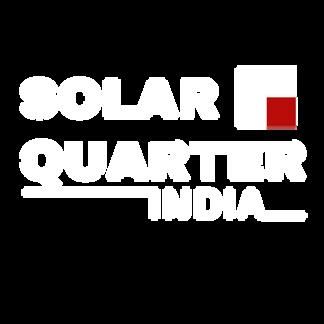




Our Navitas N-Type TOPCon Half Cut Bifacial modules set new standards for solar innovation Navitas Solar leads in adopting emerging PV tech, ensuring unparalleled module performance Scaling up to 5 GW annual manufacturing by 2026
What recent developments have you observed in the Indian PV market, and how do they influence Navitas Solar's sales and procurement strategies?
Increasing demand of TOPCon modules, futuristic adaption of IBC technology, encouragement from the government(Make in India concept) to install manufacturing companies in India for solar products like solar encapsulants, ribbons, junction boxes, frame, glass etc are the recent developments we have observed in the Indian PV market We are in this industry from last 11 years, so the rigorous know-how of the industry and our quick adaptiveness of the recent trends from the market help us a lot to shape our sales and procurement strategies
Can you discuss emerging PV technologies Navitas Solar is exploring and their impact on India's solar industry?
N-type TOPCon (Tunnel Oxide Passivated Contacts) technology is a new method in module manufacturing that helps to enhance the efficiency of solar panels that is essentially the next generation of PERC TOPCon is a technology that involves adding a very thin layer of silicon dioxide (sio2) and a layer of phosphorus doped polycrystalline silicon, which is done to create passivated contact structures on both front and the back surfaces This additional layer helps to reduce losses and improve the extraction of carriers by using passivated contact structures on both the front and back surfaces These panels can continue generating power for a longer period
Additionally, TOPCon cells have better conversion efficiency, which means they can potentially lower the cost of manufacturing per watt. TOPCon technology helps to decrease surface recombination and enhances the durability and consistent performance of the panels over time TOPCon solar panels have a low power degradation rate in the first year of operation and for the next 30 years too. In the next few years, TOPCon technology will be dominating the Indian Solar industry Also, IBC technology will make its prominent position in the Indian solar market
What are the most significant trends currently impacting the Indian solar market, and how is Navitas Solar adapting to capitalize on these trends?
There are many significant trends currently impacting the Indian solar market like demand and adaption of next generation N-type TOPCon Half Cut Bifacial modules We try to cope up with the advance technologies in the current solar market and try to adapt the same to maintain our position Our USP is a young team who can quickly understand changes of solar industry and adapt the same We try to spread awareness regarding solar through various campaigns
Are there new products or innovations Navitas Solar plans to introduce for the evolving Indian solar market?
Recently, we have launched our next generation Navitas N-Type TOPCon Half Cut Bifacial modules in our portfolio With 144 & 156 half-cells & 16 bus bars available in 3 2 mm ARC Glass with transparent back sheet & 2 mm in glass-to-glass combinations, our latest
technologies modules can generate power from 560 wattsto 720 watts per panel offering module efficiency >22% This innovative addition has the potential to completely reinvent the solar industry in the upcoming years with its high performance and superior technology With this development, we are sure that Navitas Solar will establish new standards in the solar industry and we believe that Navitas N-type TOPCon modules will be the choice of consumers in the upcoming years
What are Navitas Solar's expansion plans and positioning strategies amidst growing competition in India?
We have expanded to 2 GW per annum of manufacturing capacity this year Our plans are to expand our manufacturing capacity up to 5 GW p.a. by 2026. We want to start backward integration in solar cells manufacturing with the capacity of 1 5 GW per annum in the next few years Navitas Group wants to enter into Electrolyzer Manufacturing like Green Hydrogen, Green Ammonia in upcoming time
What strategic initiatives is Navitas Solar implementing to maintain its leadership in Indian solar PV module manufacturing?
Recently, we became Official Renewable Energy Partner for Royal Challengers Bangalore (RCB) team for this T20 season This collaboration will not only increase our visibility and brand recognition, but also align with our goal of promoting a more sustainable future By teaming up with one of the T20's most popular teams, we aim to influence cricket enthusiasts to encourage global adoption of renewable energy solutions and environmental conservation We hope this strategy will help us to maintain our top position in the Indian solar PV module manufacturing industry
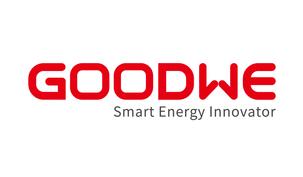
In a momentous celebration of solar innovation, GoodWe, in collaboration with Solar Quarter as the Media partner, hosted an exclusive event titled "Unveiling a New Era in Solar Excellence" on February 2, 2024, at The Royal Ballroom, The Leela Palace in Bengaluru Commencing at 5:30 PM, the event marked GoodWe's remarkable achievement of reaching the 3GW shipment milestone and introduced the eagerly awaited launch of the UT350kW product in the vibrant Indian solar market.
The evening commenced with a welcoming atmosphere during the registration and networking tea, followed by an introduction guided by the Emcee and the ceremonial lighting of the lamp, symbolizing the dawn of a new era in solar technology.
James Hou, Country Manager of GoodWe Power Supply Technology Co Ltd, expressed, "This celebration stands as a testament to our unwavering commitment to advancing solar solutions The attainment of the 3GW shipment milestone and the introduction of the UT350kW highlight our dedication to leading excellence in the solar industry "
A distinguished Guest of Honor, Shri Krishnappa V, Managing Director of Power Company of Karnataka Limited, delivered the Keynote Address, offering valuable insights into the evolving landscape of solar energy. GoodWe, in turn, provided introductory remarks, leading to the unveiling of their cutting-edge UT350kW product through an engaging launch video The grand reveal was followed by a comprehensive product presentation, offering attendees an in-depth understanding of the groundbreaking technology.
A significant highlight included the heartfelt message from the GoodWe headquarters, underscoring the company's global commitment to advancing solar solutions Attendees had the privilege to hear firsthand accounts from esteemed customers such as TATA, ORB, Swelect, and GoodWe's authorized partners – Evervolt, Accura Resources, Vashi Integrated Solutions, providing real-world perspectives on the impact and success of GoodWe's innovative products
The celebration continued with a monumental 3GW cake-cutting ceremony, symbolizing the company's substantial shipment achievement Live entertainment from Bangalore's leading dance group, Team Xtacy, enthralled the audience, adding a cultural flair
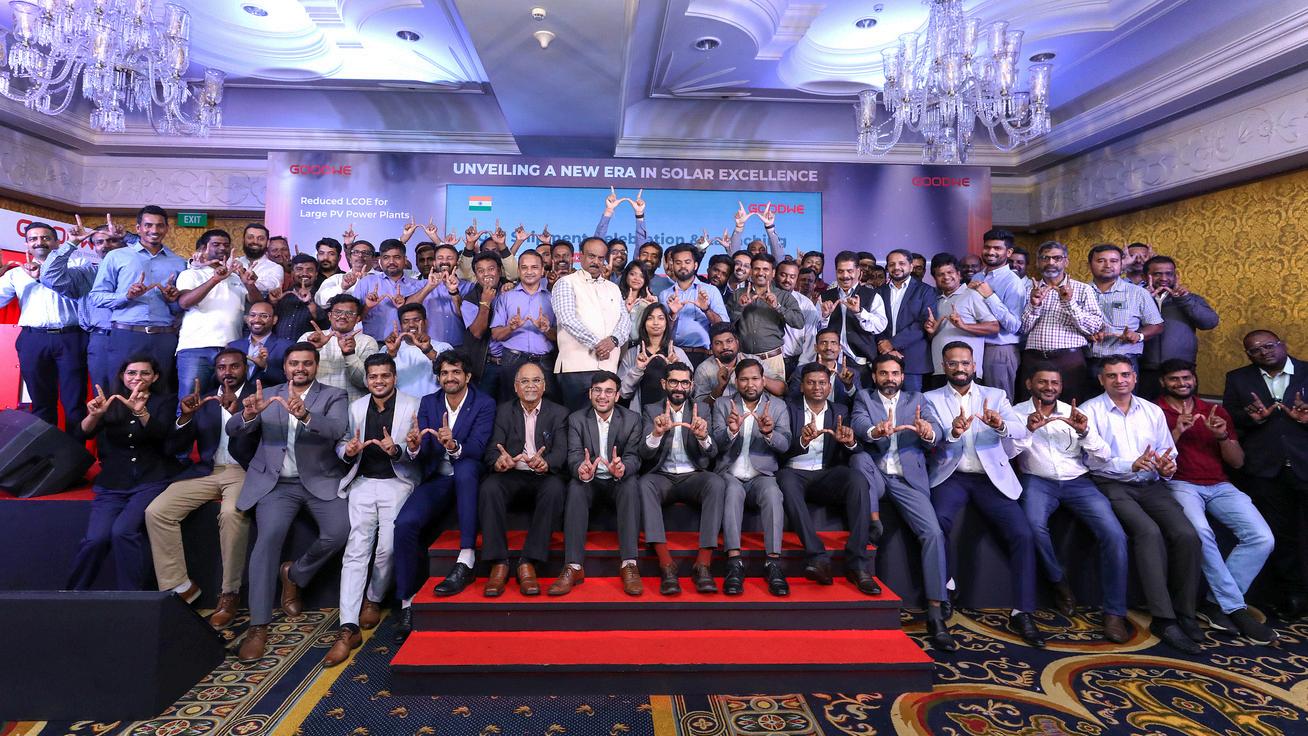
to the event Attendees enjoyed exclusive photo sessions and received personalized giveaways, creating cherished memories of this momentous occasion The festivities concluded with a cocktail and gala dinner, providing a platform for networking among prominent industry leaders who graced the occasion
GoodWe's unveiling of the New Trailblazer, The New GoodWe 320/350kW String Inverter, was particularly noteworthy Designed to meet the demands of Large-Scale Power Plants, this innovative product offers high Power Efficiency, streamlined Operation & Maintenance (O&M), and Reliable System Stability It represents a breakthrough in the Utility Segment, providing increased capacity and significantly reduced Levelized Cost of Energy (LCOE) The UT 1500V Series, another highlight of the event, is GoodWe's new three-phase string inverter designed to enhance the profitability of utility-scale projects Built to withstand extreme temperatures and harsh outdoor environments, with an operating range of -35°C to +60°C, the high-performance UT inverter ensures enhanced safety, optimal LCOE, and cost-effectiveness, providing a future-ready solution for utility-scale PV projects
This event not only celebrated GoodWe's remarkable achievements but also showcased the company's steadfast dedication to pioneering advancements in solar technology, heralding a new era of excellence in the industry
GoodWe is a world-leading PV inverter manufacturer and smart energy solution provider listed on Shanghai Stock Exchange (Stock Code: 688390) The company has more than 4,600 employees worldwide and has a track record of over 52 GW of installations in over 100 countries and regions GoodWe offers an extensive range of products and solutions tailored for residential, commercial and industrial, and utilityscale PV systems, delivering reliable and high-performance solutions across its entire portfolio In 2021, GoodWe was recognized as one of the top three hybrid inverter suppliers worldwide by Wood Mackenzie For more information, please visit goodwe com
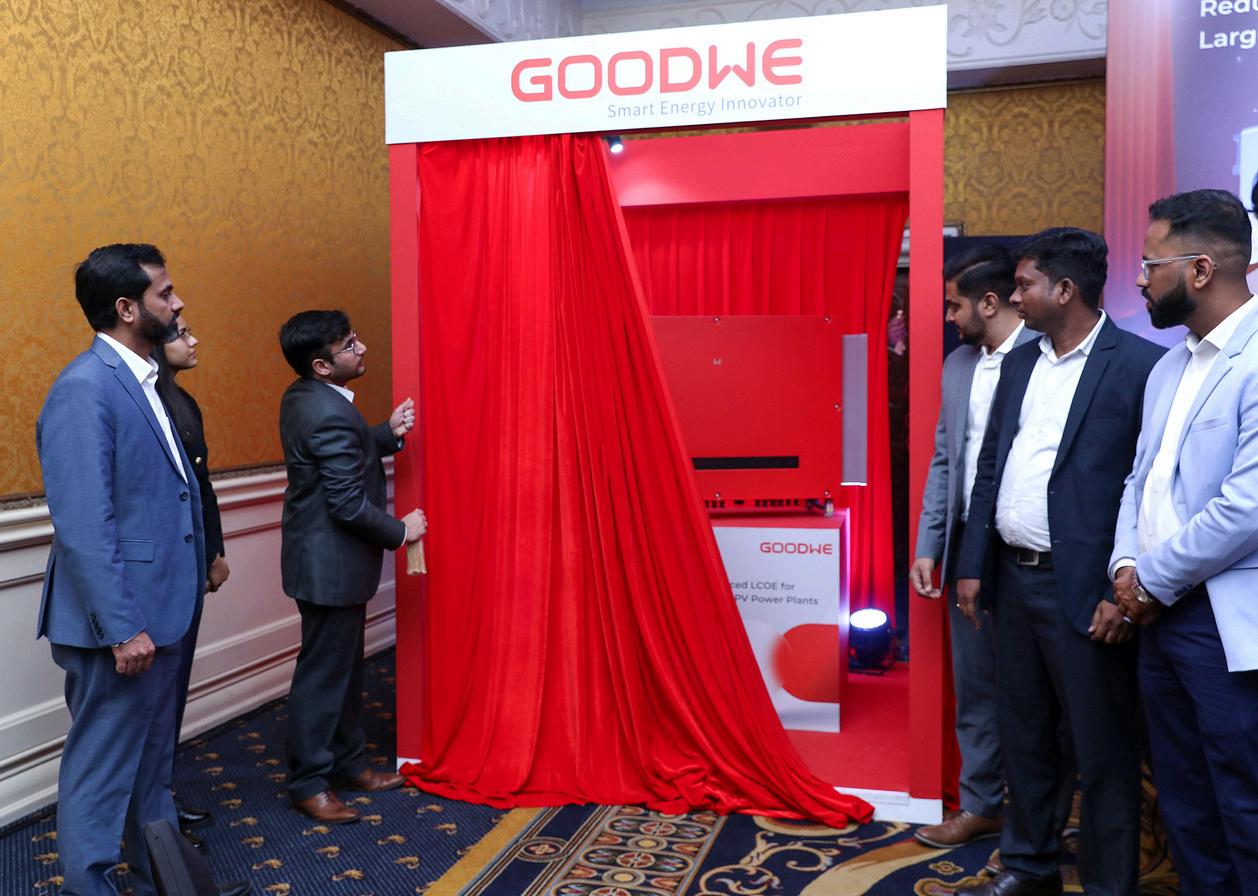
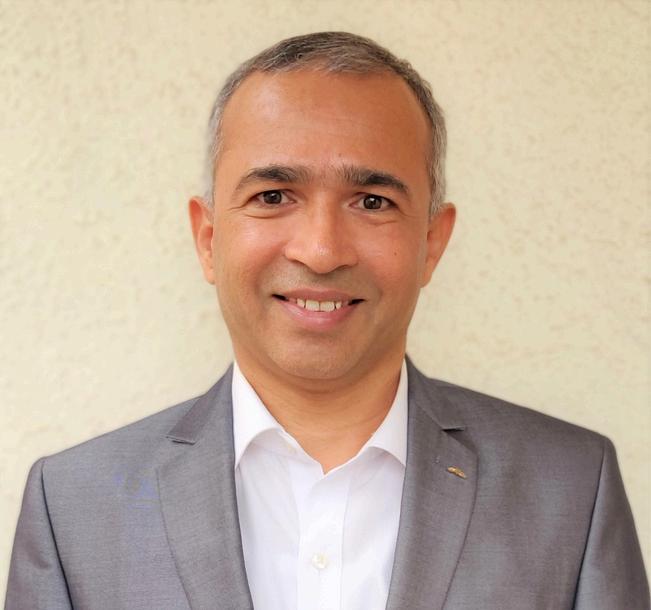
Can you tell us about EnerMAN Technologies' journey in developing IoT-based AI and ML-driven products for solar PV plant and rooftop monitoring?
In the year 2015-16, we have seen EPC service providers were not getting supply and installation of SCADA even after commissioning of the Solar Plants and not getting quick service support to resolve the filed issues. We have seen O&M service provider spending lot of time & effort in collecting the generation data manually from plant equipment, entering in MS excel and sharing the generation data We have seen Solar PV asset owners were not getting quality live data consistently to their HQ for analysis of Solar PV asset performance. Many of the SCADA suppliers’ prices were very high and SCADA contract renewal yearly charges were also very high
EnerMAN try to address all above challenges by providing end to end, inhouse developed, IoT product at affordable price (price reduction by more than 70%), quick supply and installation (turn around time reduced from 3-4 month to 3 to 6 weeks, ensured Zero data loss and automation of DGR (Daily Generation Report) / report generation
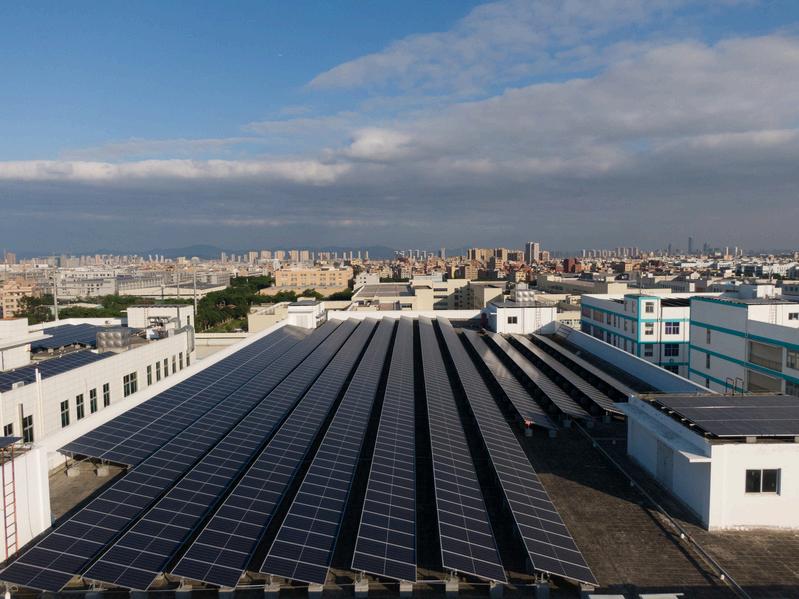
EnerMAN's affordable IoT solutions streamline solar PV plant operations, cutting costs by 70% while enhancing data analysis
EnerMAN's products reduce CO2 emissions by 18 metric tons annually, optimizing efficiency across 1 8GWp installations in 10 countries
EnerMAN's intuitive SCADA platform offers automatic DGR, live alerts, and inverter performance ranking, empowering renewable energy operators with actionable insights.
How does EnerMAN Technologies contribute to achieving net-zero emissions in regions like India/South Asia/Middle East/Australia /Africa?
EnerMAN products will help in improving the efficiency / generation by more than 2% Our products are deployed in 10 countries over 1.8GWp Solar plants which will directly contribute to generating more than 2% i e , 45 million units out of 2 25 billion units, which will reduce 18 Metric Tons of Co2 emission
Could you highlight key features of your products that are popular among renewable energy industry customers?
EnerMAN IoT SCADA’s automatic DGR, Live Alerts, Easy to use dashboards, Inverters performance Ranking, Breakdown loss analysis, customizable graphs, SLD and Live dashboard, features are popular with customers
How do EnerMAN Technologies' products address challenges for solar PV plant operators and rooftop owners, improving performance and efficiency?
Reliable, affordable, end-to-end, easy to use, SCADA solution to fulfil all regulatory compliance, quick supply & installation service and getting quality data consistently without data loss for analysis of Solar PV Assets performance is a big challenge for Solar PV Asset owners and operators EnerMAN is trying to address these challenges.
EnerMAN IoT SCADA product ETi-SOL web app and mobiles apps, monitors the performance of key equipment 24/7 and notify the faults/failures/breakdown through alerts / alarm in few seconds This will help Engineers/Technicians to attend plant equipment faults/failures/breakdown to reduce the loss of generation / damage of assets
EnerMAN provides analysis on Inverter ranking based on Inverter performance on various KPIs This will help Asset Owners / O&M site Engineers/Technicians to initiate the comprehensive maintenance work to improve the performance of underperforming Inverters, which will enhance the performance of Solar PV plants
EnerMAN provide analysis of Equipment downtime, keep track of equipment downtime, which will help Asset Owners / O&M team to take timely preventive and corrective action to reduce the downtime, which will enhance the performance of Solar PV plants and Inverter downtime loss.
What are your expansion plans in the renewable energy market, and how do you foresee your products evolving to meet future customer needs?
EnerMAN is developing monitoring, control and analysis products of BESS (Battery Energy Storage System) This will lead to utilizing renewable energy 24/7 in future

Can you discuss the latest trends and innovations in India's solar PV industry, and how do you stay competitive amidst these developments?
Innovations in solar technology include highefficiency PV cells (up to 600Wp available in market) for maximized energy for the same area Energy storage sees advancements with solid-state batteries offering higher density and faster charging, essential for solar Agrivoltaics merges agriculture and solar energy, optimizing land use, while floating solar farms and SKID solutions present unique deployment and installation efficiencies Further, developments in solar fabric and Building-Integrated Photovoltaics (BIPV) transform various surfaces into energy collectors, blending functionality with everyday environments
Stay updated on market dynamics, competitor actions, and policy shifts through comprehensive market intelligence, while leveraging scale to cut costs Forge partnerships with tech firms, financiers, and governments for resource sharing and innovative financing. Focus on technological advancements like cost-effective perovskite cells and efficiency-boosting bifacial panels for enhanced integration and energy production.
What are the key factors driving growth in the Indian solar market, and how do you plan to leverage these opportunities while addressing challenges effectively?
India aims for 500 GW of renewable energy by 2030, focusing on solar, supported by policies like the National Solar Mission and other financial incentives and subsidies. The
Solar innovations: High-efficiency cells, agrivoltaics, and BIPV revolutionize energy generation and integration
Policy and growth: India targets 500 GW by 2030, leveraging local manufacturing and embracing technological advancements
Regulatory adaptation: Real-time monitoring, collaboration, and flexibility ensure compliance and sustainability in solar projects.
country's commitment to becoming net-zero by 2070 and surging energy needs due to growth and population increase spotlight solar as a key sustainable solution Additionally, falling costs and technological advancements in solar energy are enhancing its attractiveness and feasibility within India
India boosts local solar manufacturing with incentives like the PLI scheme and imposes BCD on imports, promoting domestic production Collaborating with local entities simplifies land acquisition and facilitates the creation of solar parks, mitigating land use conflicts. Vigilant monitoring of market trends and regulatory shifts ensures strategic agility, particularly in emerging Indian markets Embracing technological innovations in solar energy enhances the efficiency and affordability of installations, keeping pace with global advancements
How do you adapt to evolving policies and regulations in India's renewable energy sector to ensure growth and compliance for solar PV projects?
To navigate the solar industry's dynamic regulatory landscape, establish a team or hire consultants for real-time policy monitoring and engage with forums and advocacy groups like NSEFI or SPDA for industry insights Strategically plan for various regulatory scenarios, assessing impacts on project viability and incorporating risk management to mitigate policy-related risks. Collaborate with legal experts for compliance across different states and actively contribute to policy-making through industry bodies Emphasize sustainability and best practices in project development to align with favorable policy
trends Lastly, design solar projects with flexibility to adapt to regulatory changes, including scalable technologies and contractual provisions for policy shifts.
What strategies do you employ to integrate energy storage solutions into solar projects, considering the increasing demand for reliable, gridindependent energy systems?
Assess storage needs based on energy usage and objectives like peak shaving or backup power to guide storage technology selection Choose between lithium-ion batteries for efficiency in residential/commercial settings and flow batteries for scalability in large-scale applications Integrate storage planning with solar PV design from the start for optimal system sizing and effectiveness Understand grid integration technicalities and regulatory requirements for grid-tied systems Stay informed on financial incentives and regulatory frameworks affecting storage system economics.
What role do solar PV developers play in India's renewable energy targets, and how do you contribute to accelerating the country's transition to clean energy?
Solar developers are key to achieve Indian government target of achieving 500 GW by 2030 goal through large-scale and rooftop installations, driving technological innovation to boost efficiency and reduce costs Their projects stimulate economic growth by attracting investments and creating jobs, while also reducing environmental impacts by offering clean, reliable power that enhances grid stability and extends energy access, especially in remote areas

SOFAR has been operating in India for almost 8 years and globally, our portfolio extends to over 18GW of shipments. We offer a comprehensive range of solar inverters, spanning from 1 kW to 350 kW; the offerings also include residential, commercial, and utility storage solutions, thereby providing a holistic approach to solar projects
In addition to our key focus on inverters, SOFAR is actively engaged in other verticals and segments This includesresidential, commercial, and industrial energy storage solutions, as well as microinverters, complementing our PV inverter offerings
Our market presence in India is extensive, with a distribution network that covers the lengthand breadth of the country. We engage in direct sales, collaborate as original design manufacturing (ODM), and maintainrelationships with channel partnersensuring our products are widely accessible throughout India
Looking ahead, our expansion strategy involves geographical diversification and deepermarket penetration While we currently hold a significant share in the residential segment, we aim to increase our presence in both the commercial and industrial (C&I) and utility segments
Certification compliance is paramount to us, and we have obtained all IEC and BIS certifications in compliance with regulatory guidelines We are fully committed to quality and reliability standards
SOFAR is proud to showcase our latest & highest-rating PV inverter offering, a 350kW
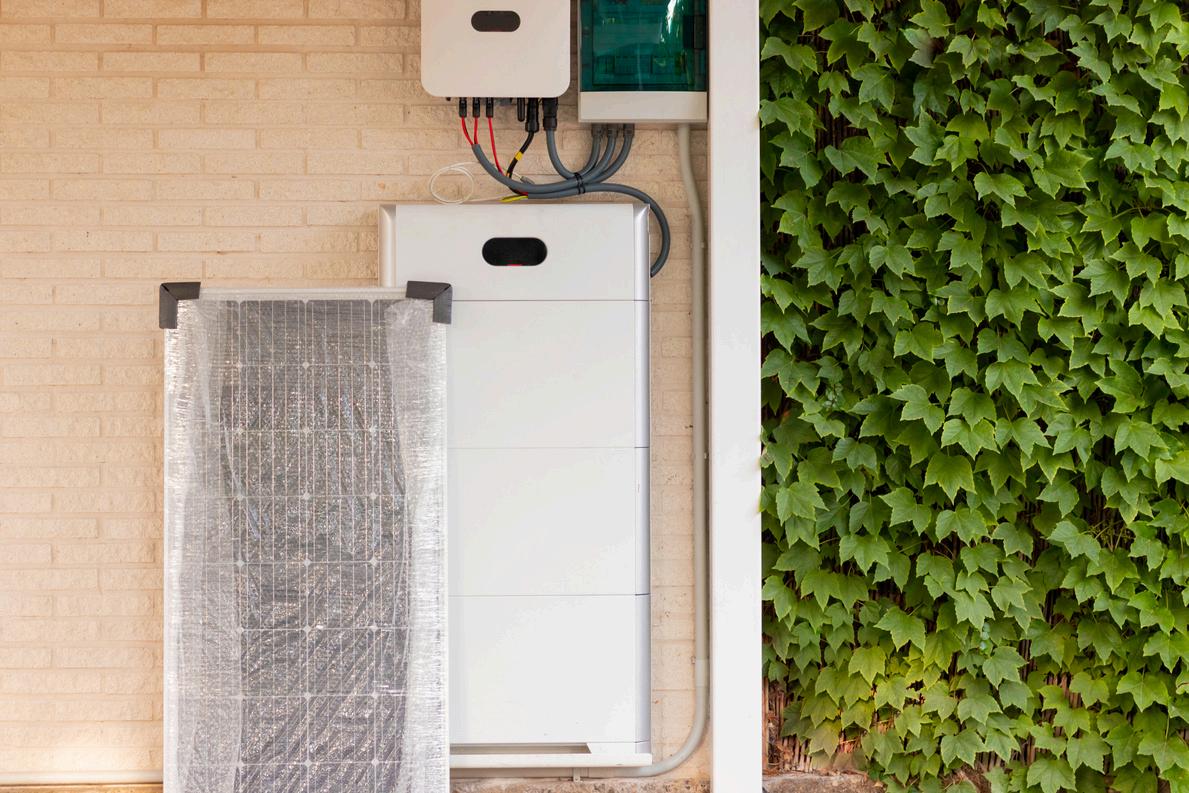
inverter which is our current flagship PV inverter This is the latest product offering tailored for utility-scale projects both in India and globally The innovative inverter is optimized for utility solar The company firmly believes that the technology in Power Mega which is 350 kW will be an important part of the solar industry’s future, given its unique advantages, including a maximum efficiency of 99 05% at 50 degrees Featuring the integration of ultra-high current, easy installation, and intelligent protection, it also characterizes 8*60A multiple MPPTs,compatible with 500Wp+ high-power modules and various utility-scale designs, which ensures lower LCOE and higher yields for end-users This marks a significant milestonein our product development lifecycle and our commitment to innovation & excellence in the solar industry
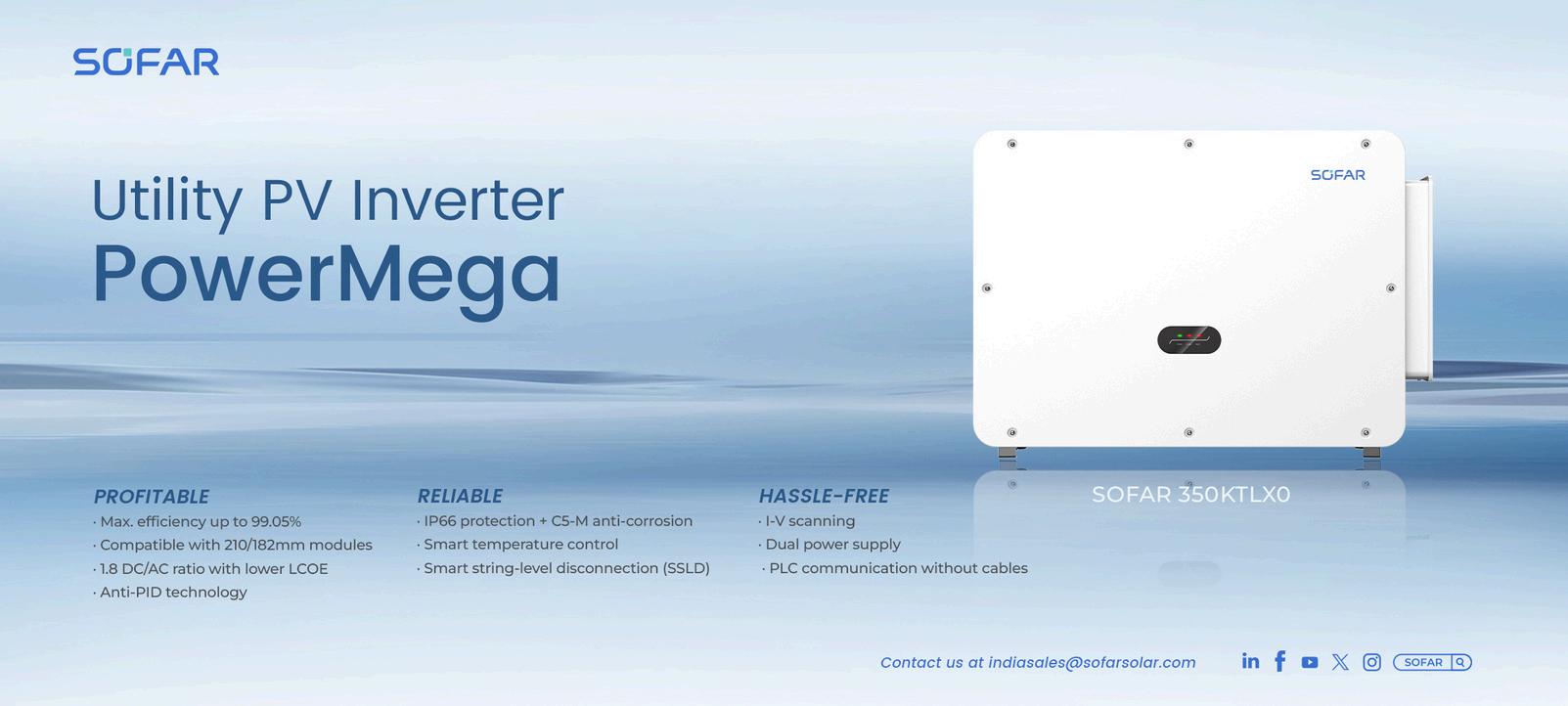


On February 13th, 2024, the Prime Minister of India, Shri Narendra Modi, introduced the ‘PM Surya Ghar: Muft Bijli Yojana’, a groundbreaking initiative aimed at installing rooftop solar panels in one crore households across India The PM posted on X: “For sustainable development and people’s well-being, we are launching the PM-Surya Ghar This scheme, with an investment of over Rs 75,000 crore, can provide up to 300 kWh of free electricity per month for one household ”

Solar Cost Relief: PM-Surya Ghar mainly offers installing solar systems for lower and middle-income families and providing corresponding subsidies and loan discounts According to current benchmark prices, it offers a subsidy of Rs 30,000 for a 1 kW system, Rs 60,000 for a 2 kW system, and Rs 78,000 for 3 kW systems or higher The Central Government will provide subsidies directly to people’s bank accounts and concessional bank loans to ensure that there is no financial burden on the individuals
Besides, a model solar village will be developed in each district of the country to act as a role model for adoption of rooftop solar in rural areas Urban local bodies and Panchayati Raj Institutions shall also benefit from incentives for promoting RTS installations in their areas
Long-Term Benefits: Installing solar panels is a long-term investment that can lead to significant savings over time, as solar energy is free and abundant PM-Surya Ghar also includes provisions for payment security for Renewable Energy Service Company (RESCO)-based models and a fund for innovative rooftop solar projects By harnessing solar energy, households can not only save on electricity bills but also earn additional income by selling surplus power to DISCOMs
Environmental Impact: The proposed scheme will increase 30 GW solar capacity, equivalent to 720 million tonnes of CO2 emissions, greatly contributing to India’s ambitious goal of carbon neutrality by 2070
Households can register themselves on https://pmsuryaghar.gov.in to avail of benefits under the scheme
Growatt is delighted by the proactive initiatives taken by the Indian government towards sustainable development and the harnessing of solar energy potential Growatt’s range of residential segment market offerings, including the ‘MIC 1000-3300TL-X’, ‘MIN 4200-6000TL-X’, and ‘MOD 3-15KTL3-X’ on-grid inverter series with sleek and compact design, is tailored to cater to homeowners participating in this scheme The highly anticipated MIC-X2, MIN-X2 and MOD-X2 series of inverters are capable of accommodating higher wattage modules, meeting the evolving needs of users
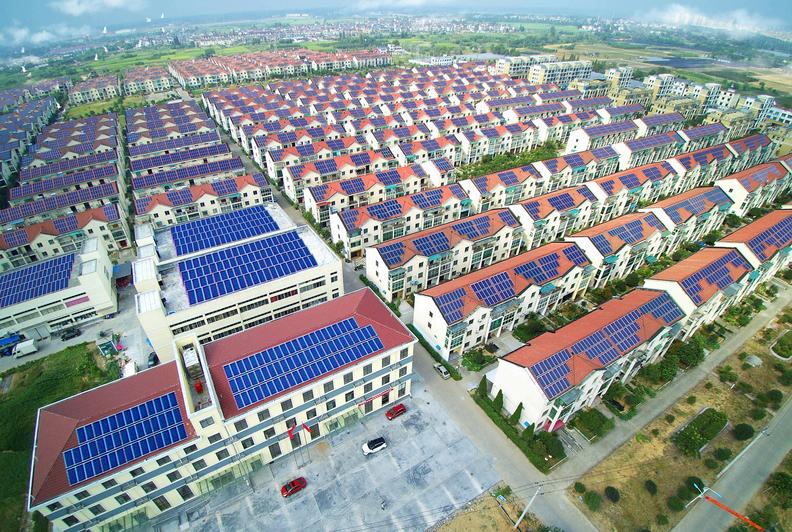
With a robust 12-year presence in the Indian market and a proven history of providing top-notch products, Growatt continues to be the favored option for customers Here to learn more Growatt’s successful solar projects: https://www ginverter com/cases










In a groundbreaking initiative, Ayodhya, the spiritual epicenter of Uttar Pradesh, has achieved the distinction of being the first solar city in the state, blending spirituality with sustainable energy endeavours FIMER, a global leader in energy solutions, has contributed to this vision by supplying its cutting-edge 5 MVA inverters for the monumental "40MW Ayodhya Solar PV Project," developed by NTPC Green Energy Ltd. Under the auspices of the Uttar Pradesh New and Renewable Energy Development Agency (UPNEDA), the 40MW solar power plant is fully operational . The project is already commissioned, spanning across two sites in Rampur Halwara and Sarairasi.
Notably, Ayodhya hosted the inauguration of the Shri Ram Temple, a significant Hindu religious site, on January 22, 2024. The inauguration ceremony, was presided over by the Honorable Prime Minister Shri Narendra Modi ji and other esteemed dignitaries, marking a historic moment for the city.
FIMER's PVS980-58 central inverters, tailored for large PV power plants, play a pivotal role in this ambitious project With high DC input voltage, proven components, and a modular design, FIMER inverters ensure a rapid return on investment The inverters' advanced features, including precise system control, maximum power point tracking (MPPT), and a self-contained cooling system, contribute to maximizing energy yield and revenue for end-users Advanced grid support features include active power limitation, fault ride through (FRT) with current feed-in and reactive power control
As Ayodhya's skyline transforms with solar splendor, it stands as a testament to the city's unwavering commitment to both its spiritual heritage and its environmental responsibility, underlined by FIMER's state-of-the-art energy solutions.

High total performance
Modular product design
High DC input voltage up to 1500 VDC
Extensive DC and AC side protection
Easy to commission, no separate chiller installation
Fast and easy AC coupling to transformer by busbars
Versatile design for large-scale PV plants to minimize system costs
Complete range of industrial data communication options, including remote monitoring
Life cycle service and support through FIMER’s extensive global service network
As Ayodhya integrates spirituality with sustainability, FIMER takes pride in contributing to this monumental step towards a greener and brighter future
FIMER is a leading global provider of renewable energy equipment, specializing in solar inverters and electric mobility systems. It offers a wide range of solar solutions for various applications, with its expertise bolstered by a bold and agile approach that involves consistent investments in Research and Development
With local training centers and three manufacturing hubs, FIMER remains close to its customers and the ever-evolving dynamics of the energy industry
For further details, visit our website www.fimer.com and follow our social channels:


Everest G12R, the world’s first heterojunction (HJT) module series based on rectangular solar cells, was launched by Huasun Energy, the global largest provider of vertically integrated HJT products, in November 2023
The Everest G12R Series modules are based on the HJT 3 0 highefficiency solar cell technology and feature 182mm*105mm rectangular cells. By integrating advanced processes including bifacial microcrystalline, SMBB, light conversion film and PIB, these modules are designed to achieve efficiency of more than 23% and a highest power output of 640MW, which is 20W more than other technology-based rectangular modules of the same type
Keeping the same width of 1134mm, Huasun developed three versions of G12R modules with different lengths catering to various application scenarios:
G12R-96, “Earning Best Return for Residential”: max power of 465W, highest efficiency of 23.02%; bring the family users with more financial returns with better dimensions and higher efficiency
G12R-108, “Achieving More Energy Yield for C&I”: max power of 520W, highest efficiency of 23 40%; the high bifaciality and strong weak light performance of heterojunction contribute to higher energy yield for Commercial and Industrial distributed solar projects
G12R-132, “Creating Best Value for Utility”: max power of 640W, highest efficiency of 23 69%; comprehensive and powerful performances create the best value for large-scale utility solar projects.
The adoption of Everest G12R modules can lead to increased project installed capacity, higher energy yield per watt, and improved overall performance As calculated, using G12R-96 modules on residential rooftops can increase installed capacity by 7% compared to TOPCon modules, resulting in an additional 47,000 kWh of power generation over a 30-year lifespan Similarly, the G12R-108 version designed for commercial and industrial rooftops offers an 8 9% increase in installed capacity and a 10 8% increase in total energy yield over 30 years The G12R-132 modules for utility-scale projects provide a 3 2% increase in energy yield per watt and contribute to lower LCOE and higher IRR.
In addition to reducing the cost, Huasun is also lowering the carbon footprint of its HJT modules In July 2023, the manufacturer achieved 366 12 g/W CO2 equivalent, and it anticipates reaching 300 g/W in the near future Additionally, the 210R module series comes with a 15-year product warranty and a 30-year performance warranty.
Huasun is manufacturing the Everest cells and modules at its facilities in Hefei, Wuxi, and Xuancheng with an annual capacity of 12 GW to ensure the sufficient supply to the world in 2024

With the release of the Everest G12R series, Huasun expands its HJT product portfolio, which consists of six mainstream module types including small versions G10-108 and G12R-196, medium versions G10144 and G12R-108, and large versions G12-132 and G12R-132, covering power outputs ranging from 450W to 750W Huasun is committed to paying attention to the needs of niche-market various application scenarios and serving the global clients with more diversified and valuable high-efficiency modules, jointly contributing to creating a zero carbon world for a sustainable future

India ranks fourth in the world in Renewable Energy Installed Capacity globally With this, it would be relevant to say the use of solar energy for self-consumption would greatly contribute towards greener, cleaner, and cheaper energy, which in turn helps reducing the carbon footprint, decrease in energy cost, or the possibility of re-selling this energy to the national grid when local regulations allow it. Solar panels are directly connected to the grid through inverters; the energy produced is transmitted to the load for self-consumption or is returned to the grid However, in some regions, the local grid operator does not allow energy injection into the grid which is called a zero export or injection limitation The injection limitation consists of controlling the amount of energy produced by a photovoltaic (PV) plant injected into the grid Limiting active power injection may be necessary to relieve the grid and reduce the reinforcement costs that this would imply Zero export system helps in achieving the goal by not injecting any amount of electrical power into the grid.
To ensure the electric grid’s stability, the solar plants may require limiting the power injection into the electric grid In some countries, the injection of electricity is prohibited i e , it is called zero export In compliance with the law and to ensure the supply of a reliable electric grid some countries prohibit electric power injection limitations It helps mitigate the abnormal events in electric grid through the generation of “undesirable” harmonics By default, excess solar energy is clipped by an injection limiter A more economical approach would be to include an intelligent energy management system such as ETi-ZES, which helps optimize the amount of energy lost by clipping the right amount of solargenerated power
Existing solutions to manage zero feed-in
Controlling the energy production of a PV plant by considering climatic variations and consumption while ensuring that the current is not injected into the electric grid proves to be a real challenge Fortunately, there are solutions to facilitate the energy management of the PV plant Before installing PV, you can make sure that your installation size best matches the consumption, the aim being not to resell energy to the grid but to optimize your rate of self-consumption
ETi-ZES
EnerMAN’s ETi-ZES has a wide range of compatibility with commercially available inverters. It helps:
Manage the power flow: reduce the solar inverters’ electricity production to ensure that solar production is not exported to the grid Records the data of equipments connected to it: collecting all data and alarms from multi-function-meters, PV inverters, Weather monitoring stations, etc
It helps benefit from extended compatibility: the communication protocol supported is Modbus RTU/TCP A simple logic to help explain how ZES works is as follows:
Step 1. Read the Active Power from the net meter.
Step 2. Check if Active power > Max Set point? If yes, increase the power on the inverter side.
Step 3 Check if Active power < Min Set point? If yes, decrease the power on the inverter side
Step 4. Check again from step 1
Minimum set point: it is the minimum required power input from the grid supply
Maximum set point: it is the maximum required power input from the grid supply in case there is enough solar power being produced to cater the load
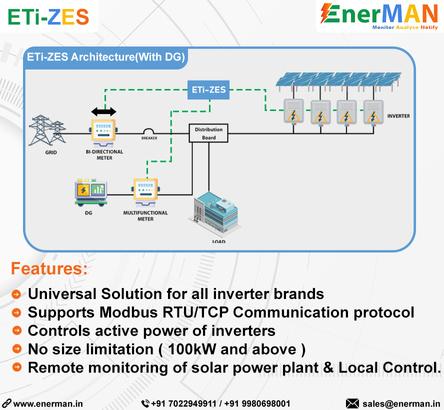
Key features of ETi-ZES are:
It ensures zero export of energy from Solar PV to grid as per DISCOM guidelines to avoid penalties
It can be installed on Local workstation/PC/Server and if required data can be shared with cloud server for remote monitoring/ access
Real time active power control of Solar Inverter(s) by monitoring onpremises power consumption
Is Solar Still Beneficial, Even with Zero Exports?
Yes, the real savings come from using the solar electricity generated locally rather than purchasing it from the grid With grid electricity costing roughly Rs 4/- to Rs 5/- per kilowatt hour, reducing this cost by using the locally generated solar power immediately saves money
Conclusion
The zero-export system maximizes self-consumption and uses most of the solar power generated locally ETi-ZES helps achieve this goal economically
Advancing Solar O&M: Insights from ACME Cleantech's AVP & Head of O&M

What is the current state of solar O&M practices in the Indian market, particularly highlighting trends and challenges?
Trends:
There are two models right now in solar O&M, first one where IPP themselves manage O&M of Solar plant and second where IPP outsource the O&M to third party O&M operators.
Tech adoption:
Data-driven tools like AI and remote monitoring are increasingly used for predictive maintenance and performance optimization
Specialization:
Dedicated O&M companies are emerging, offering improved quality and expertise compared to EPC contractors.
Robotic cleaning:
There are several companies offering automated cleaning solutions for Solar plants which are water free and enhance the yield of solar plants
Standardization efforts:
Initiatives like "O&M Best Practice Guidelines: India" aim to improve service quality and transparency.
Challenges:
Skill: There is high demand of skilled personnel trained in advanced O&M techniques
Good service provider for different services for O&M plants
Management of out of warranty equipment’s for old projects
Data security: Integrating new technologies raises concerns about data privacy and cybersecurity
Grid Stability.
Forecasting and Scheduling, diverse climate conditions.
Assistant Vice President (Head – Solar O&M) ACME Group
ACME's data-driven approach optimizes efficiency through analytics, enabling proactive maintenance and performance enhancement in solar operations.
Emphasis on cultivating a skilled workforce and fostering innovation ensures ACME stays ahead in the dynamic solar O&M market.
Robust risk management strategies, tailored to India's diverse climates, safeguard ACME's solar assets, ensuring long-term sustainability and reliability
What strategies does ACME Cleantech employ to ensure optimal performance and maintenance of solar assets in the Indian context?
ProactiveMaintenance:
Scheduled inspections and cleaning: Regular inspections and cleaning of solar panels are crucial to maintain their efficiency
Predictive maintenance:
ACME utilizes data analytics and machine learning to predict potential issues before they occur This allows for targeted maintenance interventions, minimizing downtime and maximizing energy generation
Condition monitoring:
Sensors and monitoring systems are deployed to track key performance indicators (KPIs) like module temperature, string voltage, and inverter performance Real-time data allows for early detection of anomalies and prompt corrective action.
SkilledWorkforce:
In-house training:
ACME invests in training its O&M personnel on the latest technologies and best practices This ensures a skilled workforce capable of handling complex maintenance tasks
Partnerships:
ACME collaborates with leading technology providers and research institutions to stay ahead of the curve in O&M advancements
TechnologyAdoption:
Data-driven insights:
ACME utilizes data analytics platforms to gain insights into plant performance, identify optimization opportunities, and make data-driven decisions for maintenance activities
Remote monitoring:
Remote monitoring systems enable realtime tracking of plant performance from anywhere, allowing for quick response to issues and improved operational efficiency
Digital twins:
ACME is exploring the use of digital twins, virtual replicas of their solar plants, to simulate various scenarios and optimize maintenance strategies
TechnologyAdoption:
We have inhouse specialized team for preventive maintenance, equipment testing etc
Research and development:
The company invests in research and development of new O&M technologies and solutions tailored to the Indian context
India?
ACME Cleantech is at the forefront of leveraging technology and innovation to enhance efficiency and effectiveness in solar O&M operations in India. Here are some keyways they achieve this:
Data acquisition:
Deployment of sensors and monitoring systems across solar plants to collect realtime data on various parameters like module temperature, string voltage, inverter performance, and weather conditions
Data analytics platforms:
This data is fed into advanced analytics platforms that use machine learning and artificial intelligence (AI) to identify patterns, predict potential issues, and optimize maintenance schedules
Predictive maintenance:
By analysing historical data and trends, ACME anticipate equipment failures before they occur, allowing them to schedule targeted maintenance interventions and minimize downtime
Performance optimization:
Data insights help to identify areas for improvement, such as optimizing panel tilt angles, inverter settings, and cleaning schedules, to maximize energy generation
Digitalizationandautomation:
Remote monitoring:
We utilize remote monitoring systems that enable to track plant performance from anywhere in real-time, facilitating prompt responses to issues and improving operational efficiency.
Digital twins:
ACME is exploring the use of digital twins, virtual replicas of solar plants, to simulate various scenarios and optimize maintenance strategies This helps to test different approaches without impacting the actual plant and identify the most effective solutions
Robotic cleaning:
we have deployed robotic cleaning solutions for large-scale solar projects These robots automate the cleaning process, improving efficiency, safety, and panel performance
Focusoninnovation:
Openness to new ideas:
ACME fosters a culture of innovation within the company, encouraging employees to experiment with new technologies and approaches
Continuous improvement:
We have a continuous improvement mindset, constantly evaluating the O&M processes and looking for ways to improve efficiency, effectiveness, and cost savings
What are the key considerations and best practices in managing and mitigating risks associated with solar O&M activities, especially amidst India's diverse climatic conditions?
Managing and mitigating risks associated with solar O&M activities in India's diverse climatic conditions requires a multi-pronged approach.
Riskidentificationand assessment:
Understand diverse climates:
Recognize the specific risks associated with each region (dust, extreme heat, high humidity, monsoon rains, etc )
Equipment selection: Choose components rated for the expected environmental conditions to ensure durability and performance
Regular inspections: Conduct scheduled inspections to identify potential issues like corrosion, loose connections, and animal damage early on
Data analysis: Leverage historical data and weather forecasts to anticipate potential risks and take preventive measures
Mitigationstrategies:
Preventive maintenance: Implement a robust preventive maintenance plan tailoredtotheclimateandenvironment This includes frequent cleaning in dusty regions or specialized coatings for corrosionprotection
Monitoringandcommunication: Real-time monitoring systems to track key parameters and enable prompt response to anomalies Implement effective communication protocols to ensure timely information sharing amongstakeholders
Training and safety: Train personnel on safe working practices specific to the climatic conditions and provide them with appropriate personal protective equipment(PPE)
Insurance and risk management plans: Secure adequate insurance coverage against potential natural disasters or equipment failures Develop comprehensive risk management plans to address various scenarios and minimizelosses
As the AVP and Head of O&M, what do you foresee as the future trends and developments in solar O&M practices in India, and how is ACME preparing to stay ahead in this dynamic market?
AsaHeadofO&M,here'smyperspectiveon the future of solar O&M in India and how ACMEcanstayaheadofthecurve:
Futuretrendsanddevelopments:
Data-driven O&M: Expect even greater integration of AI, machine learning, and big data analytics for predictive maintenance, performance optimization, and risk mitigation.
Remote monitoring and automation: Continued advancements in sensor technology, robotics, and drones will enable more sophisticated remote monitoring and automated tasks, improving efficiency and safety
Blockchain for transparency and traceability: Blockchain technology holds potential for secure data management, transparent reporting, and improved asset tracking within the O&M value chain Shift towards asset performance management: Focus will move beyond preventive maintenance to optimizing asset performance throughout its lifecycle, maximizing energy generation and return on investment
HowACMEcanstayahead:
Upskilling the workforce: Train and equip our O&M personnel with the skills and knowledge required to operate and maintain advanced technologies effectively
Data governance and security: Implement robust data governance frameworks and cybersecurity measures to ensure data privacy and integrity in the increasingly data-driven O&M landscape. Standardization and best practices: Advocate for and actively participate in developing standardized O&M practices for the Indian solar industry, contributing to the overall growth and quality of the market
In the context of solar project AUM, how does ACME integrate data analytics and predictive maintenance techniques to proactively identify potential issues and ensure the long-term sustainability of solar assets in the Indian market?
ACME Cleantech takes a multi-pronged approach to integrate data analytics and predictive maintenance techniques for its growing solar project AUM, ensuring proactive issue identification and long-term asset sustainability in the Indian market:
DataAcquisitionand Management:
We have inhouse developed Central Monitoring System, where all our operational sites are connected at central level
Data collection and storage: This data is transmitted to a central repository (cloud) for safe storage and easy access
Data governance and security: Robust data governance frameworks and cybersecurity measures ensure data privacy and integrity
DataAnalyticsandInsights:
Advanced analytics platforms: Machine learning and AI-powered platforms (CMS) analyses the collected data to identify patterns, predict potential issues, and optimize maintenance schedules. Performance benchmarking: Historical data and industry benchmarks help evaluate plant performance and identify areas for improvement
Root cause analysis: Analytics pinpoint the root causes of past issues, preventing their recurrence and optimizing future maintenance strategies
PredictiveMaintenanceand ProactiveActions:
Risk assessment and prioritization:
The platform prioritizes potential issues based on their severity, likelihood, and impact on energy generation
Proactive repair and replacement: Anticipating component failures allows for pre-emptive repairs or replacements, preventing major breakdowns and ensuring consistent performance
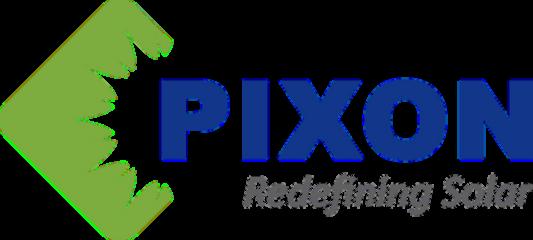
In an era where renewable energy solutions are more crucial than ever, PIXON is making waves with its latest advancements in solar technology PIXON in its significant expansion of its product line, introducing groundbreaking manufacturing capabilities alongside products engineered to redefine industry standards With the unveiling of a 1 GW manufacturing capacity, PIXON’s solar modules and EVA films are now produced using the most advanced technologies, embodying the pinnacle of efficiency, durability, and performance This stride towards excellence underscores our unwavering commitment to not just meet, but exceed the expectations of our customers
A key highlight of this expansion is the introduction of the Multibusbar Modules, produced in our new 1 GW manufacturing line This move represents PIXON’s dedication to spearheading technological breakthroughs in the solar industry The Multibusbar Modules stand as a testament to our focus on achieving the highest levels of efficiency, ensuring that their clients have access to solar products that promise premium performance and optimal energy output
Delving deeper into our innovations, PIXON proudly presents the monofacial M6, M10, and M12 bifacial series PV modules This series is the embodiment of PIXON’s engineering excellence, offering output capacities that range from an impressive 420 Wp to 600 Wp, coupled with an extraordinary efficiency rate of 21 29% Understanding the diverse needs and applications of our clients, they have developed three variants within this series: Glass to Glass,

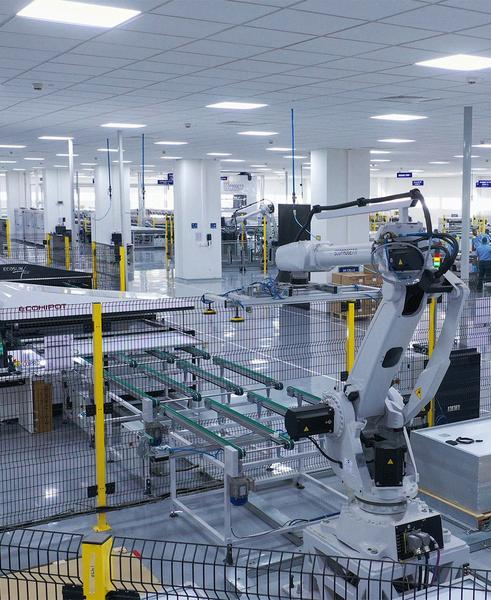
Glass to Backsheet, and Glass to Transparent Backsheet Each variant is designed with precision to enhance performance and longevity across different environmental conditions The Glass to Glass model epitomizes durability, the Glass to Backsheet variant balances efficiency with extended service life, and the Glass to Transparent Backsheet merges aesthetic elegance with functional efficiency, making it an ideal choice for installations where appearance and performance are equally prioritized
Through these pioneering developments, PIXON is not just keeping pace with the evolving demands of the renewable energy landscape; they are actively shaping its future Their commitment to innovation and quality ensures that we continue to offer solar energy solutions that are not just cutting-edge but also tailored to the dynamic needs of our global customer base.
PIXON was founded in 2019 with the vision to lead the transition to a sustainable energy future, reducing environmental impact, and improving lives globally Since initiating with 400 MW, we’ve grown into a 1 GW fully automated Solar Module Manufacturer to deliver quality products for unmatched customer experiences To build it better, we are also doing backend integration with 1 GW Manufacturing of EVA Film. We are India’s most premium renewable energy company helping people with the best Solar Products globally For more information, please visit www.pixonenergy.com

Renewable energy, once just a niche segment of the broader energy industry, is growing rapidly and becoming an important source of power in many regions across the country At the helm of this change is SMA India a beacon of innovation and reliability in the solar energy space
A subsidiary of SMA Solar Technology AG, SMA India was instrumental in powering one of the country's earliest large solar PV plants with an SMA central inverter. Since its formal inception in October 2010, it has carved out a name for itself in the photovoltaic (PV) and storage system sectors Some of their products including Sunny Tripower CORE2 and Sunny Highpower PEAK3 inverters are now used in various applications across the country The PEAK3 inverter focuses on maximum yield and optimal plant availability and the CORE2, which is tailored for medium to large-scale commercial PV systems, offers unparalleled flexibility
Commenting on one of SMA’s recent offerings, the Sunny Highpower PEAK 3, Cyriac Loyola, Head of Application Engineering Large Scale Solutions – India South East Asia and South Korea, SMA says,” PEAK3 is a future-proof solution tailored to our consumers’ needs With over 20 years of utility experience behind its development, the PEAK3 system solution offers central handling, decentralized system capabilities, and a modular concept, making it an unbeatable choice Its powerful supplements ensure optimal performance for large PV plants, ensuring your investment grows with your requirements "
In the decade since then, SMA has diversified its offerings to meet the changing energy needs in the country They provide solutions for home, commercial industrial, and utility large-scale applications, including efficient battery inverters, system solutions for PV and storage, and intelligent energy management systems SMA inverters, installed worldwide, contribute to reducing approximately 63 million tons of CO2 annually They have also crossed the 125GW+ cumulative installed capacity threshold, showcasing their capacity to tackle diverse terrains and climatic conditions across the globe.
Our commitment goes beyond providing top-tier solar solutions; it's about empowering communities, fostering sustainable growth, and paving the way for a greener tomorrow Every project we undertake is a step closer to this vision, ensuring that we're not just meeting the energy needs of today but building a resilient infrastructure for generations to come,” says
Abhijeet More, Sales Head India – Home & Commercial Business, SMA India.
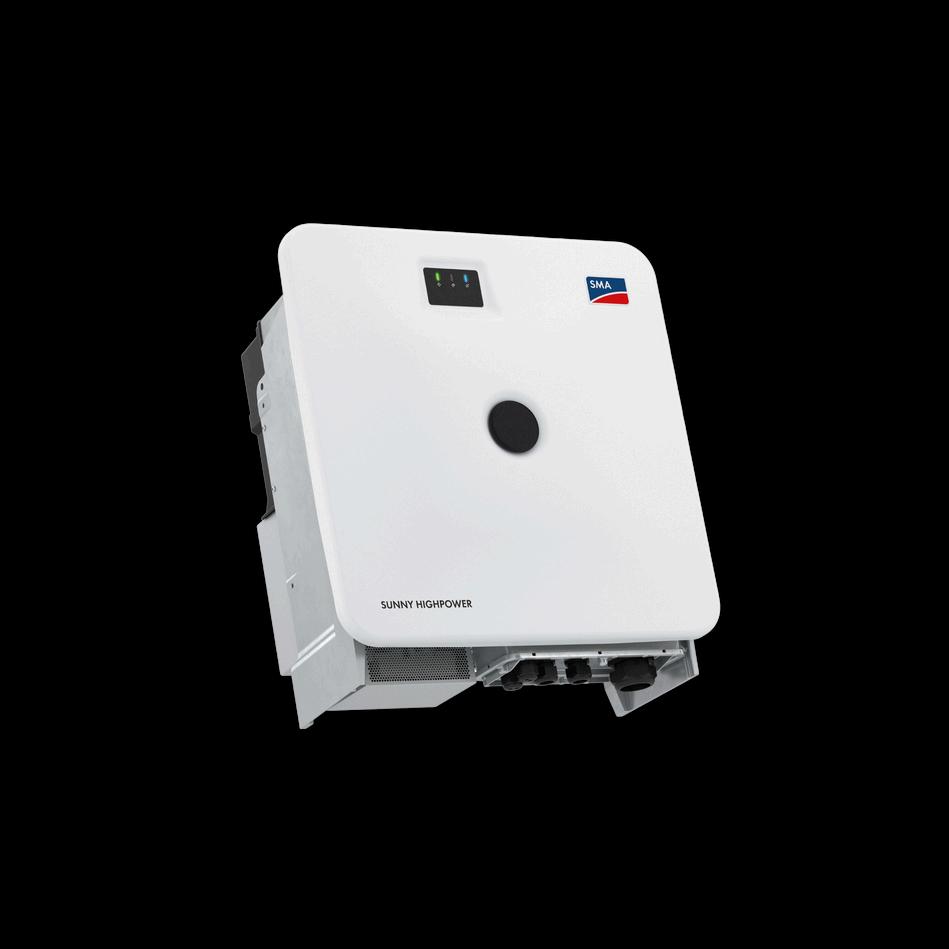
Business is one aspect of SMA India’s success, the other two are education and empowerment The SMA Solar Academy in Thane has trained numerous engineers in space The academy's mission aligns with the company's vision of facilitating energy transition through knowledge and practical skills
As the country moves towards more sustainable forms of energy, SMA India is already championing the solar revolution with their technology, expert knowledge, and commitment, collectively ushering us towards a greener future
We're excited to announce our participation in the upcoming RenewX event, taking place on April 26th - 27th, 2024, at HITEX in Hyderabad If you're attending the expo, we invite you to visit us at Booth No 3 60, Hall 3 Our team will be there to demonstrate how SMA can revolutionize your business and integrate seamlessly into your current portfolio We look forward to meeting you!
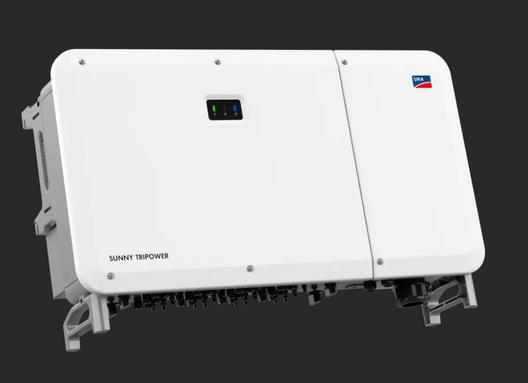

EnerMAN is a leading provider of innovative, IoT based AI & ML driven, Energy Management solutions at affordable price to Renewable Energy Industry EnerMAN Technologies is founded in 2019, with the vision to “Provide innovative digital products to manage energy and decarbonise the world” EnerMAN is striving towards to achieve net zero goal by Providing AI & ML driven IoT based products to digitize Renewable Assets
From data acquisition at the site equipment level, to analysis of data that provides meaningful insights to plant generation & health, EnerMAN provides end to end solution to digitize and manage your PV assets
EnerMAN provides end-to-end solution i e Hardware, Firmware and Software systems that are developed inhouse by experienced team We are proud to say that our products are Made in India products to cater to global market at an affordable price
EnerMAN products will help in improving the efficiency / generation by more than 2% Our products are deployed in 10 countries over 1 8GWp Solar plants which will directly contribute to generating more than 2% i e , 45 million units out of 2 25 billion units, which will reduce 18 Metric Tons of Co2 emission
Few of the Solar PV industry leaders from prestigious Govt organizations with whom we are proud to associate with are BHEL, GSECL, BEL, NTPC, HAL, MES, NFC, AIIMS, IISc, & NLC in India
Apart from this, our Wind-Solar Hybrid PPC (Power Plant Controller) solution is running successfully in more than 100MW of Wind-Solar Hybrid plants in Karnataka and our Solar PPC is implemented to 350MW single largest plant in Kurnool, AP.
EnerMAN's success story spans across borders, with deployments in 10 countries and a proven track record of enhancing solar generation by over 2%, contributing significantly to carbon emissions reduction worldwide.
Our ever-increasing product portfolio proves that there is always demand for good product, which is reliable, easy to use with user friendly dashboards (GUI), timely & accurate alerts on breakdowns, and backed by quick customer service support from professional team
EnerMAN’s ETi series products help you acquire data from the equipment/sensor in the solar PV plants / rooftops, process and store the data in the cloud/local server and present you with user friendly dashboards to monitor, control and analyse the performance
EnerMAN provides a wide range of solar PV monitoring and control management solutions which are required for digitizing Solar assets and efficient management of Solar assets with optimal performance
ETi-SOL®:
Is a cloud-based software platform which acquires data from the field IoT devices for Monitoring, Controlling, Analysis and Reporting (DGR & others reports) of Solar PV plants /rooftops It is the analytics engine which can be used to compare equipment/plant performance & do lots of trend analysis It is also Centralized monitoring platform -Integrate multiple SCADA into single dashboard User can monitor through mobile app, both, Android, and iOS.

For the customers who do not want to pay annual cloud server charges to view their plant data, EnerMAN has introduced ETi-SOL® Edge which is a local monitoring solution One time investment to the system which does not require internet & cloud storage.
Power plant controller is a reliable and flexible solution that can control different parameters present in Solar PV plants to achieve Utility grid requirements at POI (Point of interconnection). PPC is a combination of Software Logic and Hardware which continuously monitor the healthiness of grid and automatically acts in case of any abnormality. EnerMAN’s Power Plant Controller (ETi-PPC) is a control system that can manage active power, reactive power, and power factor from Solar Inverter (Solar Plant, Solar-Wind Hybrid Plants)
Some of the ETi-PPC features are
Interactive dashboard for Solar Monitoring/Control
Automatic/Manual Control Operations Operations Scheduling.
Active Power/Reactive Power/Power factor Control
ETi-LOG:
is an IIoT Data logger, which collects the data through RS 485 (RTU/TCP) from PV plants' end equipment and sends data to Local PC/Servers or to the cloud Servers through RS485 (RTU/TCP) or RF or Wi-Fi We will ensure that there is no data loss through local storage in our ETi-LOG IoT datalogger during any communication issues due to internet failure at the plant
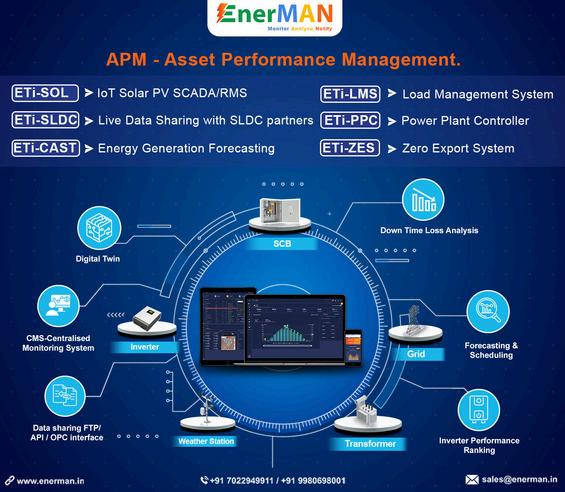
This software product can be installed in local PCs/Servers to collect data from the Solar PV plant’s equipment and can send important processed clean data to SLDC in a few seconds as per SLDC guidelines.
ETi-ZES: Zero Export system:
We have developed another software product, ETi-ZES, which will ensure Zero Export from Solar PV plants / Rooftops to Grid, as per DISCOM policy guidelines, to avoid penalty This product collects the data from Solar PV plants' end-equipment and controls/limits the out-going power of Solar Inverters based on its load/consumption at factory/manufacturing unit
ETi-LMS: Load Management System:
We have developed yet another software product An IoT Solution for DG-Sync which is a universal Solution for all Inverter brands (Supports Heterogenous Make) Controls Active Power of Inverters.

ETi-CAST:
Energy Generation & Forecasting solution which is a cloud-based forecasting tool for solar power plants
ETi-SOL® Android/iOS App:
Introducing the new mobile app version of our SCADA. Now the home page in the app is similar to web version i e all the plants in one with with its pirority status list The much awaited in-app alert notification feature is now up and going. Both, Android and iOS are now available
EnerMAN has a proven track record in providing solutions for Remote Monitoring, Local Monitoring, and Integration with third party Scada using REST APIs or FTP server or OPC interface We are planning to expand our products entry to more countries and increase our product deployment by 100% in 2024-25 For more information regarding our solutions email sales@enerman.in or login to www enerman in


BluPine Energy (Leading Development, Project Management & Execution, EPCM, Engineering & Construction for India Wind Business)
The Indian renewable energy sector is experiencing an unprecedented surge in growth and innovation, marking a significant milestone in the country’s journey towards sustainable development Over the past five years, the sector has witnessed a remarkable addition of approximately 55GW of renewable energy capacity, driven by ambitious government targets and proactive initiatives aimed at expediting capacity expansions. With a steadfast commitment to achieving 500 GW of renewable energy capacity by 2030, India is poised to emerge as a global leader in the transition to clean energy
Central to this rapid expansion is the advent of electronic reverse auctions (e-RAs), introduced by prominent organizations such as GUVNL, SECI, NHPC, NTPC, and SJVN These auctions have catalysed a surge in renewable energy projects, particularly focused on Round the Clock (RTC), Interstate Transmission System (ISTS), and Flexible & Dispatchable Renewable Energy (FDRE) projects Such initiatives aim to address India’s mounting peak power deficit by enabling the generation of round-the-clock renewable power, crucial for sustaining the nation’s growing energy demands
India’s power demand has grown at 8% FY2023-24 YTD compared to the long-term government forecast of 6% CAGR. With more than half of coalbased plants under construction delayed by 3-4 years and small supplyside shocks in the last three to four years, India is experiencing an increase in peak power deficit In the current fiscal year, the peak power deficit was 10 GW during non-solar hours in the evening (6-8 pm)
Several factors contribute to the flourishing growth of the renewable energy sector, including attractive solar module prices and favourable
market conditions resulting in competitive prices for solar modules, making solar energy more economically viable than ever before.
Despite remarkable progress, the industry grapples with several challenges that impede the realization of its full potential
PPAs Signing Delays: Most projects allocated through e-RAs encounter delays in Power Purchase Agreement (PPA) signings due to concerns over higher tariffs, resulting in capacity addition delays compared to the plan
Inadequate Transmission Infrastructure: Inadequate transmission infrastructure results in longer Extra High Voltage (EHV) lines, escalating construction costs, operational losses and time, and constraints in evacuating power from remote, solar/wind-rich areas
Uncertainties of ALMM Implementation: Ambiguities regarding the implementation of the Approved List of Models & Manufacturers (ALMM) by the Ministry of New and Renewable Energy (MNRE), targeted from April 1, 2024, raise questions such as:
Is ALMM applicable for projects in the public sector? Do these projects come under the government purchase umbrella (if so, then ALMM is mandated)?
ALMM has been waived for PV projects in the “Advanced Stage of Construction” and module orders placed before 31st March 2024 What defines the “Advanced Stage of Construction”? Is it project site development done and awaiting DC-side installation, or DCside Installation in progress?
Is ALMM not applicable for open-access projects, and does this mean BIS certification is waived on these projects?
With visibility on ALMM, the sector requires certainty and a visible policy trajectory for tariff and non-tariff barriers with a look-ahead of at least five years Anything less than that will be detrimental to the sector
Longer Project Development Cycle Time: Round-the-clock (RTC) and Flexible & Dispatchable Renewable Energy (FDRE) projects, including land acquisition, experience longer project development cycle times Most projects demand 2/3rd wind capacity installation to optimize Battery Energy Storage System (BESS) sizing and project economics
Site selection considerations include environmental and social compliance and proximity to power evacuation networks
Contiguous land availability for Solar PV plants is crucial
Each Wind Turbine Generator necessitates 7-8 acres of land for rotors exceeding 150 meters in diameter, leading to negotiations with 4-5 village landowners per WTG parcel Consequently, a standard 200 MW wind farm equipped with 3 MW turbines typically entails liaising with over 300 landowners, presenting a highly intricate and time-intensive procedure
Right of Way (ROW) challenges are a common occurrence in wind projects, spanning 500-700 square kilometres and involving numerous villages and stakeholders. These challenges, particularly evident during the construction of foundations for wind turbine generators, logistics, installations, and EHV 33 KV transmission lines, frequently result in significant delays in project completion
Training and Development of Human Resources: The shortage of skilled professionals poses a significant challenge, underscoring the need for investments in training and development of human resources to meet the sector’s evolving demands
Despite these challenges, the sector presents numerous opportunities for growth and innovation
Introduction of Time-of-the-Day Tariff: In June 2023, the Power Ministry proposed an amendment to the Electricity Act 2023, introducing a time-of-the-day (ToD) tariff mechanism. This mechanism applies to industrial and commercial consumers (with maximum demand exceeding 10kv) from April 1, 2024, and will extend to all consumers except agricultural users from April 1, 2025 The rules stipulate:
A 20% lower tariff during specified solar hours (8 hours a day as determined by the State Regulator)
A 20% higher tariff for industrial and commercial consumers (10% higher for others) during non-solar hours
ToD tariffs to enhance demand-supply management, reduce bills for customers able to shift load to solar hours, increase renewable energy integration, and drive the widespread adoption of smart meters
Strong Government Push for RE 2030 Target and Net Zero Target: The government is actively promoting the achievement of the Renewable Energy (RE) 2030 target and the Net Zero target, signalling a significant opportunity for market players to contribute towards these ambitious objectives
Residential Rooftop Solar Promotion: Initiatives like the 'Pradhan Mantri Suryodaya Yojana' signify the government’s thrust towards promoting rooftop solar in households, presenting vast untapped potential for solar energy adoption Presently, household rooftop solar installations account for only a quarter of the nearly 12 GW (1 GW equals 1000 megawatts) of rooftop solar installations in India Approximately 6 7 lakh households are estimated to have rooftop solar installations, a figure significantly below the targeted 1 crore installations envisioned by Prime Minister Narendra Modi
Solar PV Module Domestic Manufacturing: The emphasis on domestic manufacturing of solar PV modules, driven by initiatives such as Make in India and the Production-Linked Incentive (PLI) schemes aims to bolster indigenous production capacity Currently, India has a manufacturing capacity of 35GW, with a target capacity of building 500 GW of renewable energy capacity by 2030, of which solar energy will contribute around 300 GW The PLI scheme has created an opportunity to add 40 GW of module manufacturing capacity by the end of FY25 The impact of Make in India has been significant, initially reducing India’s dependence on imported cells from China Subsequently, the imposition of customs duties on imported solar modules and cells led to a substantial decline in imports. Furthermore, the introduction of the Approved List of Models and Manufacturers (ALMM) in 2021 as a non-tariff barrier enabled local manufacturers to participate in government bids However, to maintain momentum in solar installations, the ALMM mandate was suspended until April 2024
Technology Breakthroughs: Technological advancements, including high-efficiency modules and bifacial modules, offer opportunities for innovation and cost reduction, further propelling the growth trajectory of the renewable energy sector
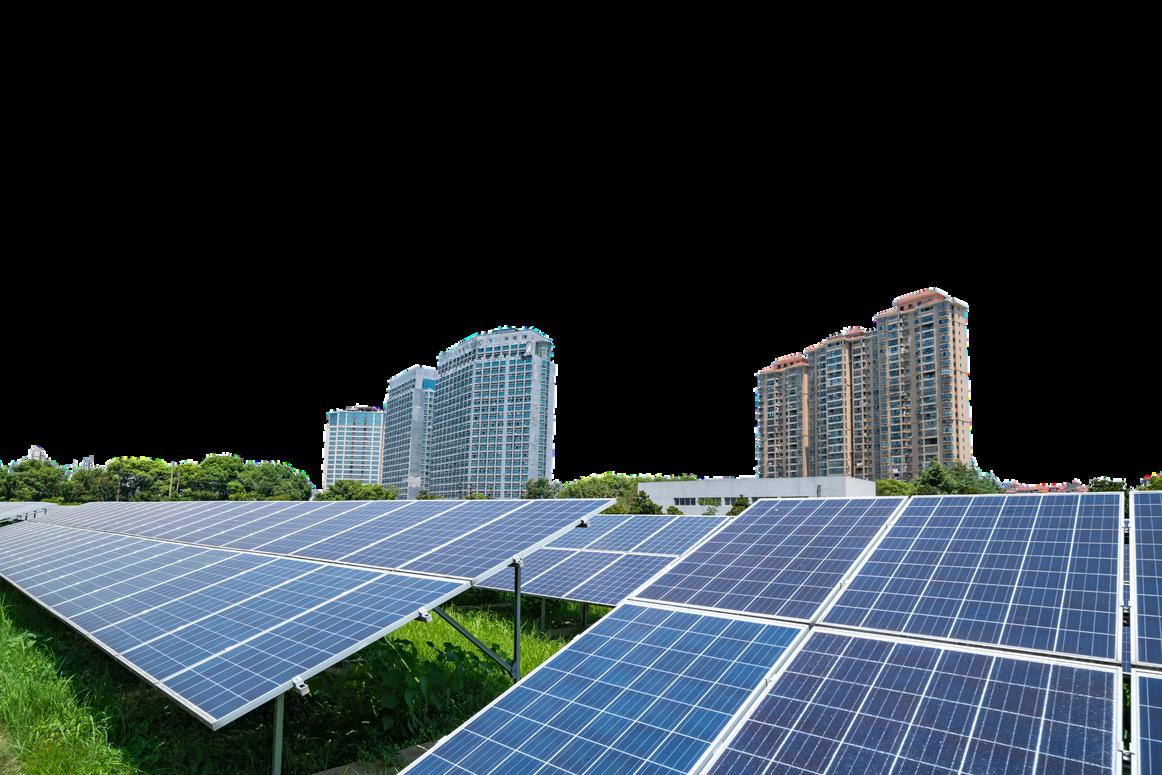

Established in 2007, Deye has been a leading provider of energy solutions through his quality products and good service The cumulative shipments of Deye hybrid inverters have reached 800,000 by 2023, showing the world a testament to their commitment to renewable energy solutions.
Deye Three Phase hybrid inverter series presents a comprehensive solution tailored to meet the diverse energy needs of residential, commercial and industrial consumers Among all the products, Deye 50kW Three Phase Hybrid Inverter boasts several key advantages that set it apart in the market
Max. 800V battery for higher efficiency
The Deye 50kW Three Phase Hybrid Inverter features lithium Ion batteries with a maximum voltage of 800V (the battery voltage range is 160-800V) This elevated voltage not only enhances the efficiency of energy conversion but also contributes to prolonged battery life. With this advantage, users can expect optimal performance and greater energy savings over time Also, Paired with lithium Ion batteries, it boasts heightened energy density, enabling prolonged power supply durations within a compact volume
Max. charging/discharging current of 100A
Equipped with two battery inputs, each capable of handling a maximum charging/discharging current of 50A, the inverter ensures efficient energy transfer processes This design facilitates quicker charging and discharging cycles, thereby optimizing overall system performance and maximizing energy utilization.
Max. 36A * 4 MPPTs = more energy production
Featuringamaximumof4MPPtrackersandamaximumoperating input current of 36A per MPPT, the inverter maximizes energy production by efficiently tracking and utilizing the available solar energy This ensures optimal performance even in varying sunlight conditions resultinginhigheroverallenergyyields Also thefourMPP trackersmakeiteasyandflexiblefortheconfigurationofPVmodules
Max. 10 pcs parallel & Support multiple batteries parallel
With support for up to 10 parallel units for both on-grid and off-grid operations, this inverter offers unmatched scalability for large C&I scenarios Additionally, it seamlessly integrates with multiple batteries in parallel, such as Deye’s star product - BOS-G battery. This versatility allows for easy expansion and adaptation to evolving energy needs
6 time periods for battery charging/discharging
The inverter features six programmable time periods for battery charging and discharging This feature is usually used in scenarios where there is a large difference between peak and valley electricity prices This customization capability enables users to align energy storage and usage with specific consumption patterns, and thus optimizes energy management and saves your pocket.
UPS Level Grid-to-Off-Grid Switching
Support Diesel Generators for Improved Power Stability
In addition to storing energy from solar panels, the inverter gets energy from diesel generators Equipped with automatic voltage regulation, it enhances the power quality of hybrid solar-diesel systems. In scenarios where solar generation falls short of demand, seamless switching to diesel generators ensures uninterrupted power supply, facilitating continuous electricity generation
100% Three Phase Unbalanced Output, Each Phase
The SUN-29.9-50K-SG01HP3 series features 100% three-phase unbalanced output This function has better performance than other brands, for most of the other brands can’t realize 100% three-phase unbalanced output each phase It can support single-phase and threephase load application scenarios simultaneously
Real-Time Monitoring Online O&M
The SUN-29 9-50K-SG01HP3 series features 100% three-phase unbalanced output This function has better performance than other brands, for most of the other brands can’t realize 100% three-phase unbalanced output each phase It can support single-phase and threephase load application scenarios simultaneously
High-voltage BOS-G battery series
The SUN-29.9-50K-SG01HP3 series can be compatible with BOS-G series high-voltage Lithium Battery, with single module nominal voltage of 51 2V,single module energy of 5 12kWh,single module capacity of 100Ah The BOS-G series feature 19-inch standard embedded design, safety and reliable performance, and the intelligent BMS etc

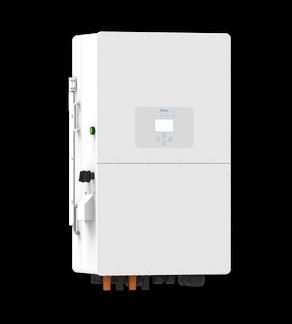
The battery has a capacity range from 20 48kWh to 61 44kWh, composed out of 4-12 battery modules, respectively Both these embedded designed modules and plug and play wire connection methods promise flexible installation and maintenance.
Equipped with UPS Level Grid-to-Off-Grid switching function, the inverter ensures uninterrupted power supply In the event of sudden grid outages, it automatically switches to battery power, providing continuous electricity without disruption, making it an ideal choice for critical applications where downtime is not an option.
AC Coupling for Enhanced Flexibility
TheinverteremploysACcoupling,fosteringgreatersystemflexibility Operatinginparallel,thehybridinvertercanbeACcouplingwithgridtiedinverterandMicroInverterwithouttheneedforextensivesystem redesign or adjustments This feature streamlines system expansion and maintenance offering users greater adaptability to evolving energydemands
Meanwhile, the BOS-G series is stable and safety for its protection functions including over-discharge & charge, over-current and overtemperature protection The system can manage charge and discharge state and balance current and voltage of each cell automatically
Deye leads the industry by being the first to develop industrial and commercial energy storage products with 50kW of power Deye SUN29 9-50K-SG01HP3 inverter series was honored as the Best Inverter of 2023 by PV Magazine, a leading global solar and storage media platform with regional insights.
“Operating at a high voltage minimizes losses and these types of batteries perform better in terms of capacity and density, For C&l applications, you want to look out for this feature ” said Samuel
LeFloch, a senior jury of PVmagazine

March 2024: Juniper Green Energy takes a leap in clean energy generation with the commissioning of the Jalkot Solar Project in Maharashtra The project, boasting an impressive 105 MW of solar energy, adds a significant feather in the cap of India's renewable energy capabilities
This ambitious endeavour is a long-term PPA of 25 years with MSEDCL. With an agreed tariff of ₹2 90, the Jalkot Solar Project stands as a model of economic and environmental sustainability
The annual generation expected from the plant is slated to be around 200 MUs, driving a considerable impact on the state's carbon footprint by offsetting around 1,78,569 tCO2 annually. This project will also contribute to the electrification of around 38,085 households, marking a milestone in Maharashtra's journey towards a greener tomorrow
Naresh Mansukhani, CEO of Juniper Green Energy, expressed his views on the commissioning: "The Jalkot Solar Plant's activation goes beyond adding megawatts to the grid; it represents a brighter future for Maharashtra's households and communities This 105 MW project is a testament to our pledge towards India's renewable aspirations, marking a stride in nurturing a more sustainable tomorrow Our dedication is unwavering not only to enhancing India's energy profile but also in sparking economic vitality through the touchstone of solar power."
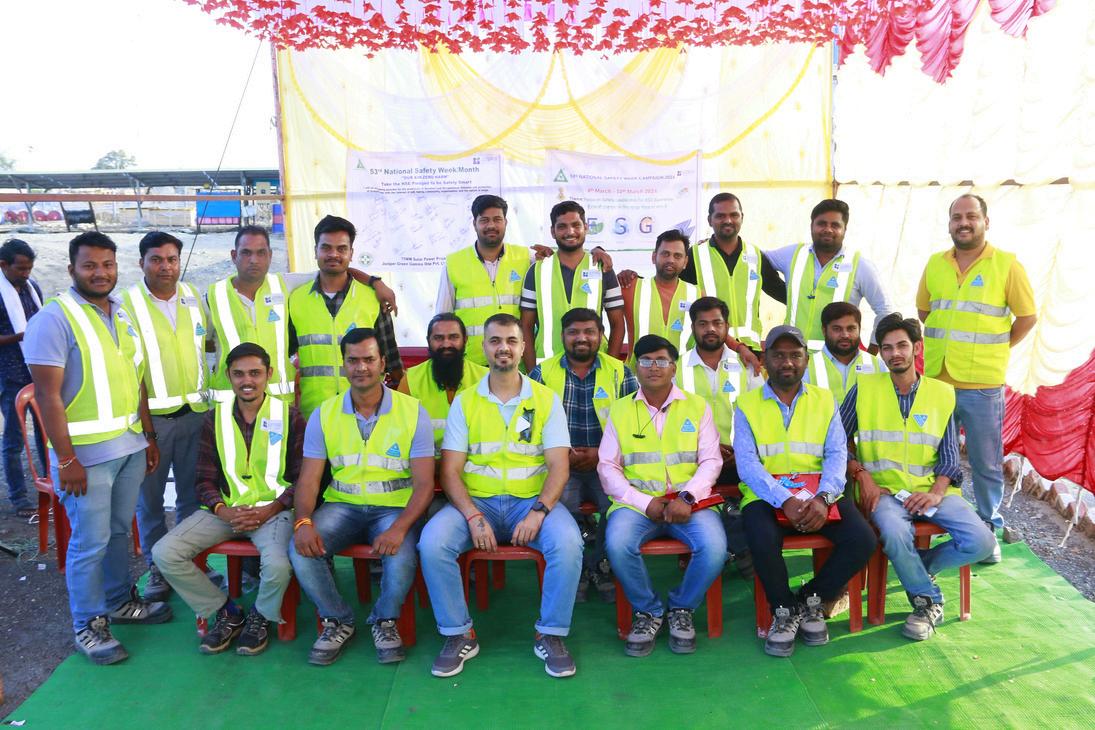
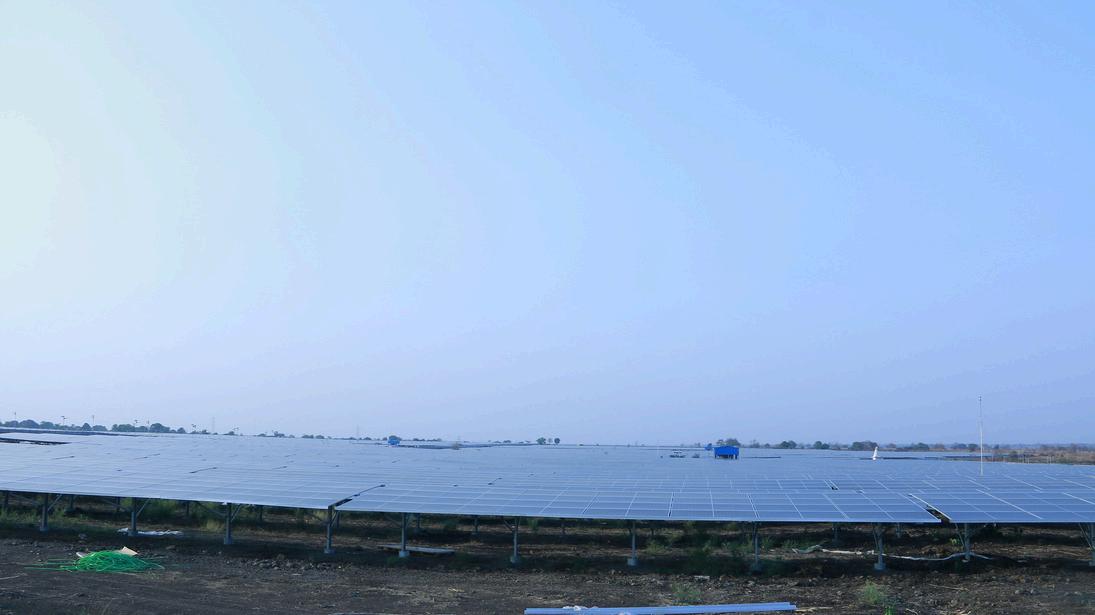
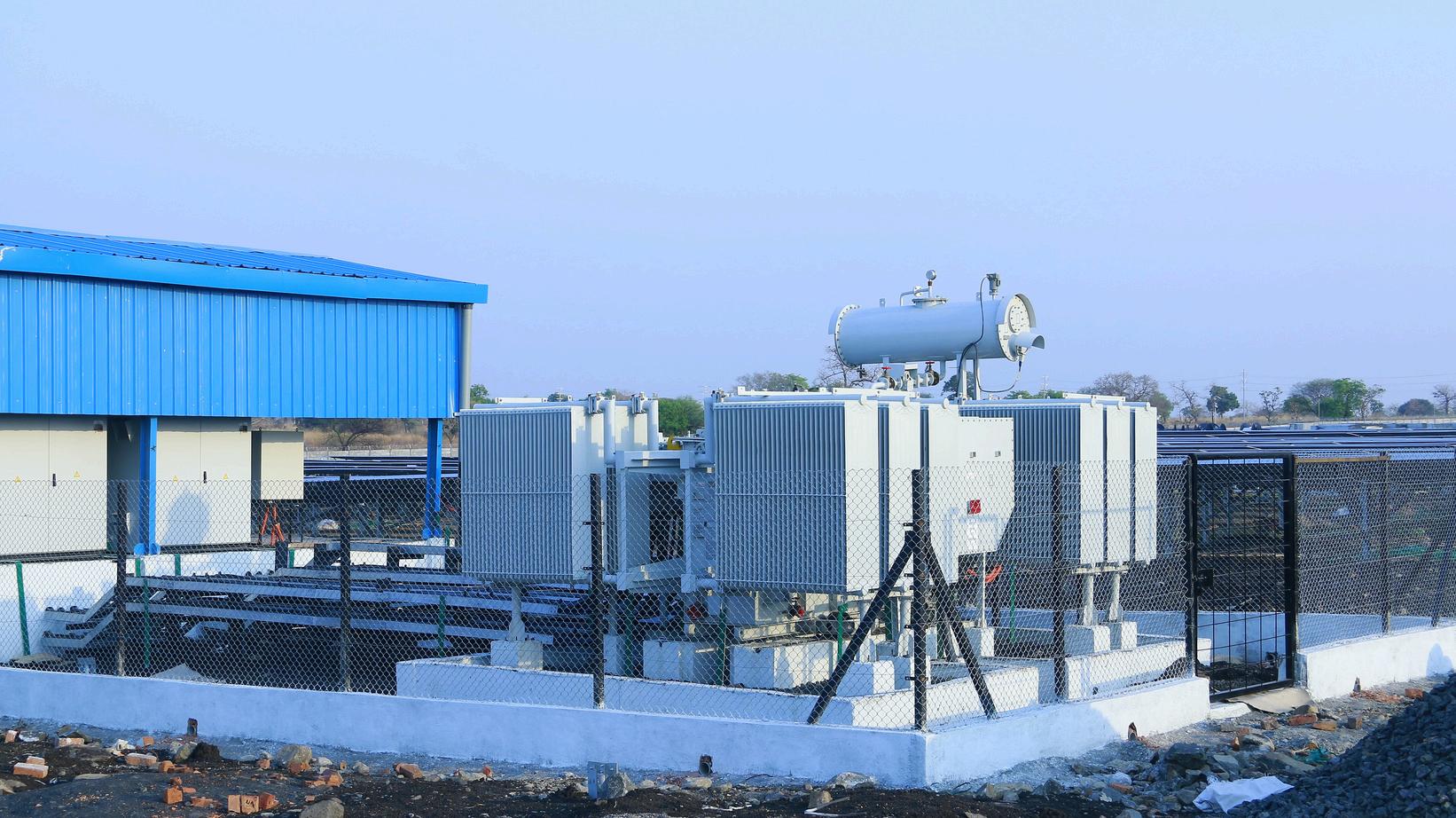
Naresh Mansukhani's vision encapsulates the TRANSFORMATIVE power of renewable energy, where the Jalkot Solar Project not only adds MEGAWATTS to the grid but also ILLUMINATES the path towards ECONOMIC prosperity and SOCIAL development in Maharashtra.

Harness the Power of the Sun and Support PM Surya Ghar Yojana with SolaX
SolaX Power, a global leading inverter brand in solar energy solutions, is proud to offer a range of inverters perfectly suited for the Indian government's groundbreaking PM Surya Ghar Yojana program Our X1BOOST G4 and X1-MINI G4 inverters empower you to embrace clean energy, maximize free solar power generation, and contribute to a more sustainable future for India
SolaX X1-BOOST G4 & SolaX X1-MINI G4: Designed for Reliability & Efficiency and PM Surya Ghar Yojana Success
Both X1-BOOST G4 and X1-MINI G4 inverters from range 1 KW to 6 KW in single phase boast impressive features that align perfectly with the PM Surya Ghar Yojana's goals:
Unmatched Efficiency: These inverters achieve superior efficiency in converting sunlight into usable electricity This translates to maximizing free solar power generation, potentially allowing you to reach the program's 300-unit free electricity limit and potentially reducing your overall electricity dependence
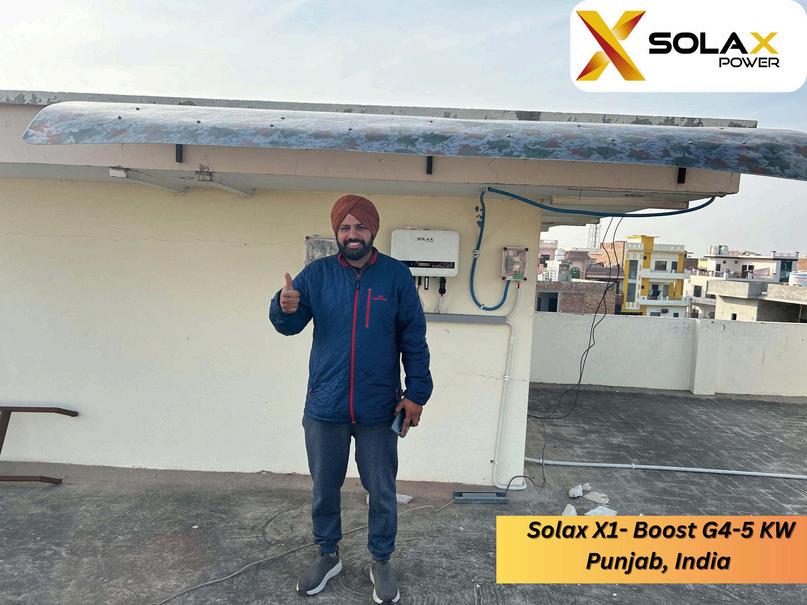
Compact Design, Easy Installation: Their lightweight and userfriendly design makes installation a breeze, saving you time and minimizing disruption to your home
Intelligent Monitoring and Control: SolaX's user-friendly monitoring platform provides real-time data on your solar power generation, allowing you to optimize energy consumption and ensure you stay within the program's free electricity limit.
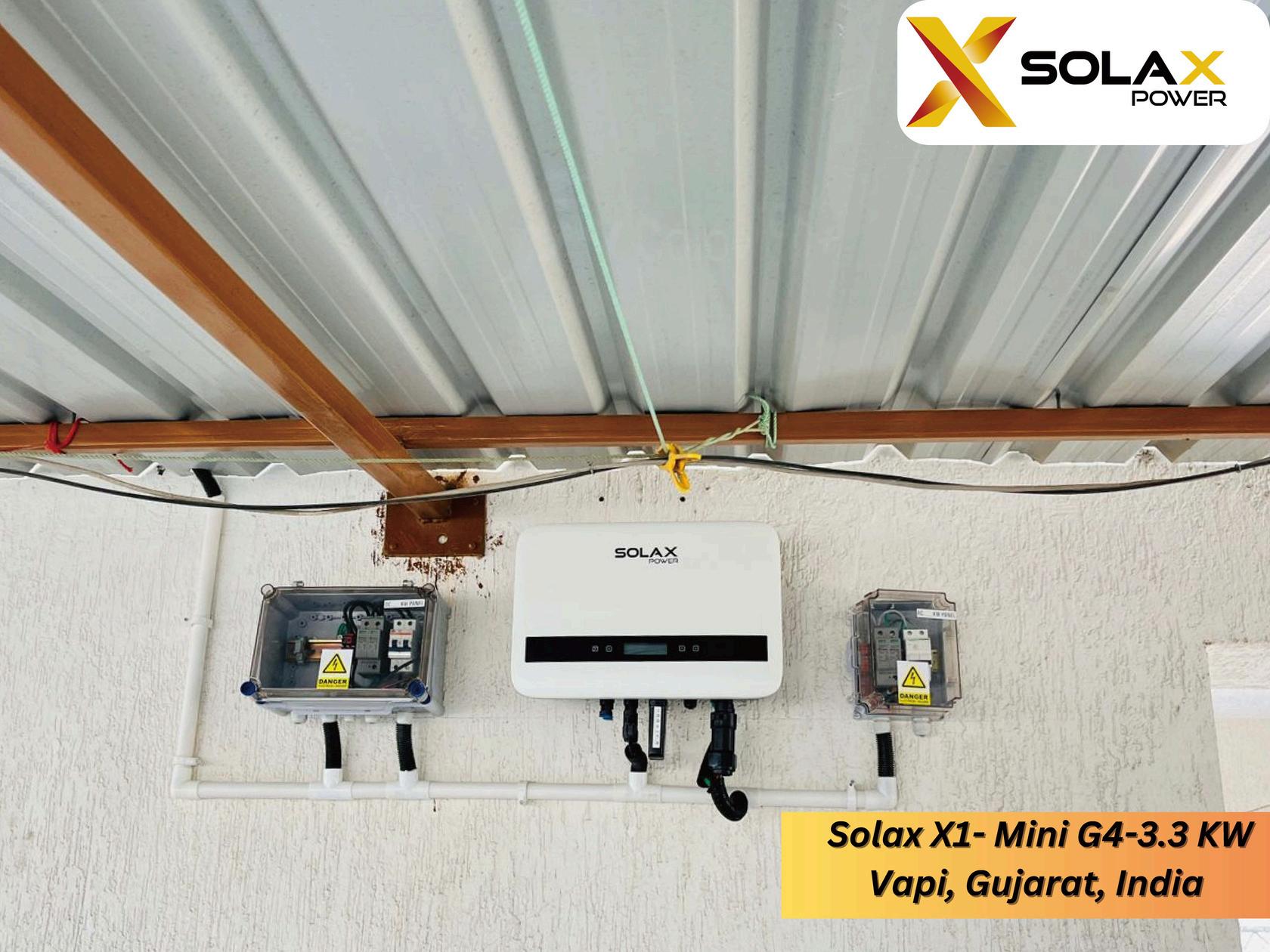
Unmatched Efficiency: The X1-MINI G4's 1 KW to 4 KW - 1MPPT support for 200% oversizing DC input and ultra-low startup voltage ensure compatibility with even the latest high-power solar panels, protecting your investment for years to come
Compact Design, Easy Installation: Both inverters seamlessly integrate with EV chargers, supporting a zero-carbon lifestyle and potentially reducing your reliance on the grid
Intelligent Monitoring and Control: Equipped with advanced surge protection and arc fault detection, Solax inverters prioritize safety for your home and family
By choosing SolaX X1-BOOST G4 or X1-MINI G4 inverters, you're not only supporting the PM Surya Ghar Yojana program, but also taking a significant step towards a more sustainable future for your home and the planet Reach us on Sales.India@solaxpower.com for more details about product
SolaX inverters can empower your sustainable living under the PM Surya Ghar Yojana program.
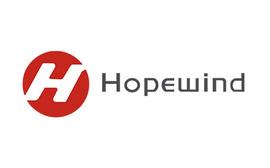
Hopewind's 385kW string inverter has been recognized as the world's most powerful string inverter after thorough market research conducted by Solarbe Global, a well-known PV industry media
The dominance of utility-scale PV in global PV installations is indisputable, as it emerges as a key catalyst in achieving the net-zero target by 2030. Projections by BNEF reveal a remarkable growth trajectory, with utilityscale PV installations poised to soar from 920 GW in 2023 to an astounding 2,707 GW by 2030 Concurrently, a silent revolution is unfolding in the utility-scale solar sector, with string inverters gradually supplanting central inverters. Research Nester's survey predicts that by 2036, string inverters will command a substantial 54% share of the global utility-scale inverter market This shift is attributed to their compact size, reduced weight, on-site spare replacement capability, and minimized production losses in the event of inverter failure
As global PV inverter manufacturers intensify their pursuit of higher power inverters, the competition has grown fierce Standing out from all the players is Hopewind, whose groundbreaking achievement comes in the form of the 385kW string inverter, ranked as the world's most powerful utility-scale string inverter by Solarbe Global This prestigious accolade was awarded following a comprehensive survey that evaluated 13 branded utility-scale string inverters from leading manufacturers Boasting a maximum output power of 385kW, Hopewind's 385kW string inverter is purpose-built for large utility-scale and high-voltage industrial and commercial PV projects It showcases a host of exceptional features that outpace other branded inverters.
Higher power for higher system yields and lower LCOE
Set with the highest output power in the industry, Hopewind's 385kW string inverters have an impressive maximum efficiency rating of 99 01% Characterized by 8*60A multiple MPPTs, they are perfectly compatible with both 182mm and 210mm high-power modules By installing highpower modules and higher power inverters, fewer PV modules and inverters will be needed in a large-scale project, reducing land use and ensuring lower LCOE and higher yields for end-users Furthermore, the inverters can retain full load output at up to 40 degrees without derating and achieve 320kW output power at a temperature of 50 degrees, ensuring higher yields for plants located in high ambient temperatures, which are more commonly seen in utility-scale solar power plants.
Finding faulty PV modules in a large ground-mounted solar plant can be very time-consuming and difficult without efficient tools To address this issue, these inverters offer an optional I-V curve diagnosis feature, which carries out online I-V curve analysis on entire strings with an advanced diagnosis algorithm The scanning helps find and identify the strings with low performance or faults, enabling proactive maintenance, higher O&M efficiency, and lower operation costs
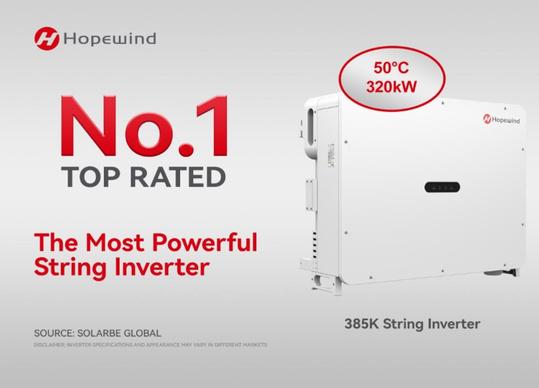
Adapting to an unstable power grid and harsh environments
Customers often express concerns about projects located in mountainous or remote areas with poor-quality power grids, where the power supply might be unstable and prone to fluctuations Additionally, projects situated in harsh environments, such as hot, rainy, dusty, highly corrosive, and humid areas, present challenges to inverter durability Addressing these concerns, Hopewind inverters outperform other brands with an impressive SCR value of 1.03, ensuring better adaptability to changes and instabilities in the power grid, even in mountainous and remote areas Additionally, they can also be built with the optional C5 anti-corrosion degree, making them highly secure for corrosive environments like seaside areas, islands, or locations near oil fields and chemical plants
Hopewind was established in 2007 and listed on the Shanghai Stock Exchange in 2017 The company specializes in designing and producing renewable and electrical solutions, including wind power converters, PV inverters, BESS, SVG, and industry drives.
As a leading brand of comprehensive renewable energy solutions, Hopewind participated in the scientific research project Wingrid supported by the EU Horizon 2020 through the DNV Netherlands Laboratory In 2023, Hopewind’s wind power converter received the world's first grid-forming type certificate issued by DNV.
Hopewind is also highly regarded as a Tier One Manufacturer of Inverter Shipments for Utility in China, and since February of 2024, the company’s 385kW string inverter has been recognized as the world’s No 1 powerful string inverter With a remarkable track record, the company has shipped over 150GW of renewable energy products worldwide by the end of 2023.
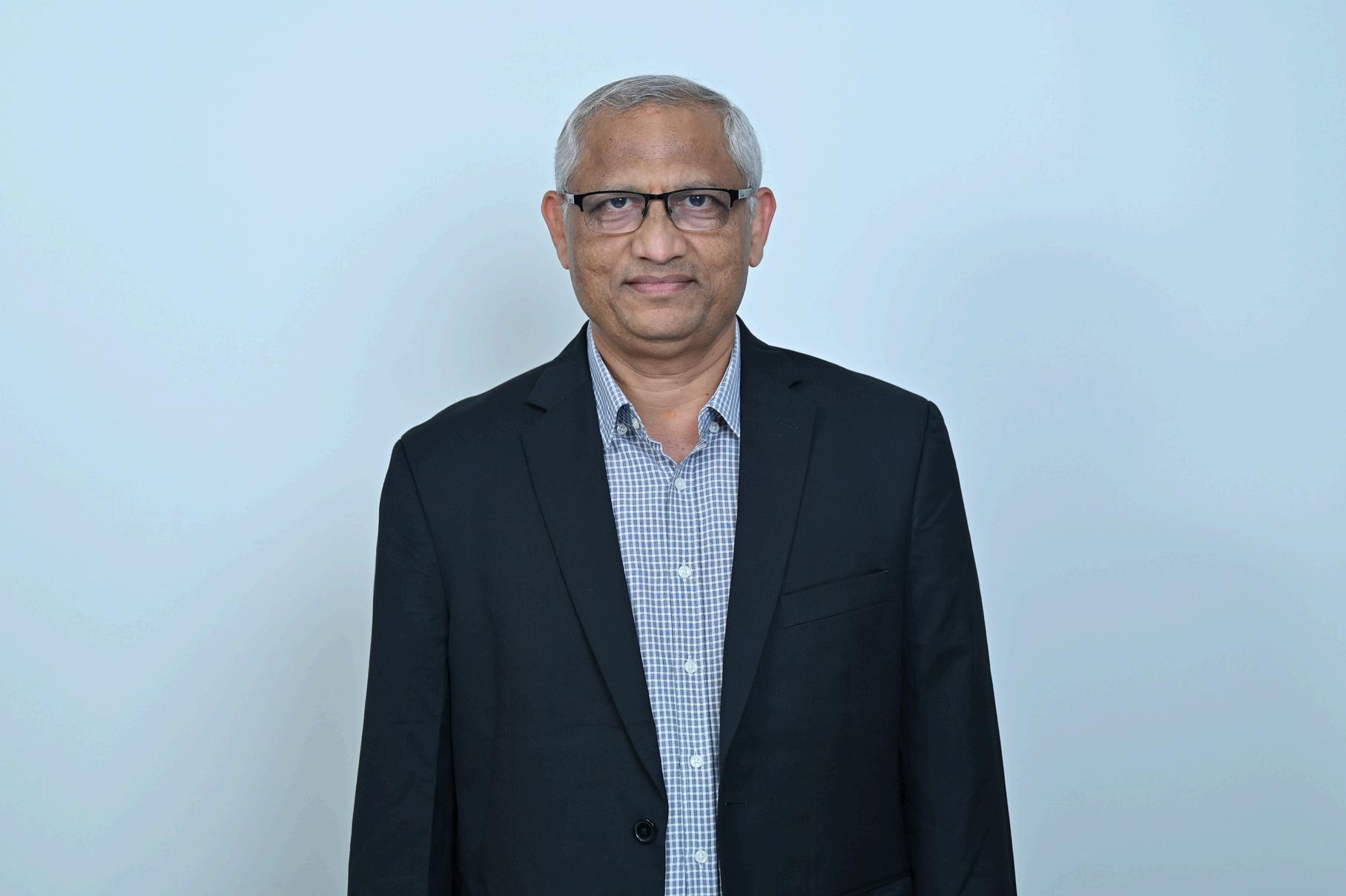
Can you explain the specific health and safety measures implemented at solar project sites to mitigate risks associated with construction and operation?
Safety is paramount in every aspect of ENGIE's solar project operations We prioritize safety by ensuring the following factors are addressed:
Cost Allocation:
We allocate resources for Health, Safety, and Environment (HSE) management from the start, ensuring stringent safety standards
Integrated Safety:
Safety is integrated into the engineering phase, prioritizing equipment safety and plant layout designs.
Contractor Standards:
We select contractors with exemplary safety records and adherence to protocols
OnsiteMeasures:
Infrastructure Readiness- We ensure site infrastructure supports safe operations before work begins.
Risk Assessment- Detailed assessments and robust mitigation measures address site-specific risks
Comprehensive Training- Thorough safety induction/training is provided to all personnel before site access.
Protocol Adherence- Strict safety protocols are enforced before work commencement.
Safety Officers- Trained officers monitor activities to ensure compliance with safety standards
ENGIE prioritizes safety through cost allocation, integrated safety in engineering, and stringent contractor selection, ensuring robust health and safety standards
Onsite, measures include comprehensive risk assessment, infrastructure readiness, and proactive safety initiatives fostering a culture of safety awareness
Training and education encompass thorough inductions, technical training, and regular drills, promoting a safe working environment for all stakeholders.
PPE-Necessary personal protective equipment is provided to all personnel
Driving Safety- Standards are implemented to safeguard against transportation risks
Audits and Walks- Regular checks identify and address safety gaps promptly
Proactive Initiatives- We foster a proactive safety culture through training, drills, and recognition of safety practices
ESG Compliance- Environmental, Social, and Governance aspects are implemented in line with recognized guidelines
Emergency Preparedness- Robust plans and drills ensure swift responses to unforeseen circumstances
Community Engagement- We engage with local communities, providing employment and transparent communication
How do you ensure compliance with national and international health and safety standards throughout the lifecycle of a solar project?
At our organization, adherence to national and international health and safety standards is paramount across the entire lifecycle of solar projects We proactively identify all relevant standards from the outset, rigorously implement them on-site, and consistently monitor and review its compliance Our dedication to strict adherence encompasses the enforcement of safety protocols, regular audits, and the provision of extensive training to our
workforce Through these efforts, we guarantee that the projects not only meet but surpass regulatory expectations, creating a secure working environment for all stakeholders involved
What strategies do you employ to integrate energy storage solutions into solar projects, considering the increasing demand for reliable, gridindependent energy systems?
To mitigate such risks, we make sure that ENGIE implements the following measures:
Standard Operating Procedures (SOPs):
Dedicated SOPs are established to outline safe practices and procedures for all tasks related to installation and maintenance
Risk Assessment:
Comprehensive risk assessments are conducted and documented at the outset to identify potential hazards and implement appropriate controls.
Work Permit System and Lock-Out TagOut (LOTO):
Strict work permit systems and LOTO procedures are defined and adhered to, ensuring that energy sources are isolated and rendered safe before work begins
Pre-Job Briefing and Equipment Checks:
Before commencing any task, formal prejob briefings are conducted, including checks of tools, personal protective equipment (PPE), and Last Minute Risk Assessments (LMRA), to ensure readiness and awareness of potential risks
Energy Isolation:
It is ensured that no energy is present in any form at the equipment or location where work is being performed, minimizing the risk of electrical shocks.
Formal Approval Process:
Every work activity undergoes formal review and approval processes, with proper documentation and adherence to safety protocols, including tool and PPE checks, to mitigate risks effectively
Can you explain the specific health and safety measures implemented at solar project sites to mitigate risks associated with construction and operation?
At ENGIE, a comprehensive approach is taken to train and educate both, employees and contractors regarding health and safety procedures, emergency response protocols, and the proper usage of personal protective equipment (PPE). From the outset of each project, a detailed Health, Safety, and Environment (HSE) plan is collaboratively developed with contractors, laying out specific safety measures and procedures
Every individual entering the site undergoes mandatory site entry HSE induction, which includes thorough training on site-specific hazards, emergency procedures, and the significance of PPE usage. Additionally, detailed work-specific inductions are provided, ensuring that personnel are equipped with the knowledge and skills necessary to safely carry out their tasks
Prior to commencing any task, mandatory prejob briefings cover HSE aspects and
technical training to ensure readiness and awareness of potential hazards
Furthermore, various HSE-related trainings and emergency drills are conducted to enhance preparedness and response capabilities in case of emergencies, with a specific calendar in place to ensure comprehensive coverage of all relevant topics
Through these efforts, ENGIE ensures that all personnel are adequately trained, equipped, and prepared to uphold the highest standards of health and safety, fostering a safe working environment for everyone involved in the project.
Can you describe the process for identifying and assessing potential health and safety risks unique to solar projects, particularly in the Indian context?
In the domain of solar projects in India, ENGIE adopts a meticulous approach to identify and assess health and safety risks We begin by crafting a site-specific Health, Safety, and Environment (HSE) plan in collaboration with stakeholders, tailored to the Indian solar project landscape. Early in the project lifecycle, we conduct HAZID and HAZOP studies to pinpoint potential risks, enabling proactive risk mitigation strategies
Once risks are identified, a thorough risk assessment involving all stakeholders is undertaken, with documented sign-off for accountability Based on risk levels, we devise action plans to effectively mitigate
and control these risks, which may include implementing work permit systems, LOTO procedures, and other safety protocols
Before any work activity begins, formal reviews and approvals ensure thorough preparation, including pre-job briefings, tool and PPE checks, LMRA, and other safety measures. Through this rigorous process, ENGIE proactively addresses and mitigates potential health and safety risks unique to solar projects in India, fostering a safe working environment for all involved
How does your organization cultivate safety awareness and engage employees in identifying and addressing health concerns at solar project sites?
At our organization, safety awareness and employee engagement in health concerns at solar project sites are top priorities. We achieve this by setting Key Performance Indicators (KPIs) to measure safety performance, promoting accountability, and fostering continuous improvement Proactive measures include regular trainings, drills, safety walkdowns, and audits to prevent incidents We also host quarterly rewards events to celebrate safety achievements and hold individuals accountable for HSE protocol adherence Management actively participates in HSE reviews, emphasizing safety in all activities Through transparent reporting and thorough incident investigations, we promote a culture of safety awareness and continuous learning, ensuring the well-being of our workforce and project success
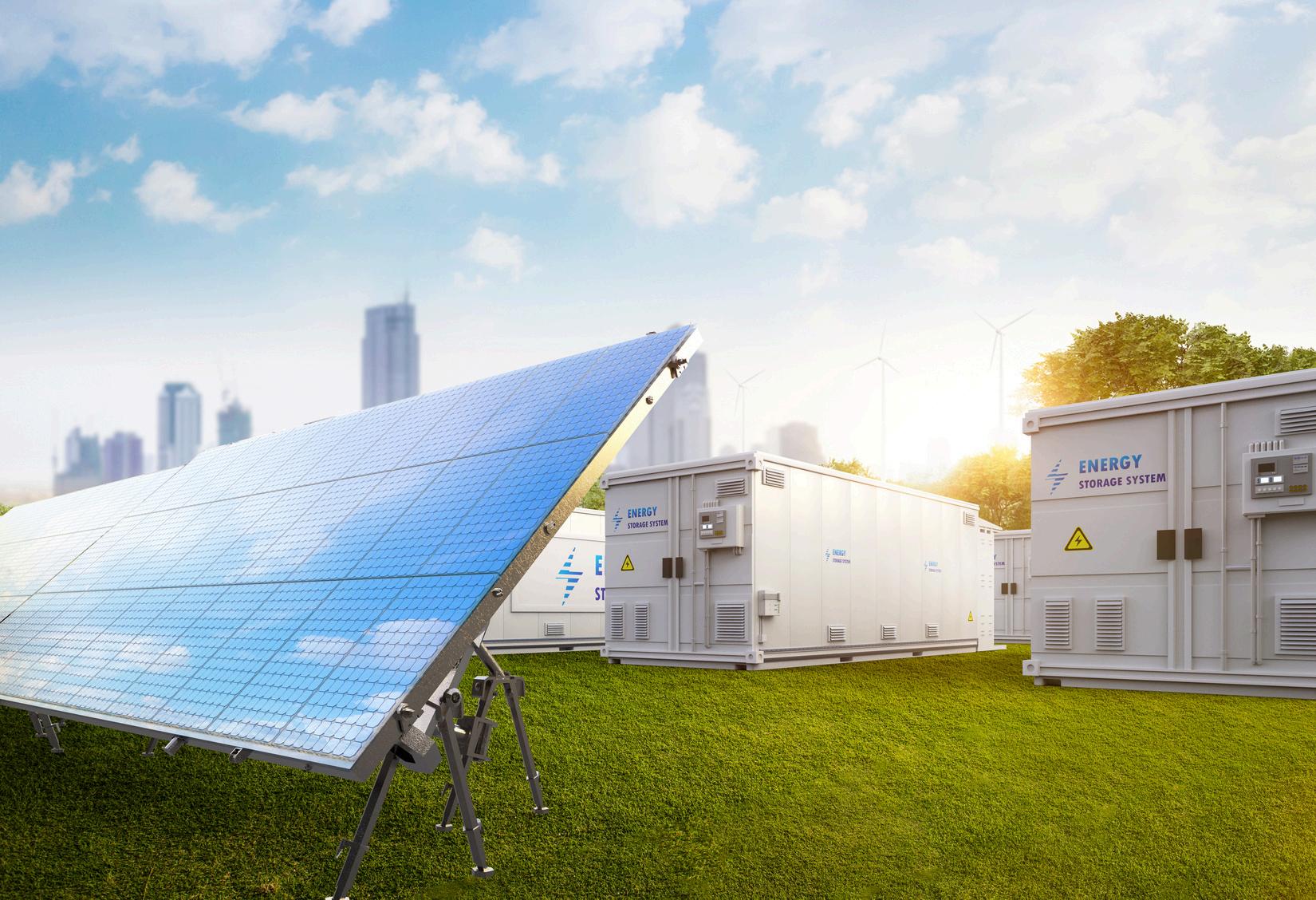

In the landscape of India's energy transition, a revolution is quietly underway, one that promises to reshape the country's power sector and redefine its energy future At the heart of this transformation lies the convergence of solar energy and advanced storage technologies, heralding the dawn of India's Solar+Storage Revolution
Recent years have witnessed remarkable strides in India's solar energy sector, propelled by ambitious renewable energy targets, favorable policy frameworks, and declining solar technology costs The country's vast solar potential, abundant sunlight, and growing demand for electricity have positioned solar power as a linchpin of its sustainable energy transition. However, the intermittent nature of solar energy, coupled with the challenge of grid integration and variability in demand, has underscored the need for effective energy storage solutions
Enter energy storage - the missing piece of the puzzle in India's renewable energy ecosystem Advancements in battery technologies, coupled with declining costs and growing market maturity, have unlocked new opportunities for solar energy deployment and grid stabilization From lithium-ion batteries to flow batteries and beyond, a plethora of storage technologies are vying for prominence in India's evolving energy landscape
Recent developments in the solar+storage domain have been marked by a surge in deployment across diverse applications, from utility-scale solar parks to distributed energy systems and off-grid electrification initiatives In urban centers, grid-scale battery storage projects are emerging as crucial enablers of renewable energy integration, providing grid stability, peak shaving, and ancillary services Meanwhile, behind-the-meter storage solutions are empowering residential and commercial consumers to optimize self-consumption, reduce peak demand, and enhance energy resilience
Moreover, the rise of solar+storage initiatives is not confined to urban areas alone; it is extending its reach to rural and remote communities, unlocking new pathways for energy access and socio-economic development Offgrid and mini-grid projects, powered by solar energy and battery storage,
are bridging the electricity divide in underserved regions, lighting up homes, schools, and healthcare centers These decentralized energy systems are fostering local entrepreneurship, enhancing agricultural productivity, and improving quality of life in off-grid communities

Looking ahead, the future of India's solar+storage revolution holds immense promise, driven by a confluence of technological innovation, policy support, and market dynamics In the realm of technology, ongoing research and development efforts are focused on improving battery performance, durability, and cost-effectiveness, paving the way for nextgeneration storage solutions. Advanced concepts such as vehicle-to-grid (V2G) integration, hybrid energy systems, and blockchain-enabled peer-topeer trading are poised to reshape the energy landscape, fostering a more decentralized, resilient, and consumer-centric energy ecosystem
Furthermore, policy initiatives and regulatory frameworks are evolving to incentivize investment in solar+storage projects, streamline approval processes, and facilitate market participation From net metering and feedin tariffs to renewable energy certificates and energy storage mandates, policymakers are exploring diverse mechanisms to spur growth and innovation in the solar+storage sector
In the realm of market dynamics, falling battery prices, coupled with increasing economies of scale and growing investor interest, are driving down the overall cost of solar+storage solutions, making them increasingly competitive with conventional fossil fuel-based alternatives As a result, solar+storage projects are gaining traction across diverse market segments, from residential rooftops and commercial complexes to industrial facilities and utility-scale installations
As India charts its course towards a cleaner, more sustainable energy future, the solar+storage revolution is poised to play a pivotal role in shaping its energy landscape With continued innovation, strategic investments, and collaborative partnerships, India has the opportunity to harness the full potential of solar energy and storage technologies, ushering in a new era of energy abundance, resilience, and prosperity for all.
Given the limited domestic availability of oil & gas, the government of India has rightly opted for renewable energy as a strategy of choice for just energy transition and energy security With right policy support like viability gap funding in the initial years, must run status, presence of central counterparties viz SECI, NTPC etc coupled with ample availability of resources has ensured robust development of renewable capacity in the country. In recent years, there has been a significant shift towards embracing renewable energy sources, particularly distributed solar power This transition is reshaping the environmental landscape across the nation, from urban rooftops to remote rural areas In this article, we explore the transformative impact of distributed solar on India's environment.
Reducing Carbon Footprint:
Distributed solar power plays a pivotal role in mitigating India's carbon footprint Traditional energy sources, such as coal and fossil fuels, contribute substantially to greenhouse gas emissions By harnessing solar energy at the local level, carbon emissions are significantly reduced, helping combat climate change. Rooftop solar installations on homes, businesses, and institutions contribute to a decentralized energy network, minimizing transmission losses and environmental degradation associated with centralized power generation
Empowering Urban Sustainability:
In India's bustling urban centers, the adoption of rooftop solar is a key driver of environmental sustainability With growing awareness about the ecological impact of conventional energy sources, many households and businesses are opting for solar panels on their rooftops This not only reduces dependence on grid power but also allows for the generation of clean energy within the city limits, thereby lowering transmission losses and enhancing the overall efficiency of the energy system
Enhancing Energy Access in Rural Areas:
Distributed solar is not confined to urban landscapes; it is making a significant impact in rural areas where reliable access to electricity has been a longstanding challenge In remote villages, solar microgrids are providing a lifeline by electrifying homes, schools, and healthcare facilities This not only improves the quality of life for rural communities but also opens up new avenues for education, healthcare, and economic development Furthermore, the decentralized nature of these solar installations ensures resilience in the face of natural disasters or grid failures.
Agricultural Revolution through Solar Pumping:
India's agrarian economy stands to benefit immensely from the integration of solar technology Solar powered irrigation pumps are revolutionizing farming practices by providing a reliable and sustainable source of energy for water pumping This reduces the dependence on fossil fuel-driven pumps and diesel generators, leading to lower operational costs for farmers. Additionally, solar pumps contribute to water conservation and energy efficiency in agriculture, crucial elements in a country grappling with water scarcity and climate change
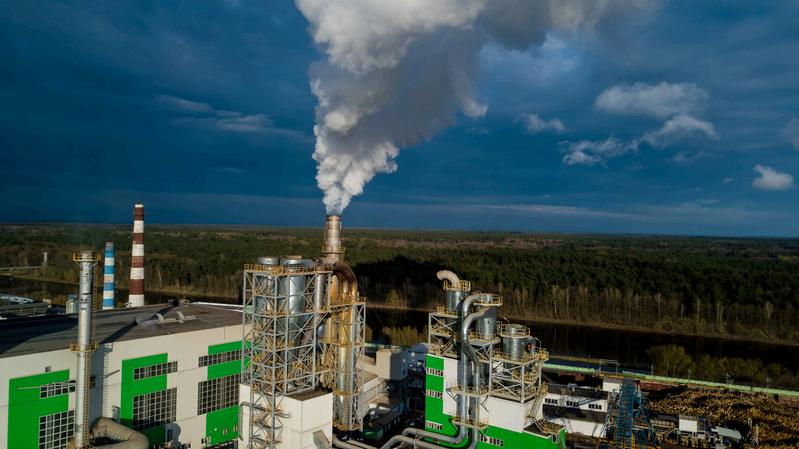
The rapid growth of the solar industry in India has not only ushered in environmental benefits but has also become a significant driver of economic growth The deployment of solar projects, from manufacturing to installation and maintenance, has created a substantial number of jobs This not only boosts the economy but also contributes to the development of a skilled workforce in the renewable energy sector. The emphasis on green jobs aligns with India's commitment to a sustainable and inclusive growth model
The Indian government has played a crucial role in fostering the growth of distributed solar by implementing supportive policies and incentives Initiatives such as the Pradhan Mantri Kisan Urja Suraksha evam Utthaan Mahabhiyan (PM-KUSUM) scheme, which promotes the use of solar pumps in agriculture, exemplify the commitment to sustainable development Additionally, policies encouraging net metering, tax benefits, and subsidies for solar installations have incentivized businesses and individuals to adopt solar energy solutions.
Conclusion: Distributed solar power is fundamentally reshaping India's environmental landscape, from urban centers to the remotest rural areas. By reducing carbon emissions, empowering communities, revolutionizing agriculture, creating green jobs, and receiving strong policy support, solar energy is emerging as a beacon of hope for a sustainable and resilient future As India continues its journey towards becoming a global renewable energy leader, the positive environmental impact of distributed solar remains a testament to the nation's commitment to a greener and cleaner tomorrow



In the vast expanse of India's energy sector, a quiet revolution is taking place, driven by the convergence of solar power and energy storage This revolution isn't just about generating electricity; it's about redefining the way we think about energy consumption, distribution, and sustainability At the heart of this transformation lie innovative business models that are unlocking new opportunities and driving the adoption of solar+storage solutions across the country
One of the most compelling business models driving the uptake of solar+storage in India is the "energy-as-a-service" (EaaS) model Under this model, solar developers or energy service companies (ESCOs) install and maintain solar photovoltaic (PV) systems equipped with battery storage at customer premises, such as residential complexes, commercial buildings, or industrial facilities Customers pay a monthly fee or tariff based on their energy consumption, allowing them to access clean, reliable power without the upfront capital investment typically associated with solar installations This model not only lowers the barriers to entry for consumers but also provides a steady revenue stream for developers, creating a winwin scenario for all stakeholders involved
Another innovative business model gaining traction in India is the "virtual power plant" (VPP) model In a VPP arrangement, multiple distributed solar+storage systems are aggregated into a virtual network, allowing them to function as a single, coordinated power resource This aggregated capacity can then be used to provide grid services, such as peak shaving, load shifting, or frequency regulation, to utilities or grid operators. By harnessing the flexibility and resilience of distributed energy resources, VPPs can help optimize grid operations, enhance system reliability, and maximize the value of solar+storage assets for both owners and operators
In addition to these emerging business models, traditional players in the energy sector, such as utilities and independent power producers (IPPs), are also exploring new opportunities in the solar+storage space Utilities,
for example, are leveraging their existing infrastructure and customer relationships to deploy solar+storage systems at scale, integrating them into their broader energy portfolios to enhance grid resilience and meet renewable energy targets Similarly, IPPs are investing in utility-scale solar+storage projects, capitalizing on economies of scale and favorable regulatory policies to deliver low-cost, dispatchable power to the grid
However, while the business case for solar+storage is compelling, several challenges remain that must be addressed to unlock its full potential Financing, for instance, remains a key barrier, particularly for smaller-scale projects or off-grid applications Access to affordable capital, innovative financing mechanisms, and supportive government policies will be critical in overcoming this challenge and accelerating the deployment of solar+storage solutions across diverse market segments
Moreover, as the solar+storage market matures, competition is intensifying, driving innovation and differentiation among market players Companies that can offer integrated solutions, leveraging advanced technologies such as artificial intelligence (AI), Internet of Things (IoT), and blockchain, will gain a competitive edge in the marketplace Likewise, those who prioritize customer engagement, service excellence, and sustainability will be better positioned to capture market share and drive long-term growth
In conclusion, the business models driving solar+storage adoption in India are as diverse and dynamic as the country itself. From EaaS and VPPs to utility-scale projects and IPP investments, there is no shortage of opportunities for entrepreneurs, investors, and industry stakeholders to capitalize on the immense potential of solar+storage technology By embracing innovation, collaboration, and sustainability, India's energy sector can unlock a brighter, cleaner future for generations to come


As India fully embraces the renewable energy (RE) transition and works to achieve its energy targets, harnessing the potential of artificial intelligence (AI) can cause a transformative shift in the energy sector and pave the way for a smart energy future
Solar energy generation in India encounters unique challenges owing to the diverse climate and geographical conditions across different regions, with some states receiving high solar irradiance and others facing harsh weather conditions. AI algorithms can help analyse local weather patterns and forecasts and provide solar irradiance data to optimise the design and operation of solar plants Implementing AI-enhanced solar tracking systems can help maximise energy yields as well as operational efficiency and reliability, minimise downtimes, and provide better adaptability to geographic variations. This would be particularly useful for regions such as the Northeast having low solar irradiance and difficult climatic conditions
Rooftop solar (RTS) is an integral component in realising India’s ambitious RE targets. However, with India’s current installed RTS capacity at only 12 GW, the RTS sector faces major challenges including low consumer awareness of RTS-related techno-economics and the absence of large-scale identification of suitable rooftops across India. AI solutions can help streamline the RTS adoption process by analysing satellite imagery, building patterns and height, building density, shadowfree areas, and energy consumption trends Through such detailed analyses, AI solutions can provide accurate feasibility assessments and optimal RTS system designs. This can help consumers fully understand
their RTS potential and assist governments in identifying suitable rooftops for targeted awareness campaigns and demand aggregation In view of the recent announcement of the Pradhan Mantri Suryodaya Yojana to solarise 1 crore households, AI solutions can be a powerful tool to empower households, businesses, and the government to accelerate the deployment of RTS installations throughout India

Access to continuous and reliable power is often perceived as a barrier to socio-economic development in rural areas Smart solar microgrids equipped with solar panels and energy storage can employ AI algorithms to manage energy flows, balance supply and demand, and prioritise critical loads This can ensure uninterrupted and affordable electricity access for rural communities and remote villages while fostering economic growth
AI-based energy storage systems can stabilise the power grid by managing and forecasting intermittent RE sources such as solar energy, ensuring reliability and seamless grid integration AI-driven energy management systems can enable consumers to optimise energy usage, fostering energy efficiency, affordability, and sustainability Further, AIdriven solar irrigation systems can optimise water and energy use for agriculture, enhancing productivity, conserving resources, and reducing emissions. Moreover, by providing valuable insights into energy consumption patterns, infrastructure requirements, and policy effectiveness, AI solutions can aid data-driven decision-making by policymakers
Leveraging the power of AI-based systems can help optimise solar energy production, empower rural communities, enhance grid stability, promote energy access, boost RTS adoption, and facilitate evidencebased policy formulation As India continues to lead the global RE revolution, the use of AI in conjunction with solar energy can emerge as a catalyst for promoting innovation, efficiency, and inclusivity With the right amalgamation of policies, R&D investments, and collaborations, India can utilise the power of AI to build a sustainable future for generations to come

Head – Strategic Investments
AmpIn Energy Transition

Manufacturing in general, especially tech. manufacturing, has been a missing element from India’s basket of economic activities Economic theories suggest that out of all the economic activities’ categories, manufacturing carries the maximum beneficial spillovers on an economy The GOI has targeted increasing the share of manufacturing in the national GDP pie to 25% by 2025 from 17% of the share currently. Solar module manufacturing, along with its upstream products, has been part of a technologically and operationally challenging arena It is very close to semiconductor manufacturing, which is technologically intensive For a long time, the western world had monopoly in manufacturing upstream products, viz. polysilicon, wafers etc. before China started manufacturing these products at scale India has been missing from this manufacturing front until now India, in large part of its solar history, majorly imported solar modules for developing its solar projects Indian solar module manufacturing facilities have limited updated manufacturing capacities. Also, Indian solar module manufacturing is not cost competitive if we compare it with that of the Chinese players Further, most of the solar cells (feed to solar modules) are imported from China, for India has limited cell manufacturing capacities as well Manufacturing of further upstream products like wafers, polysilicon etc. is not available in India at commercial scale. PLI
scheme for manufacturing solar products, along with other tariff barriers like 40% BCD (Basic Custom Duty) on import of solar modules and 25% on import of solar cells make solar manufacturing attractive in India
India has targeted the renewable energy capacity of 500 GW by 2030, which is part of India’s larger commitment to its net zero mission by 2070. For the mission to be successful, India ought to develop its value chain in the solar manufacturing so that the mission is not subject to the vagaries of international geo-politics and Chinese module supplies Secondly, though needless to mention, it would help save a huge chunk of foreign capital movement out of India, in turn limiting the CAD (Current Account Deficit) of India. Thirdly, the scale of module production would help to develop the ancillary and technologically advanced raw material industries, like silver paste, diamond wire etc which require offtake at scale to be viable in terms of quality and cost The raw material industry, like Aluminium frame, Glass etc finds its usage in other industries as well. Fourthly, once we manufactured solar products, we would manufacture the equipment and robotics necessary to manufacture the products, for then we have enough scale in solar to motivate entrepreneurs to develop the industrial equipment facilities Once the equipment manufacturing capability is developed, it would help with the applications in other industries also.
If we see the medium to long term effects, we expect to observe the manufacturing processes and ecosystem cross-pollinate in other industries It would unlock optionality in future to develop related and new industries With this development, India can step up its R&D activities at large, which would build products in all economic streams It would align the political machinery and investors towards manufacturing to complete the full-blown manufacturing ecosystem. This eventually will make India not only less dependent on exports, but also a go-to nation for hi-tech manufacturing

EXCELLENCE IN LEGAL LEADERSHIP
Arshdeep Singh
Head - Legal & Compliance and Vice President, Amplus Management Services Pvt. Ltd.

EXCELLENCE IN DESIGN & ENGINEERING LEADERSHIP
Prabir Mohanty
Sr. Vice President, BVG India Limited

EXCELLENCE IN ELECTRICITY REGULATORY AND GOVERNANCE
Ashu Gupta
Head - Regulatory & Government Relations, CLEANMAX ENVIRO ENERGY SOLUTIONS PVT. LTD.
EXCELLENCE IN BUSINESS MANAGEMENT LEADERSHIP
Mukesh Mishra
Country Head, Znshine Solar

EXCELLENCE IN MARKETING THOUGHT LEADERSHIP
Dr. Ajay Mishra
Vice President - Marketing, Waaree Energies Ltd.

Kartik Teltia
Director, Solarworld Energy Solutions Pvt Ltd
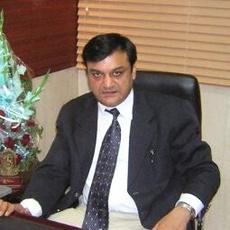
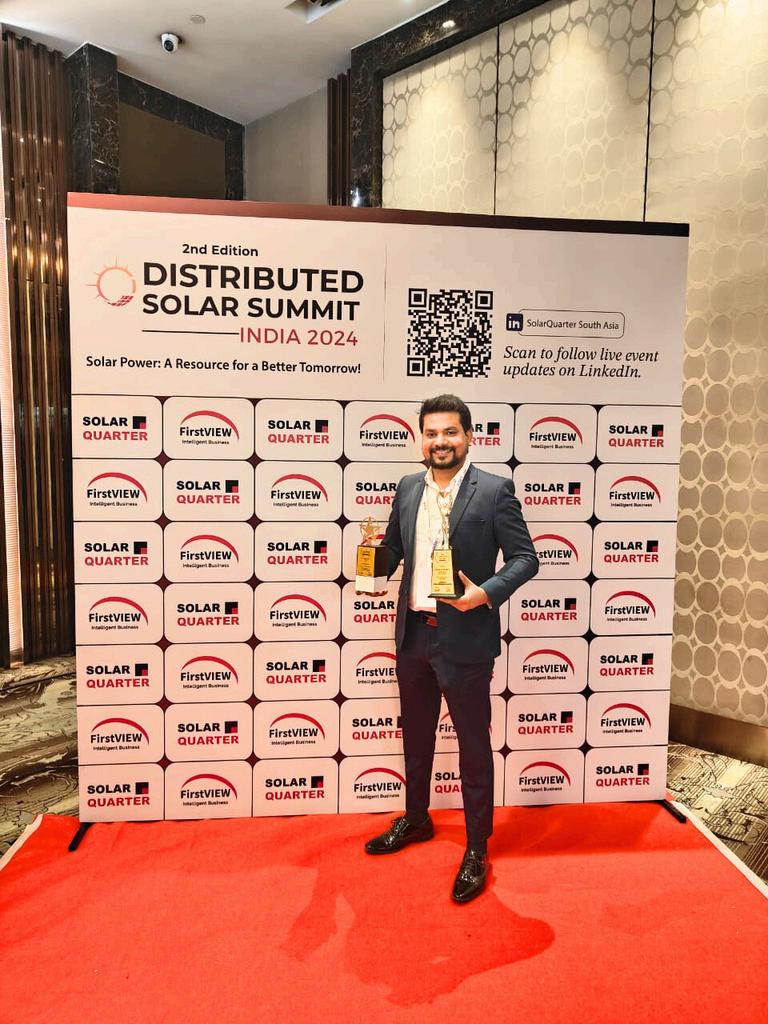

CEO OF THE YEAR
Sharad Pungalia
CEO, Amplus Management Services Pvt Ltd
Nitin Gupta
Director, Solken Powergen Corp

Divyam Shah
Managing Director, Gargee Energies

Mohammed Fayaz Salam
CEO & Director, Moopens Energy Solutions Pvt Ltd
Medhir Jain
Director, HFM Solar Power Pvt Ltd
Raghav Aggarwal Partner, ARM Renewables








In the vast tapestry of India's landscape, where bustling cities and urban centers often take center stage, lies a quieter narrative - that of its rural heartlands Here, amid the tranquil beauty of countryside vistas, lie communities often overlooked by the march of modernization Yet, within these remote corners, a transformative journey is unfolding, powered by a fusion of innovation and sustainability - the dawn of Solar+Storage initiatives
For decades, rural India has grappled with the challenge of unreliable or nonexistent electricity access, hampering livelihoods, education, and healthcare. However, the advent of solar energy coupled with advanced storage solutions is rewriting this narrative, offering a glimmer of hope and empowerment to off-grid communities.
In recent years, concerted efforts by government agencies, non-profit organizations, and private enterprises have fueled the proliferation of solar microgrids across rural India These decentralized energy systems harness the abundant sunlight, converting it into clean, renewable electricity that powers homes, schools, and local businesses What sets these initiatives apart is the integration of storage solutions, such as batteries, enabling round-the-clock access to electricity, even after sunset
One such success story unfolds in the hamlet of Dharnai, Bihar, once shrouded in darkness after dusk. Here, the installation of a solar microgrid, combined with battery storage, has illuminated lives and ignited aspirations. Residents, previously reliant on kerosene lamps or diesel generators, now enjoy reliable electricity, paving the way for economic opportunities and social development Children study late into the evening, entrepreneurs extend their working hours, and healthcare facilities operate without interruption - all powered by the sun's rays stored for nighttime use
Beyond lighting up homes, solar+storage initiatives are catalyzing socioeconomic transformation in rural India The electrification of villages unlocks a myriad of possibilities, from enhancing agricultural productivity to fostering entrepreneurship Farmers leverage solar-powered irrigation pumps to irrigate their fields, reducing dependence on erratic rainfall and
boosting crop yields Women artisans, equipped with solar-powered sewing machines, embark on entrepreneurial ventures, crafting a brighter future for themselves and their families
Moreover, the impact of solar+storage extends beyond mere illumination, reaching the realms of education and healthcare In remote schools, access to electricity facilitates digital learning, bridging the urban-rural divide in educational outcomes Telemedicine centers, powered by solar energy, bring healthcare services closer to communities, addressing longstanding gaps in access to medical facilities As a result, the health and well-being of rural residents improve, laying the foundation for inclusive growth and prosperity.
Crucially, the journey towards empowering rural India through solar+storage initiatives is not without its challenges The upfront costs of infrastructure deployment, coupled with the need for maintenance and skilled manpower, pose hurdles to widespread adoption Furthermore, policy frameworks and regulatory mechanisms must evolve to incentivize investment in clean energy solutions and facilitate their integration into rural electrification programs
Yet, despite these obstacles, the momentum is building, driven by a shared vision of a sustainable and inclusive future Collaborative efforts between governments, development agencies, and private sector entities are unlocking innovative financing models, technology solutions, and community engagement strategies. From microfinance schemes enabling access to solar systems to capacity-building initiatives nurturing local talent, a multifaceted approach is propelling the solar+storage revolution forward
As the rays of the sun reach every corner of rural India, illuminating lives and livelihoods, the transformative power of solar+storage initiatives becomes increasingly evident In these off-grid communities, where hope once flickered dimly, a brighter tomorrow is dawning, fueled by the promise of clean energy and the resilience of rural ingenuity Empowering rural India is not merely about lighting up homes; it is about igniting possibilities, nurturing dreams, and paving the path to a more equitable and sustainable future.


Congratulations to all the BUSINESS EXCELLENCE AWARDS WINNERS






Recognition for Exceptional Contributions
Recognition for Exceptional Contributions
Recognition for Exceptional Contributions to the State Leadership in INDIA to the State Leadership in INDIA to the State Leadership in INDIA

Company of the Year: Inverter (PLATINUM)
SOLIS
Company of the Year: Inverter (DIAMOND)
Havells India Limited
Company of the Year: Inverter (GOLD)
Sineng Electric Co. Ltd.

Company of the Year: Structural Engineering

Purshotam Profiles
Private Limited

Company of the Year: Operations & Maintenance
MN Energy and Infra Pvt. Ltd.

Company of the Year: Module (PLATINUM)
Mundra Solar Energy Limited

Company of the Year: Module (DIAMOND)
Saatvik Green Energy
Private Limited
Company of the Year: Research & Consulting
Total Green Solutions LLP
Project Design & Engineering
Amplus Management Services
Pvt. Ltd.

Asia’s Largest Single Rooftop Solar Project of the Year

Saatvik Green Energy
Private Limited






Best Solar Rooftop Project of the Year
MN Energy and Infra Pvt. Ltd.
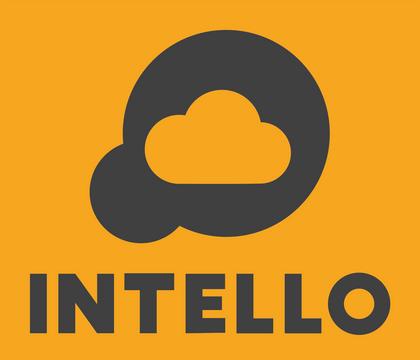
Best Open Access Solar Project
Sembcorp Green Infra Limited


EPC Company of the Year: Industrial
Havells India Limited

EPC Company of the Year: Residential
MN Energy and Infra Pvt. Ltd.

Channel Partner of The Year
Hygrid Solar Private Limited
DISTRIBUTED SOLARSUMMIT INDIA 2024
LEADERSHIPAWARDS

Service Provider of the Year: Asset Management
Intello Tech

Distributor of the Year
POWERnSUN

Project Developer of the Year: Captive
Sembcorp Green Infra Limited


Smart Technology Innovation of the Year - N Type Topcon with Graphene Coating Modules
Znshine Solar

Smart Technology Innovation of the Year - Modules
Solex Energy


Leadership in Sustainable Advisory Services Award
MN Energy and Infra Pvt. Ltd.


TOTAL SOLAR PV INSTALLATIONS AS OF FEBRUARY, 2024 (MW)
SOURCE:MNRE
In the above pie chart, Renewable capacity additions continue to increase at a rapid pace in India, accounting for approximately 31 5% of total India’s power capacity at the end of February 2024 India’s total installed power capacity stood at over 434 195 GW at the end of February 2024 from all the sources, with renewables accounting for 136.57 GW making up 31.5%, compared to cumulative renewable energy installations of 122.11 GW at the end of February 2023, which represented a growth of around 11 84% year-over-year Solar power accounted for approximately 75 575 GW of installations, which represents 17 4% of the total installed power capacity Among the renewable, Wind and Solar constitute around 88.4% of the total renewable, Wind Power installed capacity at the end of February 2024 was around 45 15 GW, which represents 10 4% of the total power capacity installed
India installed around 2 257 GW of Solar PV capacities in the first two months of 2024 such as January & February. The country's total Solar PV installation crossed 75.575 GW by the end of February 2024, while Solar PV rooftops installed around 11,078 MW Rajasthan installed around 19 51 GW, has 25 82% of the total installed Solar PV capacity across the country, and installed around 734 MW in the first two months of calendar year 2024. Among the Top Solar PV States Rajasthan, Gujarat, and Karnataka covers more than 50% of the installed Solar PV Capacities Among the top solar PV states, Maharashtra steps ahead compared to its position in the same period last year Rajasthan, Gujarat, Karnataka, and Tamil Nadu maintained their previous position in the same period. There was a growth of over 17.4% compared to the total Solar PV installations of 64 38 GW by the end of February 2023
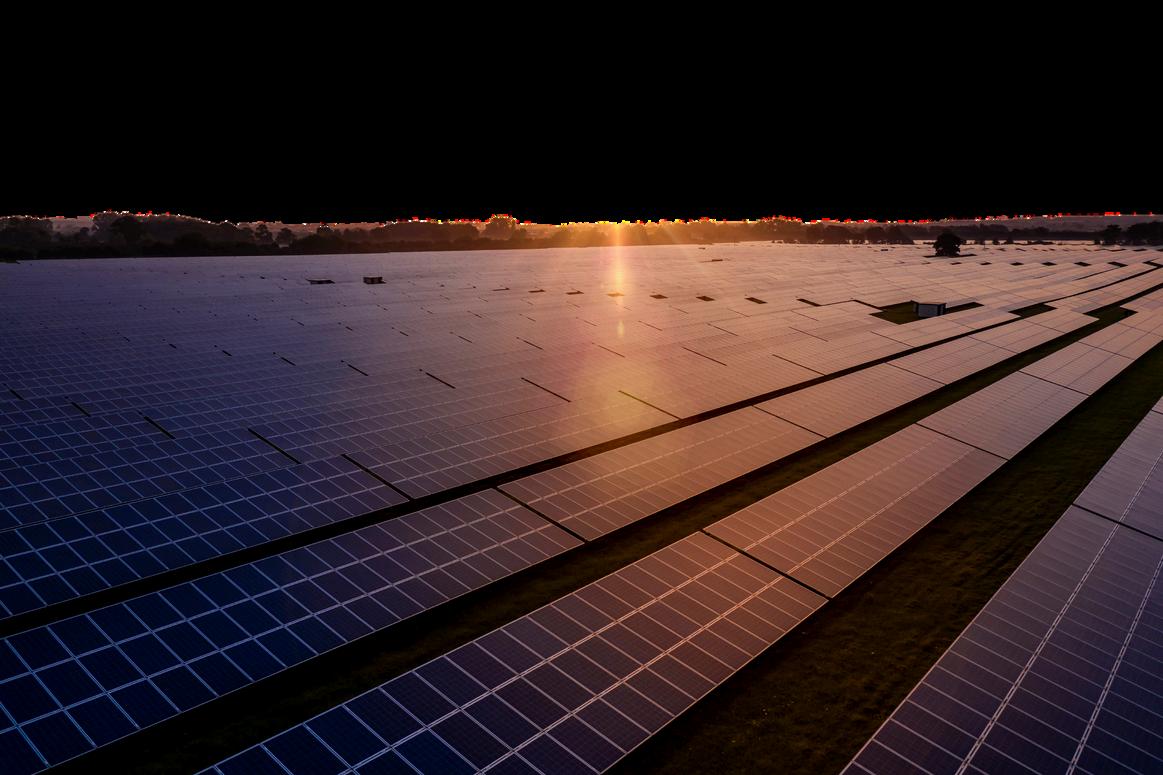
SOURCE:CEA,SOLARQUARTERRESEARCH

Total renewable energy generations in January 2024 reached 16,063.4 million units, there is a decline of RE generations by around 9 4% year-overyear from January 2023, where the RE generations were 17,735 38 million units Solar Power generation has also decline by around 3 03% year-over-year from January 2024 (9,008.47 million units) to January 2023 (9,290.01 million units), Wind Power generation has increased by almost 18 72% in the same period and reached 4,075 12 million units in January 2024
Solar Energy Corporation of India (SECI) paid ₹126 44 billion ( $1.525 billion) to Solar and Wind developers for power purchased in the calendar of 2023 from January to December. The disbursed amount was highest in October in the calendar year 2023. The SECI payment to Solar and Wind had declined after October 2023, till January 2024. There have been many ups and downs in the payment to generators since the start of 2023 as shown in the above chart. In the Calendar year 2023, there is a growth in the monthly payment to wind and solar power generators. While SECI paid ₹68 98 billion for the purchase of Solar and wind in the second half of the calendar year 2023 The payments made to power generators such as wind and solar were quite high in the second half of the calendar year 2023 compared to the first half

IEX ELELCTRICITY MONTHLY TRADED VOLUME IN 2023-24
Indian Energy Exchange achieved its highest-ever total volumes in January 2024, reaching 10,893 million units (MU), a 26 1% increase from the previous year Indian Energy Exchange, India’s premier electricity exchange, achieved 9,462 MU overall volume, in February 2024, marking a 15 4% year-over-year increase The Market Clearing Price in Day Ahead Market during February 2024 was ₹4 93/unit, down approximately 26% year-on-year, due to increased sell liquidity. The sell bids on the exchange (Day Ahead Market plus Real Time Market) during the month increased by 47% on YoY basis.
Ministry Of Power issued amendments in the electricity late payment surcharge rules, 2024, requiring sale of URS power on exchanges These rules also provide for penalty in terms of reduced fixed charges to GENCOS if they fail to offer URS power in the market This will improve sell side liquidity on exchange platform and lead to competitive price discovery
A total of 6.14 lac RECs (equivalent to 614 MU) were traded in the trading sessions held on 14th February 2024 and 28th February 2024, at a clearing price of ₹360/REC and ₹347/REC respectively.
lowestTariff(INR/Kwh)
SOURCE:SOLARQUARTERRESEARCH
In light of the imposition of Basic Customs Duty (BCD) on Solar PV modules and Cells in India, the tariff rates for solar auctions have experienced fluctuations. The solar sector is grappling with challenges not only from BCD but also from currency exchange rate fluctuations, uncertainty around ALMM, and the geopolitical tensions arising from the Russia-Ukraine conflict However, a silver lining for project developers is the government's decision to extend the commissioning due date, recognizing the disruptions in the solar supply chain
Several factors contribute to the variations in tariff rates, including advancements in solar technology, intense competition in bidding processes, regional differences, and the prevalence of large-scale solar projects Policy adjustments, the availability of viability gap funding, and growing interest in floating solar installations also play pivotal roles in influencing tariff rates, with long-term contracts offering a degree of stability amid market uncertainties.

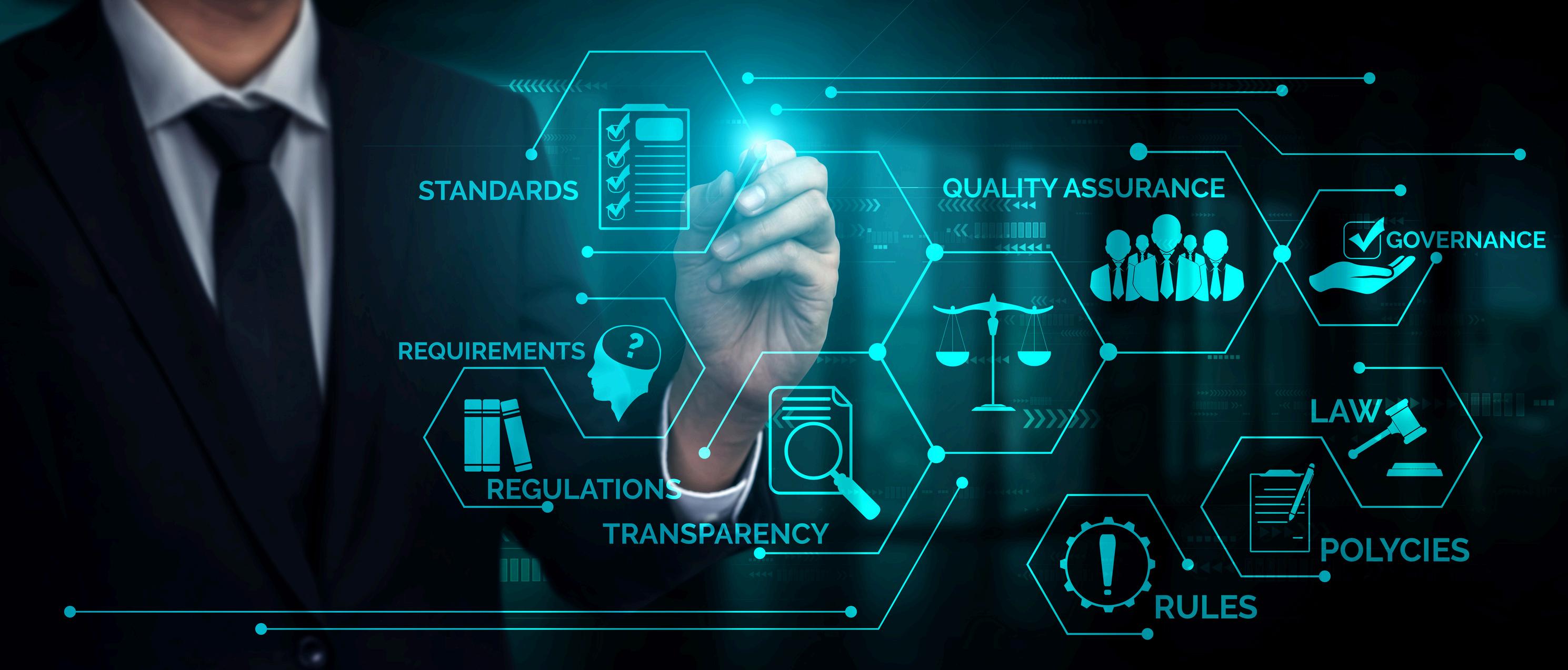
In the realm of India's energy transition, the convergence of solar power and energy storage technologies has emerged as a pivotal force driving sustainable development and shaping the nation's energy landscape As the country strives to meet its ambitious renewable energy targets and transition towards a low-carbon future, government policies and regulatory frameworks play a crucial role in unlocking the full potential of the solar+storage sector
Over the years, India has witnessed significant policy interventions and regulatory initiatives aimed at promoting renewable energy deployment, enhancing grid stability, and fostering innovation in the solar+storage domain. These policy measures, backed by a strong regulatory framework, have provided the necessary impetus for the growth of solar and storage technologies across diverse applications and market segments
At the forefront of India's solar+storage sector is the ambitious renewable energy target of achieving 500 GW of installed capacity by 2030, with a significant emphasis on solar power generation This target with subsequent renewable energy policies, has catalyzed unprecedented growth in India's solar energy sector, making it one of the world's largest solar markets
To support the integration of solar energy with storage technologies, policymakers have introduced various incentives, subsidies, and financial mechanisms aimed at reducing the cost of deployment and incentivizing investment in solar+storage projects. These include accelerated depreciation benefits, capital subsidies, tax incentives, and concessional financing schemes designed to attract both domestic and foreign investment in the sector
Moreover, regulatory frameworks such as net metering, feed-in tariffs, and renewable purchase obligations (RPOs) have been instrumental in promoting distributed solar generation, encouraging rooftop solar installations, and facilitating grid integration of renewable energy resources These regulatory mechanisms provide a framework for incentivizing solar energy adoption, enabling consumer participation, and ensuring fair compensation for renewable energy producers
In addition to promoting solar energy deployment, policymakers have recognized the critical role of energy storage in enhancing grid stability, managing intermittency, and enabling renewable energy integration As a result, several states and regulatory authorities have introduced specific mandates and regulations focused on energy storage deployment, including storage procurement targets, grid codes, and ancillary service requirements
Furthermore, initiatives such as the National Energy Storage Mission (NESM) and the National Smart Grid Mission (NSGM) underscore the government's commitment to accelerating the deployment of energy storage technologies and fostering innovation in the sector. These missions aim to address key challenges related to energy storage deployment, including technology development, manufacturing capabilities, and regulatory barriers
Looking ahead, the regulatory outlook for India's solar+storage sector remains optimistic, with policymakers continuing to prioritize renewable energy deployment, grid modernization, and energy security Initiatives such as the Green Energy Corridors project, which aims to strengthen transmission infrastructure for renewable energy evacuation, and the establishment of renewable energy zones, are expected to further facilitate the integration of solar and storage technologies into the grid
The recent announcement of the Production Linked Incentive (PLI) scheme for battery manufacturing and the proposed amendments to the Electricity Act, 2003, to incorporate provisions for energy storage, signal the government's commitment to promoting indigenous manufacturing and fostering innovation in the energy storage sector
In conclusion, government policies and regulatory frameworks play a pivotal role in shaping India's solar+storage sector, providing the necessary incentives, frameworks, and support mechanisms to accelerate the adoption of renewable energy and energy storage technologies With continued policy support, strategic investments, and stakeholder collaboration, India has the potential to emerge as a global leader in solar+storage innovation, driving sustainable development and powering the nation towards a cleaner, more resilient energy future.

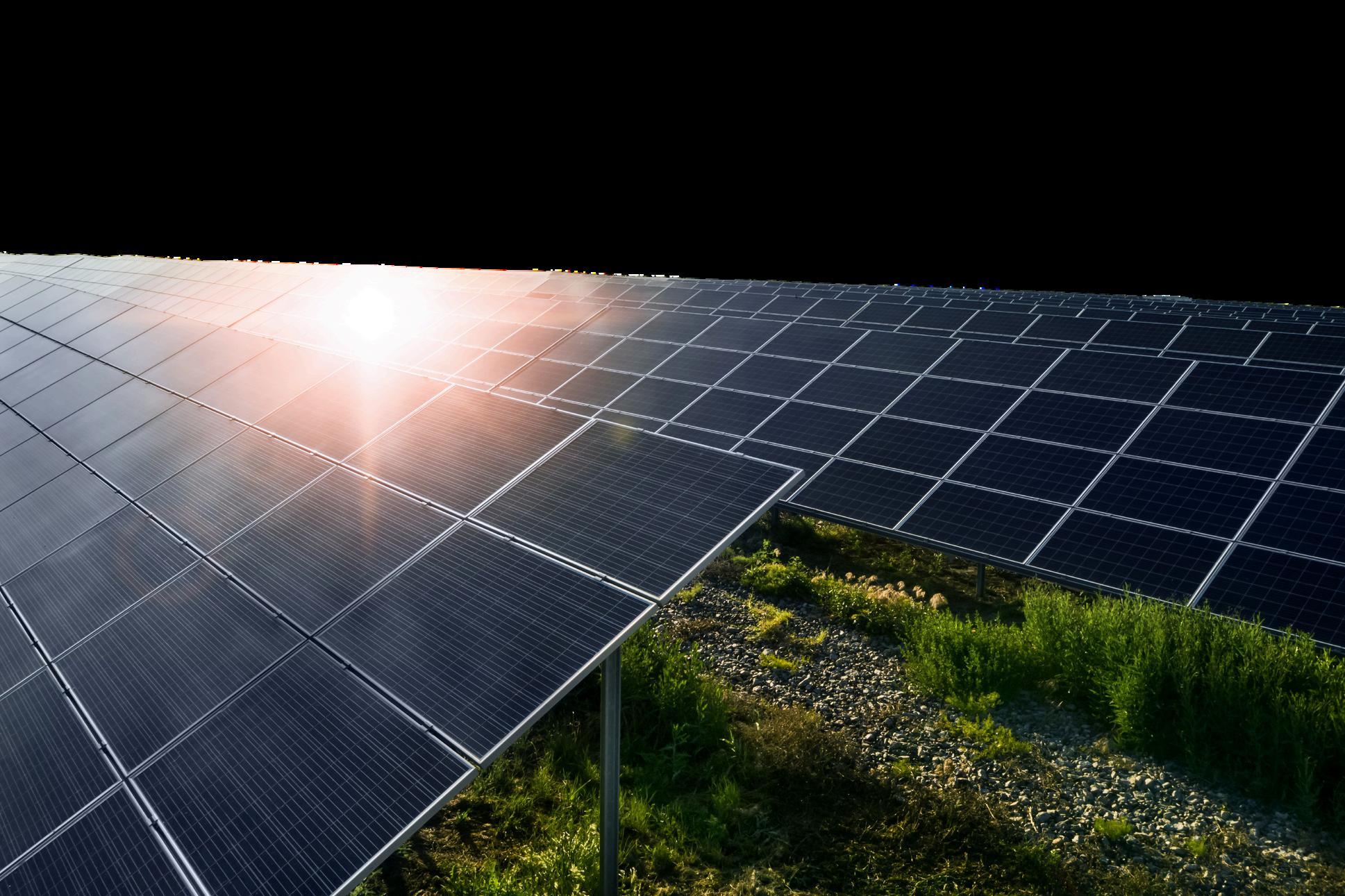
In India, a remarkable surge in the embrace of solar energy has emerged, driven by the declining costs of solar technology This reduction, complemented by advancements in solar photovoltaic (PV) technology and expanded manufacturing capabilities, has ignited widespread interest among developers and investors across the nation As of February 2024, the installed solar PV capacity stands at an impressive 75,575 81 MW, representing a commanding 55 34% share of the total renewable capacity (excluding large hydro)
In a recent development, the Ministry of New and Renewable Energy (MNRE) announced the reinstatement of the Approved Models and Manufacturers of Solar Photovoltaic Modules (ALMM) Order, effective from April 1st, 2024 This directive aims to regulate solar PV modules, primarily for government-sponsored or subsidized projects, ensuring quality and reliability in solar installations
INDIA RENEWABLE ENERGY MIX (FEBRUARY 2024)
SOURCE:MNRE,SOLARQUARTERRESEARCH
As of February 2024, India's total installed renewable capacity stands at an impressive 136 57 GW, with significant contributions from wind power, small hydropower, biomass, and waste-to-energy Solar and wind power capacities combined constitute approximately 88 40% of the total renewable capacity, excluding large hydropower, reaffirming India's leading position in renewable energy adoption
India's commitment to sustainable development and environmental stewardship is evident in its strategic alignment with global efforts to combat climate change. Solar energy, known for its minimal greenhouse gas emissions, plays a pivotal role in reducing India's carbon footprint and mitigating the impacts of climate change The installed solar PV capacity for ground-mounted solar reaches 59 074 GW, with an additional 2 57 GW under Hybrid Solar Components
A significant trend in India's solar energy landscape is the decentralization of power generation, particularly through rooftop solar installations With an impressive capacity of 11 078 GW on homes, businesses, and industrial buildings, rooftop solar not only enhances energy security but also empowers individuals and businesses to actively contribute to cleaner energy production
In rural areas, where access to electricity is often limited, solar power has emerged as a vital resource, transforming lives and driving economic development Off-grid solar solutions, including solar lanterns and microgrids, have brought electricity to remote communities, elevating living standards and fostering inclusive growth
India's success in solar energy underscores the synergy between government initiatives, technological advancements, and increasing awareness of the environmental and economic benefits of renewable energy With over 55 34% of the total renewable installed capacity attributed to solar energy, India serves as a model for how concerted efforts towards sustainability can yield tangible results in the transition to clean energy
As India continues to prioritize solar power, it is poised to play a central and influential role in shaping the future of the global renewable energy landscape, inspiring nations worldwide to embrace the potential of solar energy
Explore India's dynamic shift towards solar energy, driven by cost reductions, technological advancements, and government support Learn how solar power dominates over 55% of the country's renewable capacity as of February 2024, shaping its sustainable energy landscape and global influence

